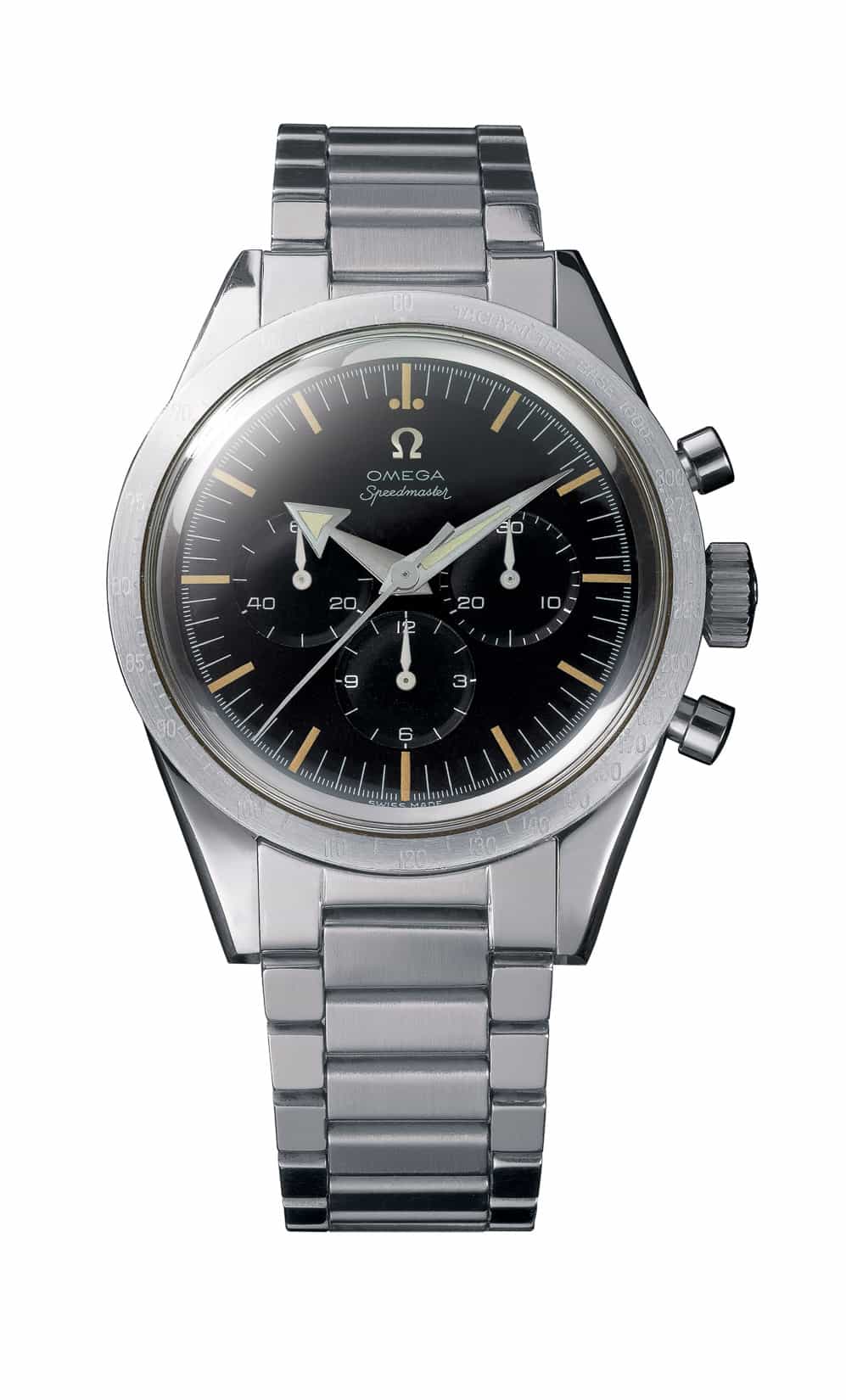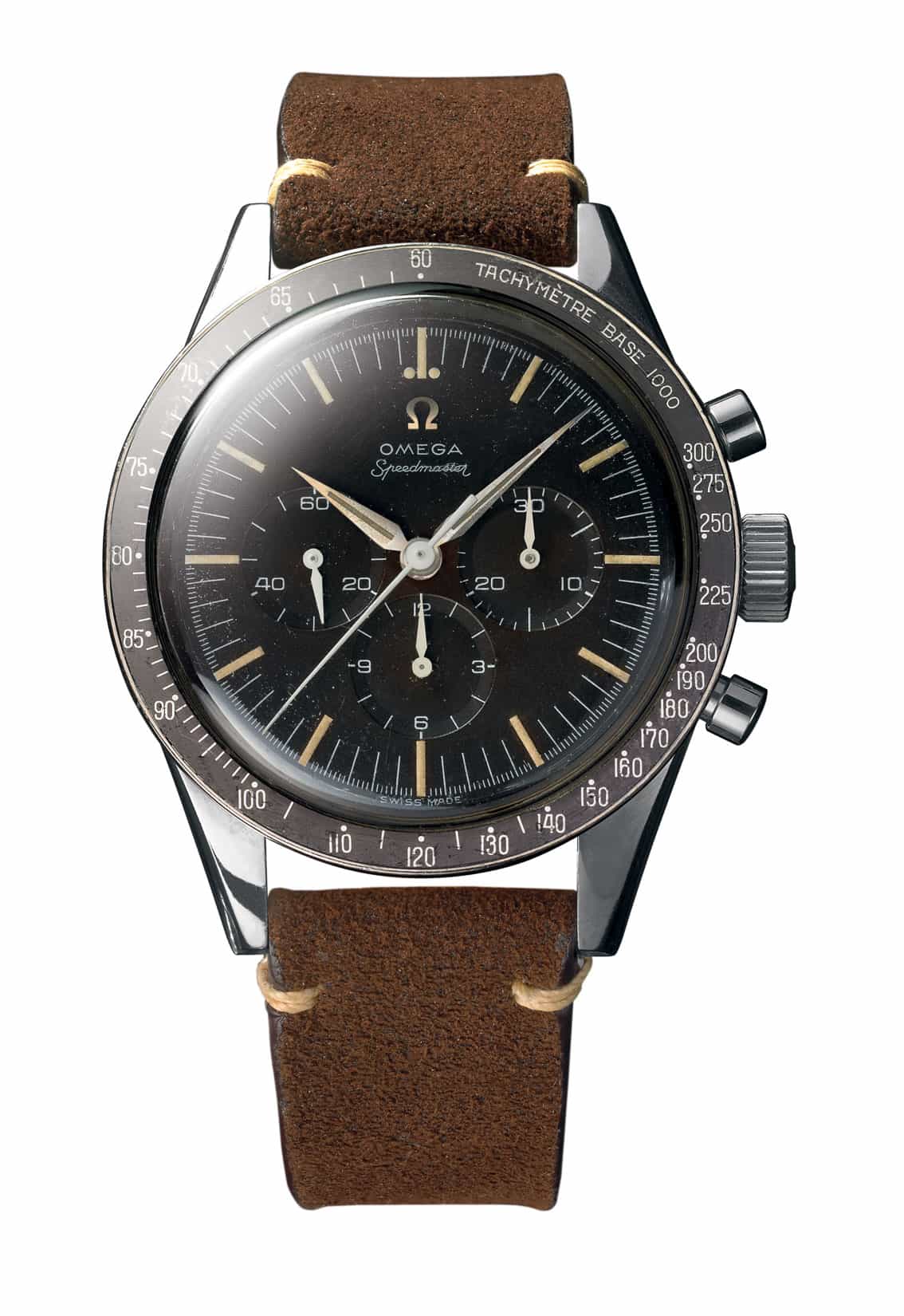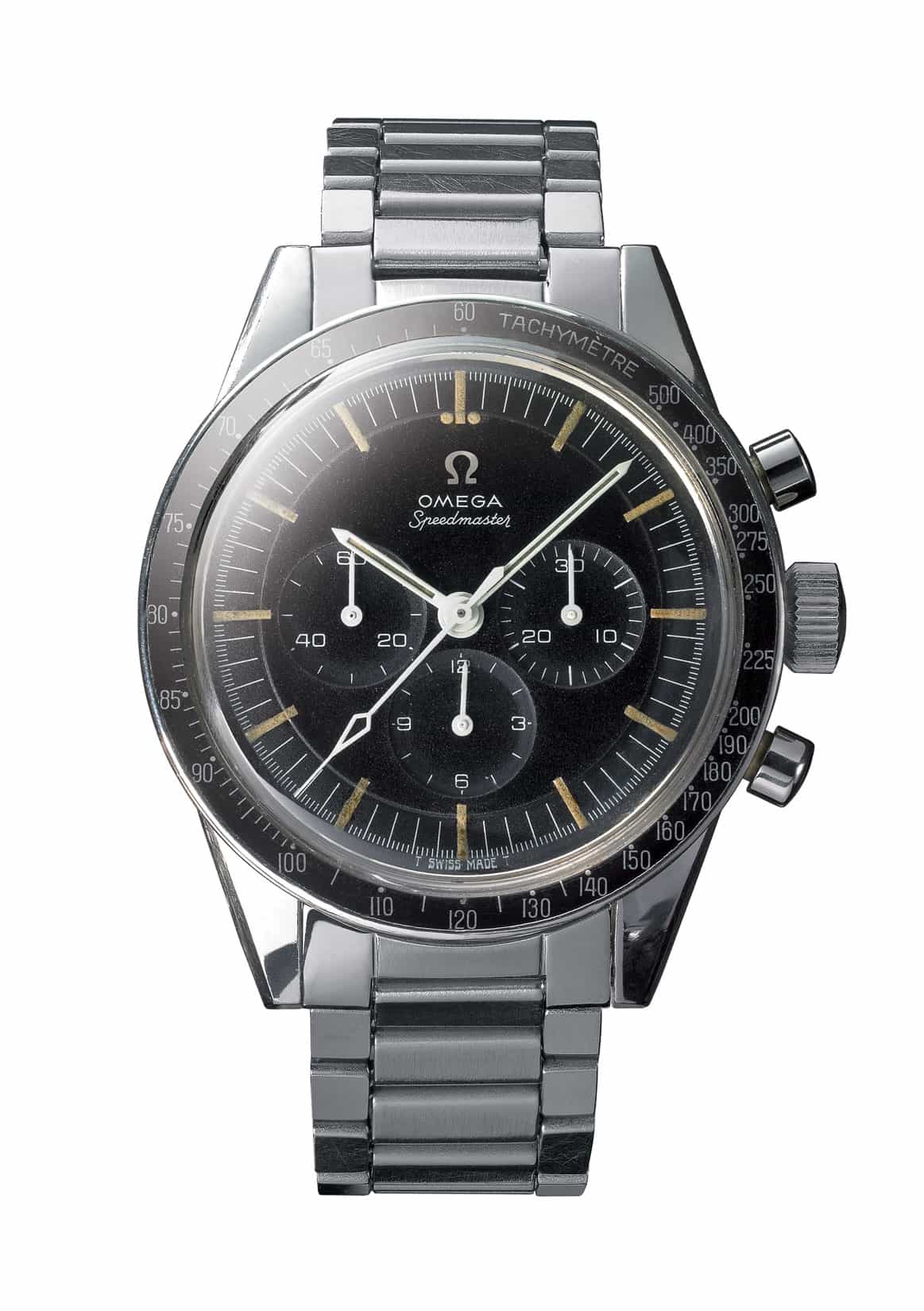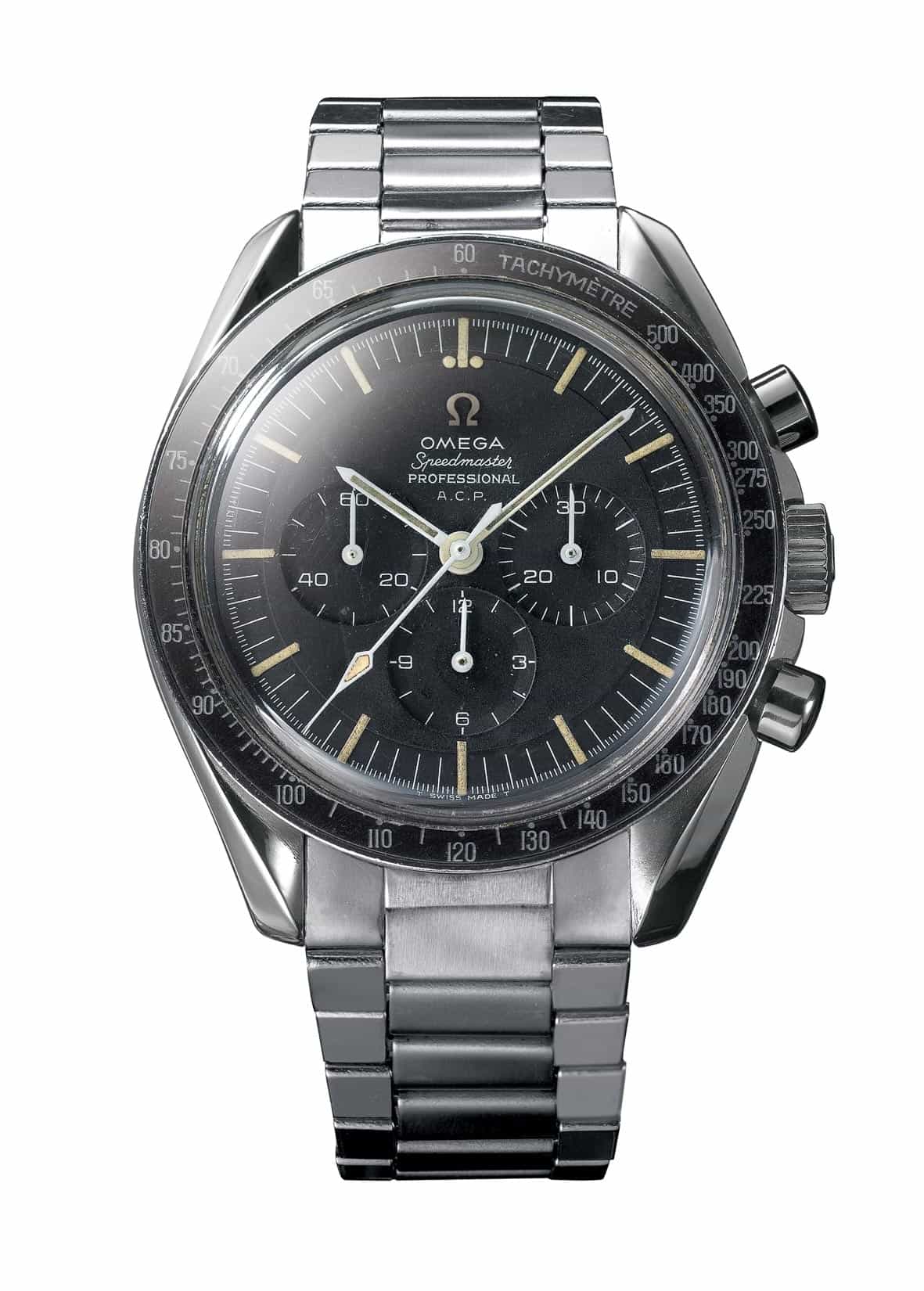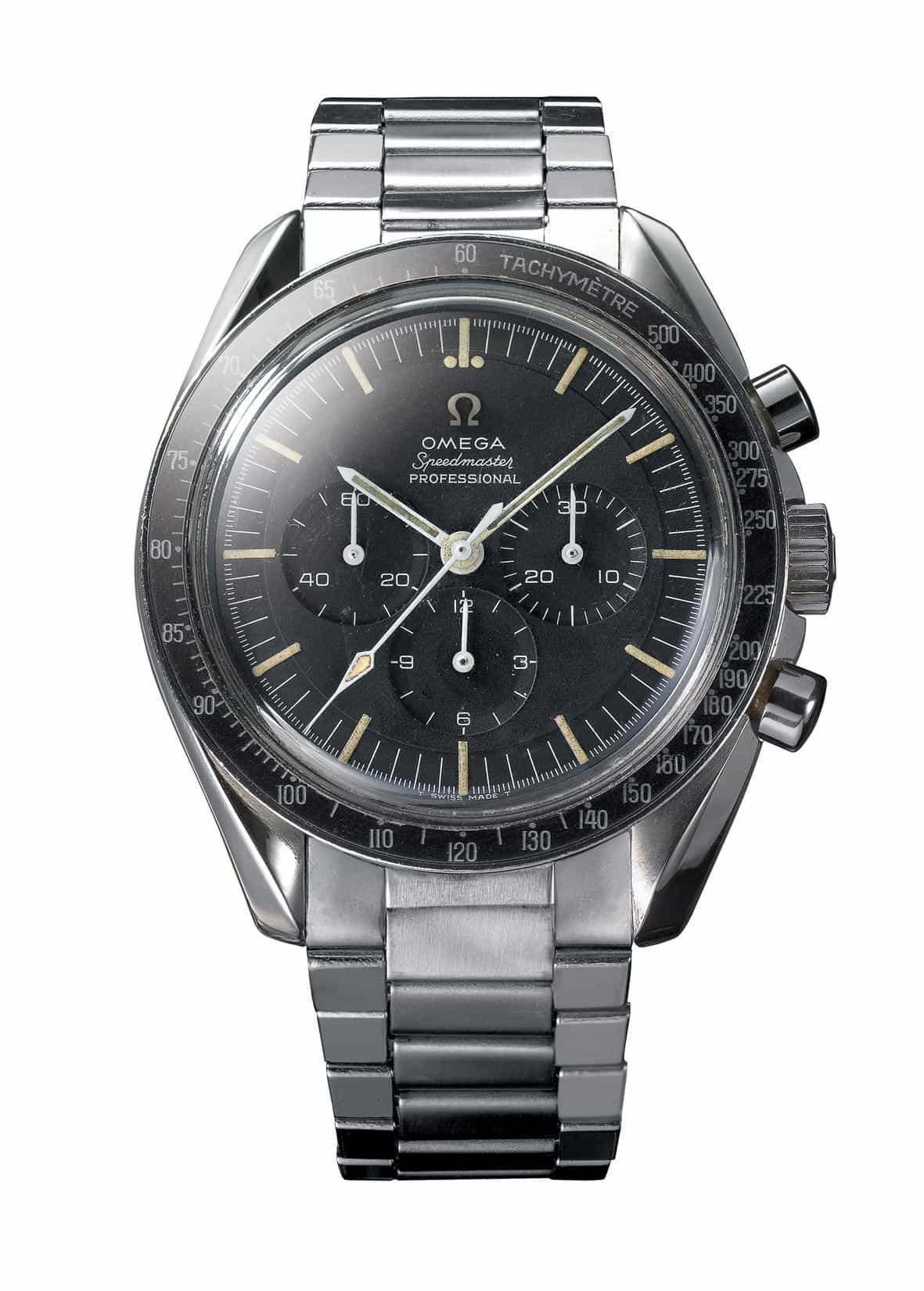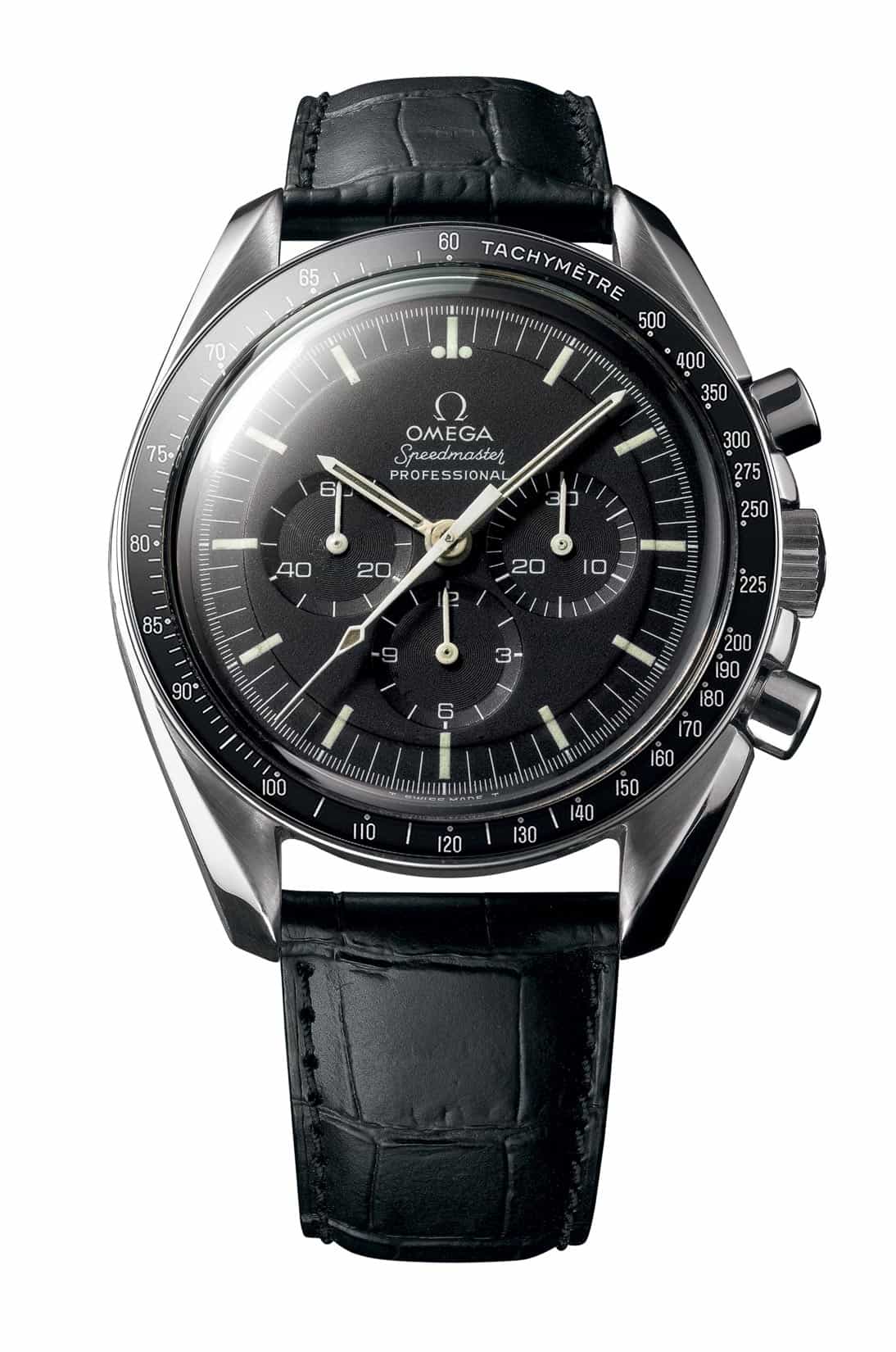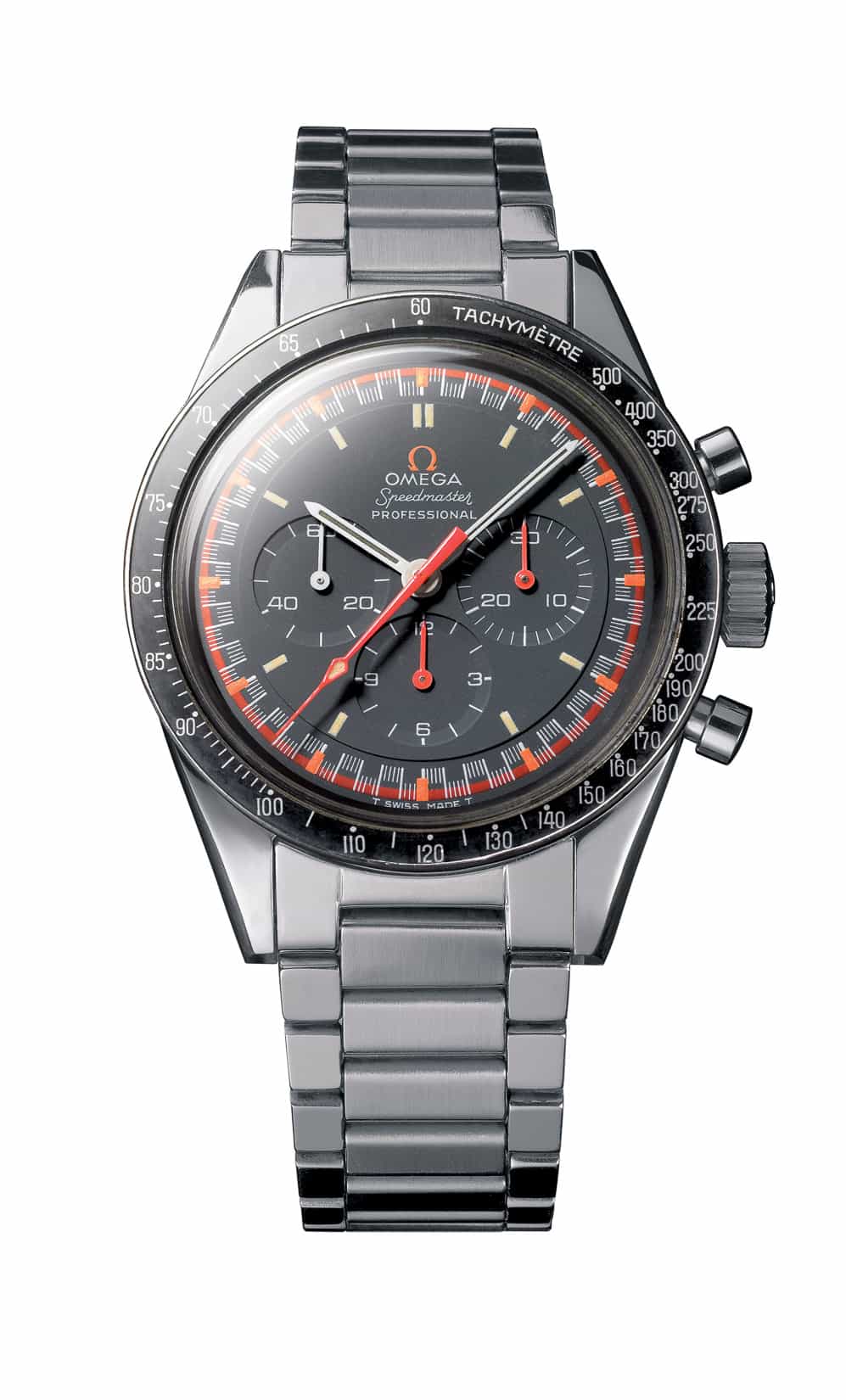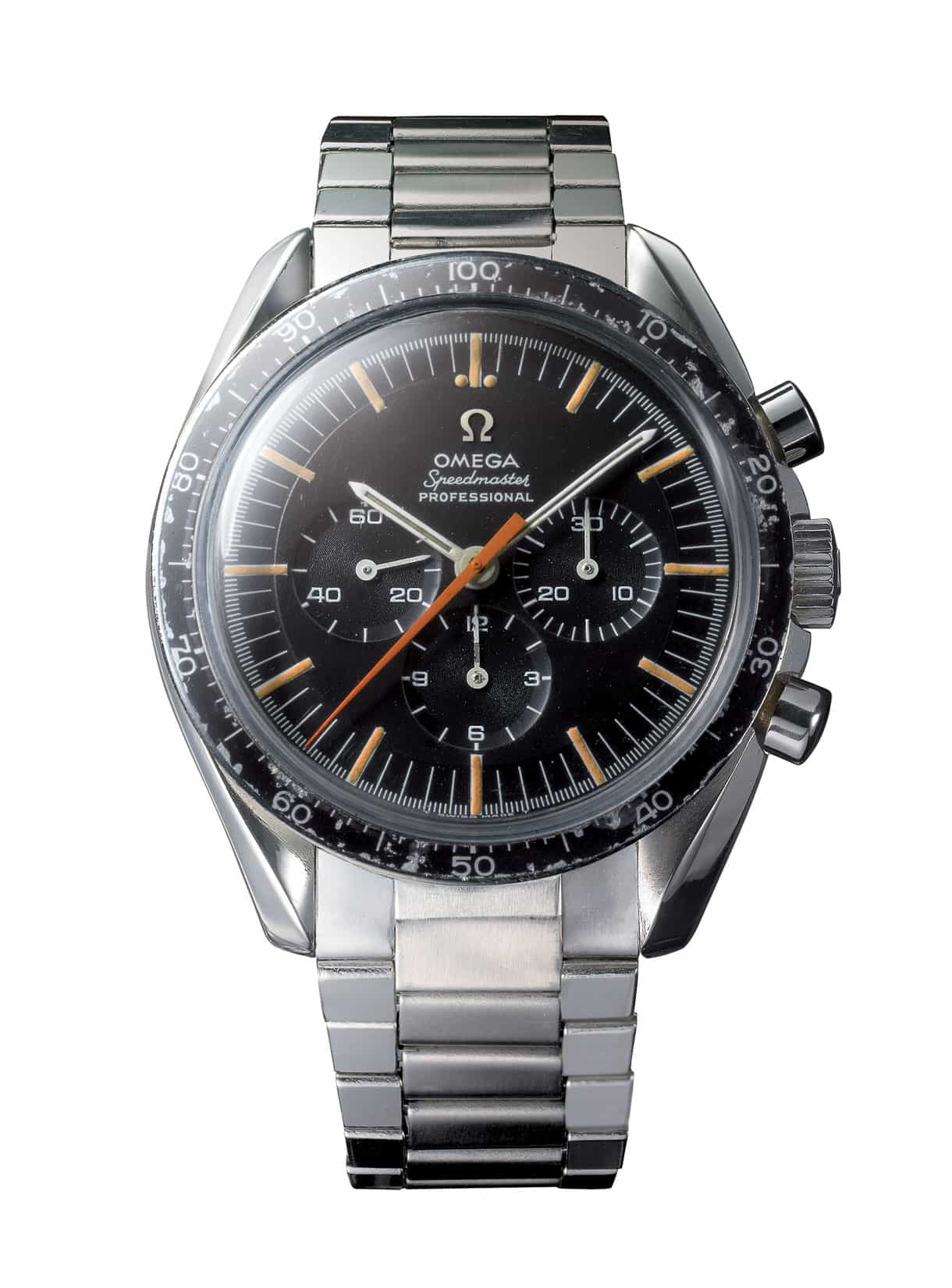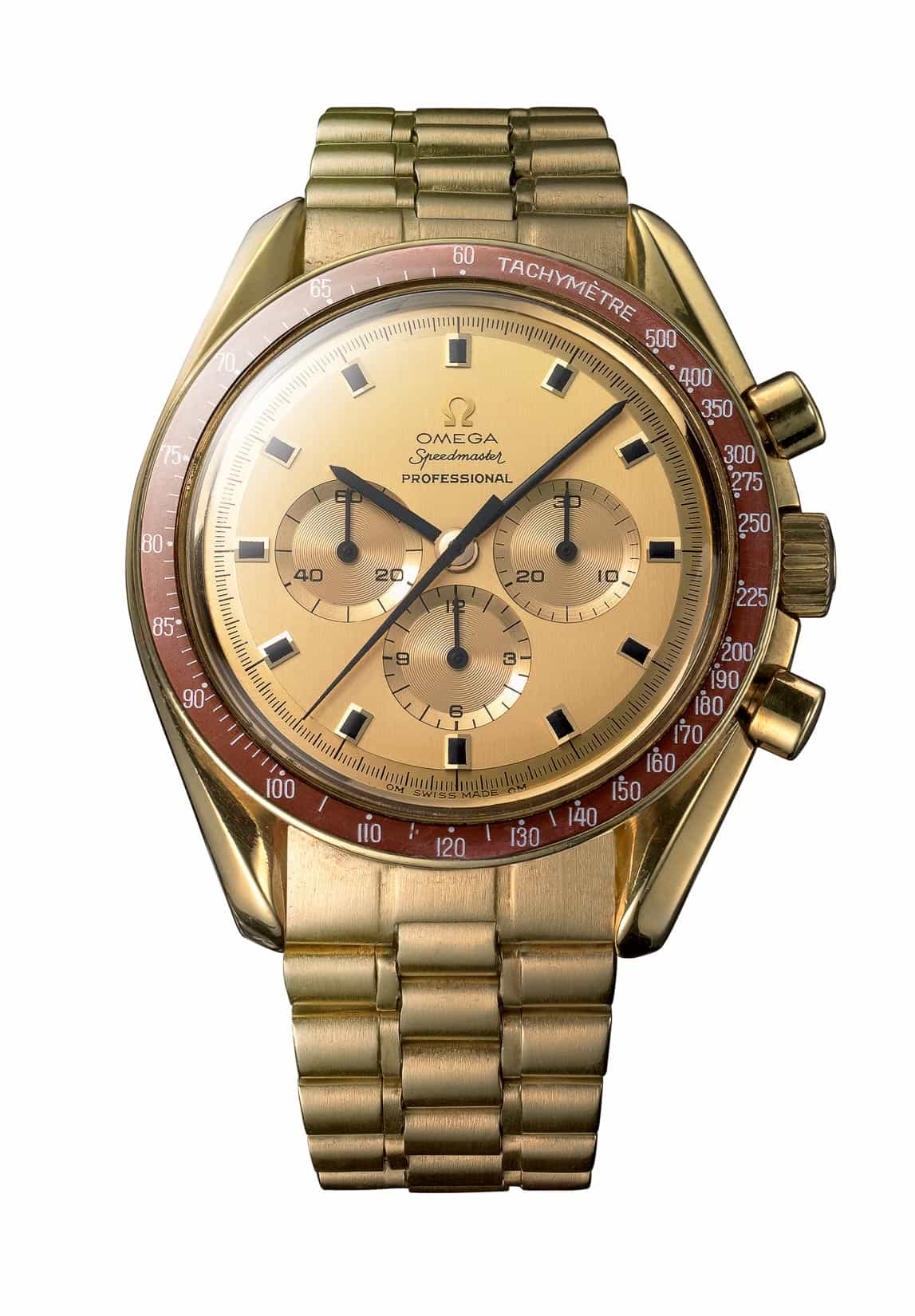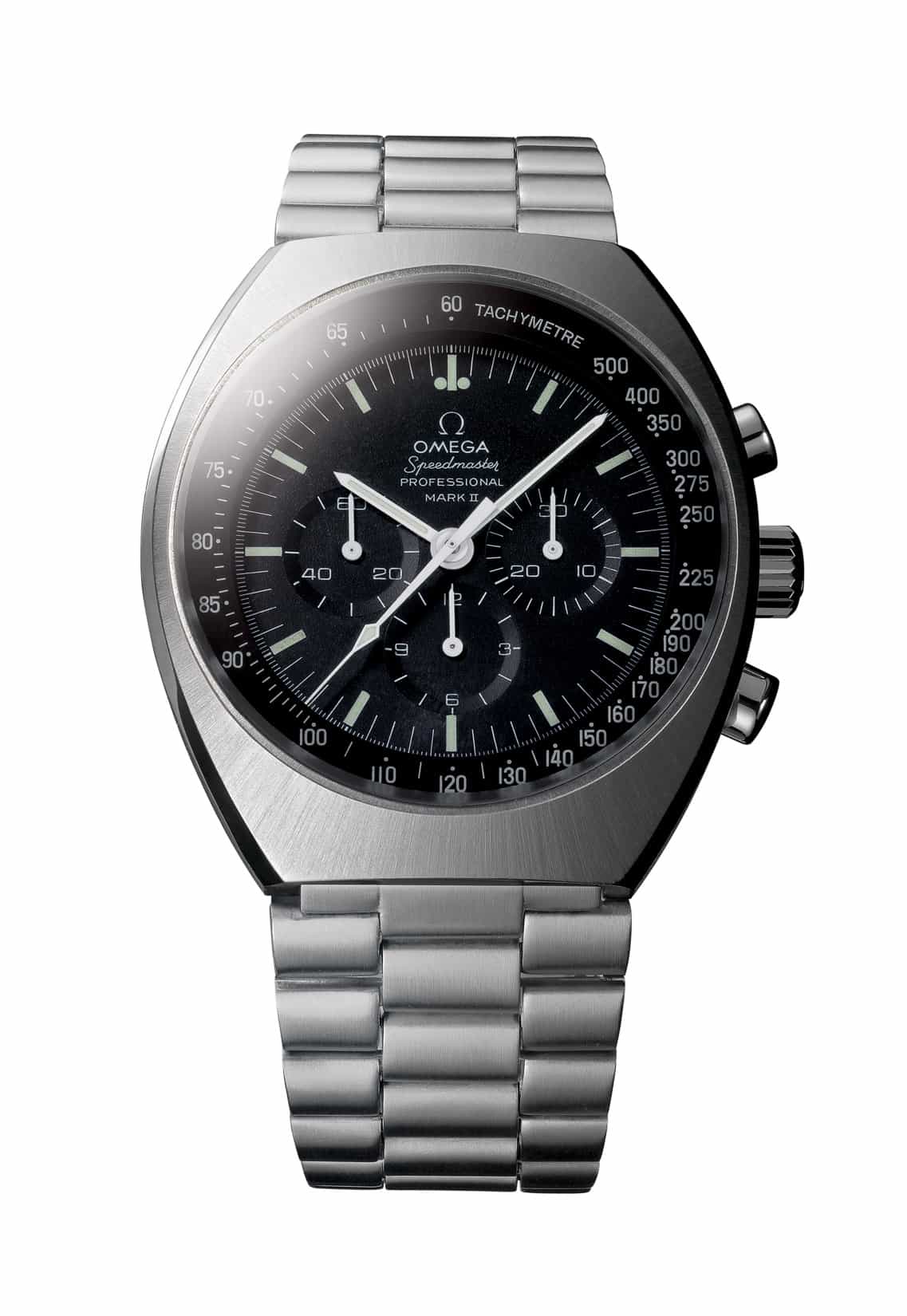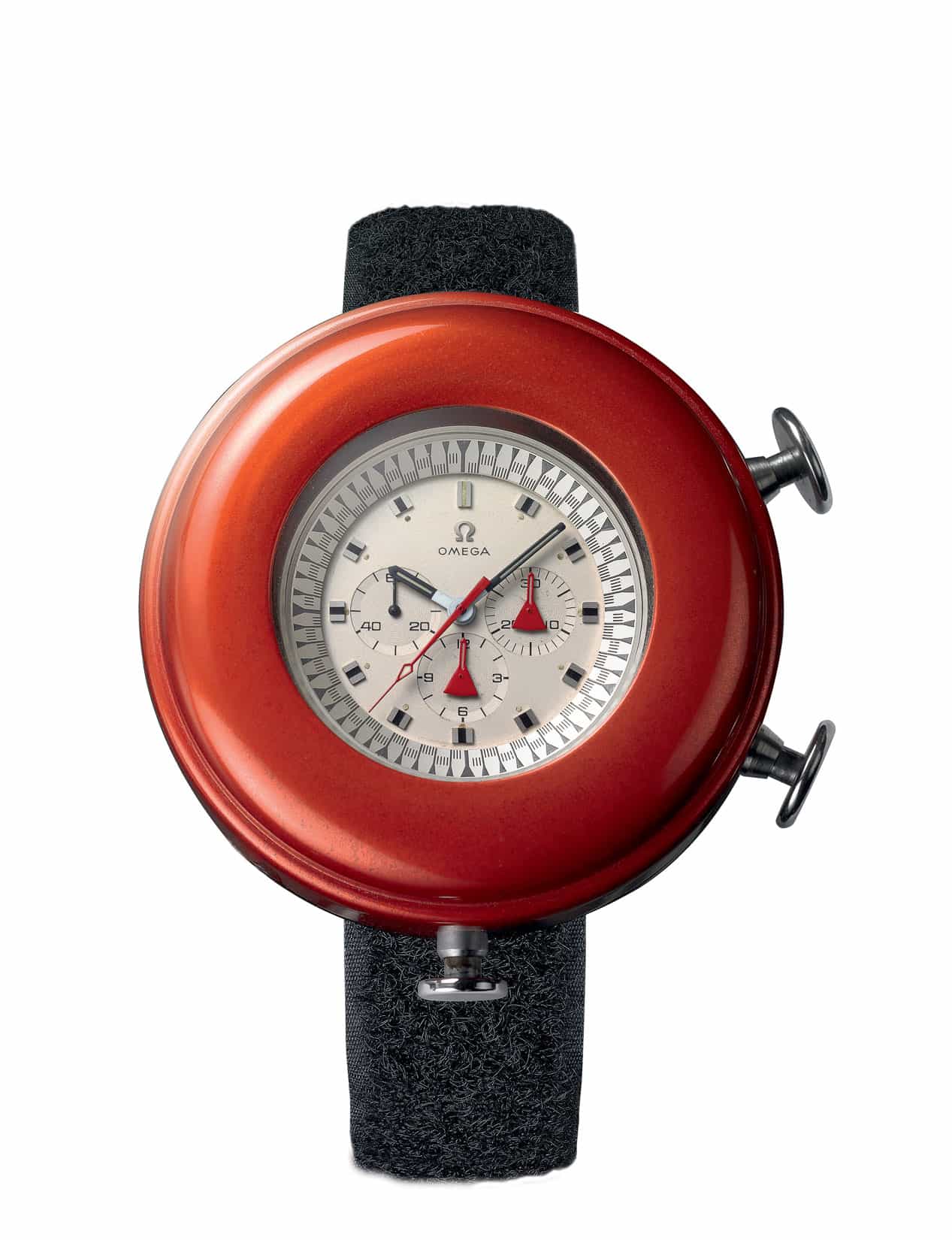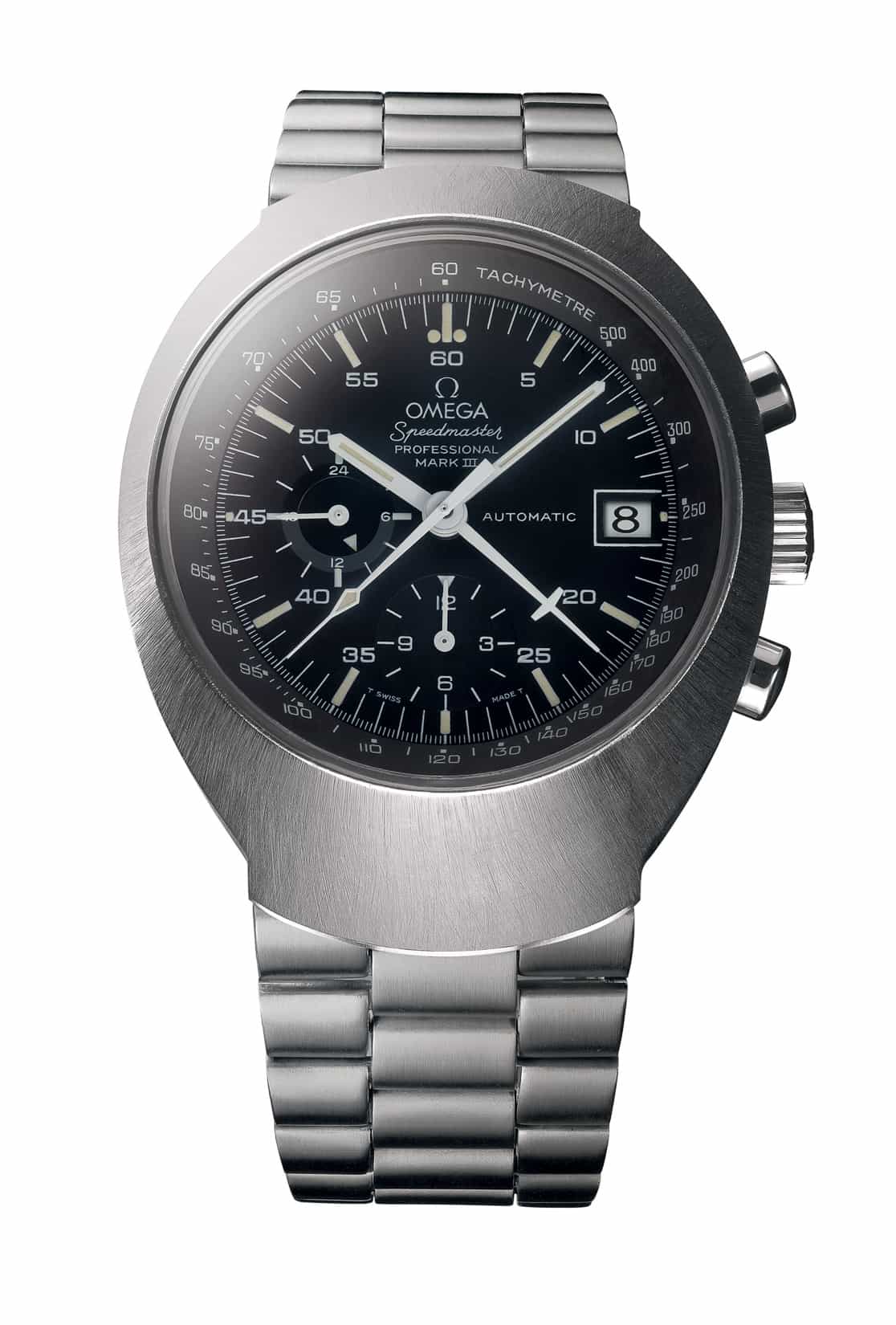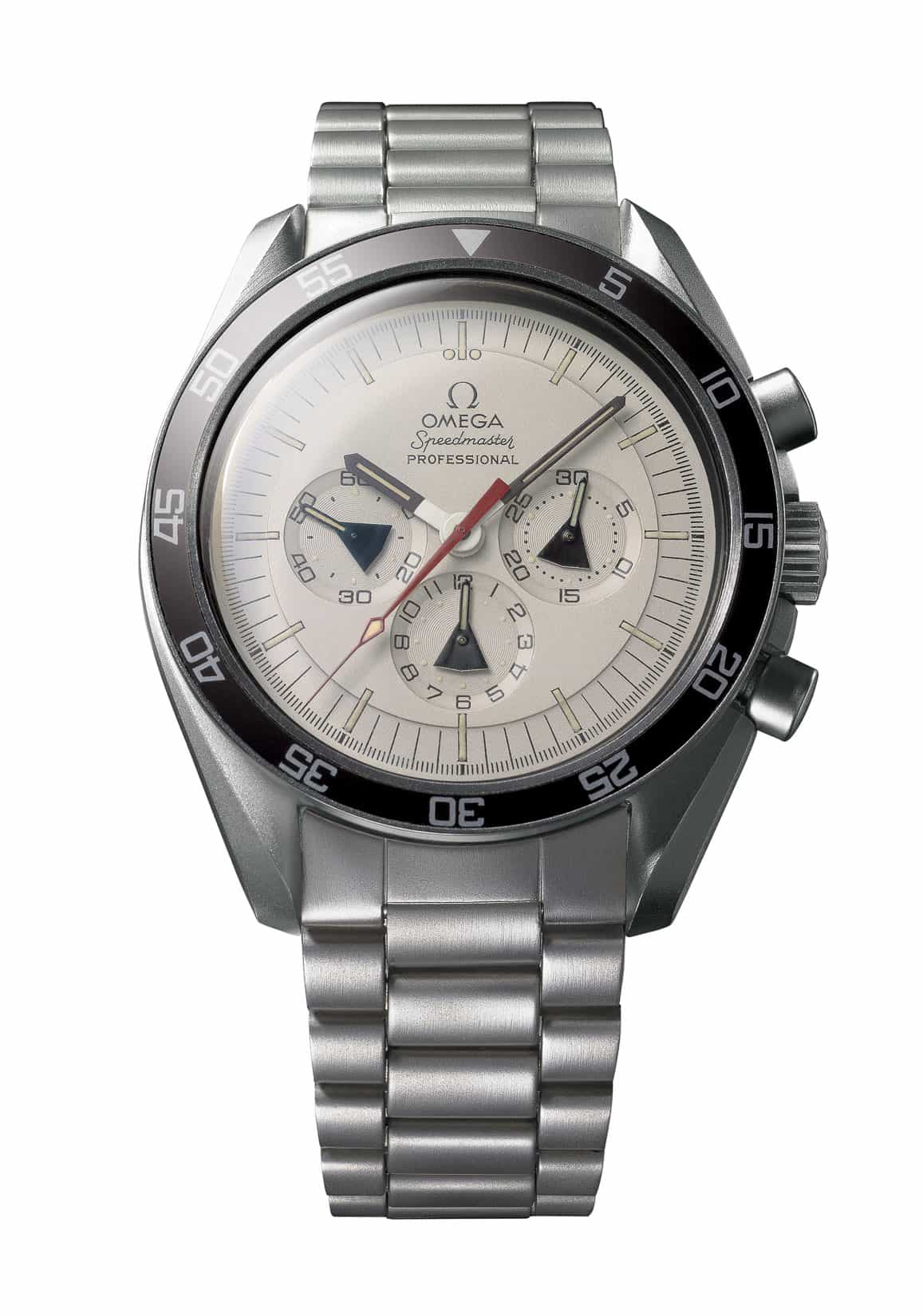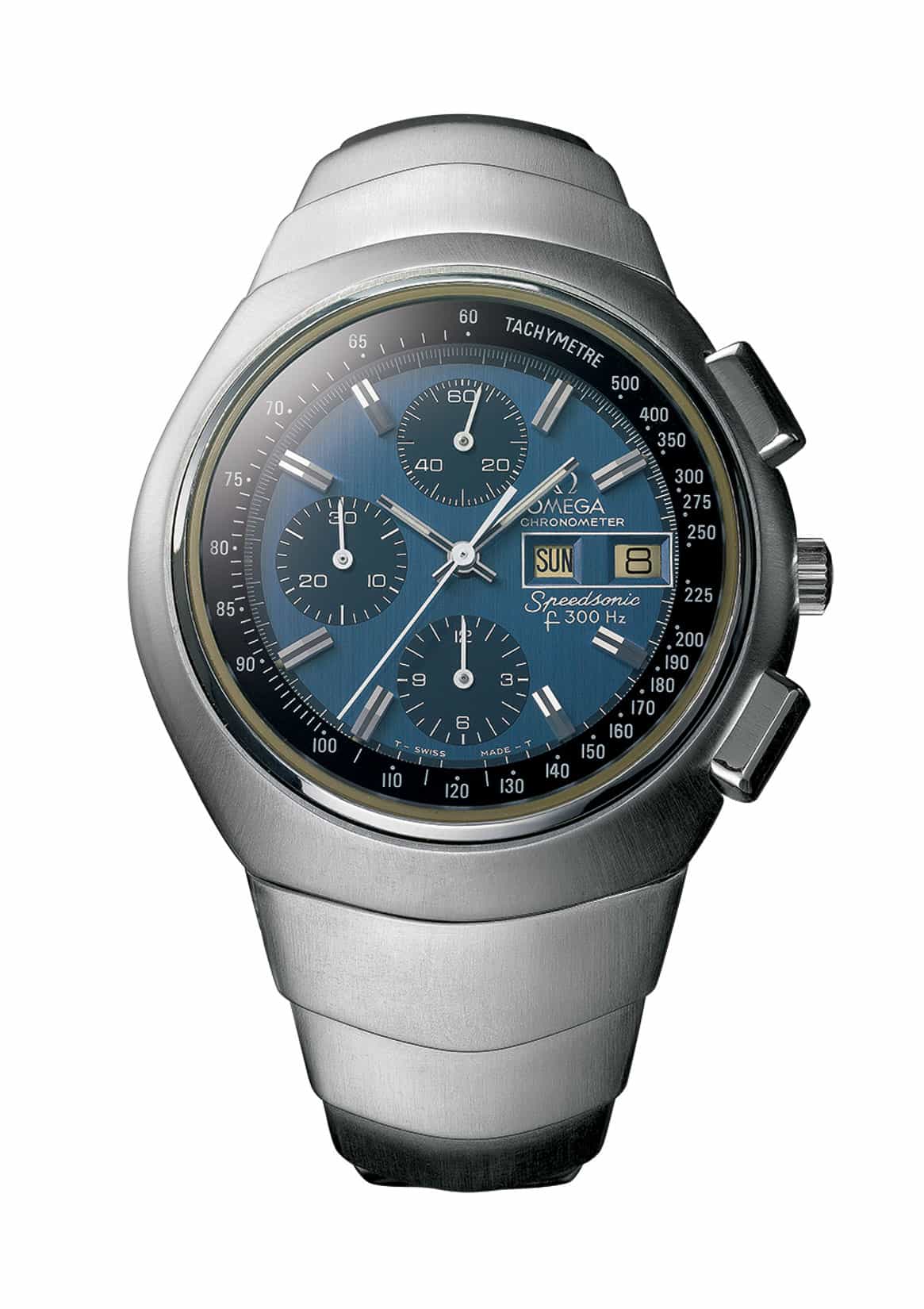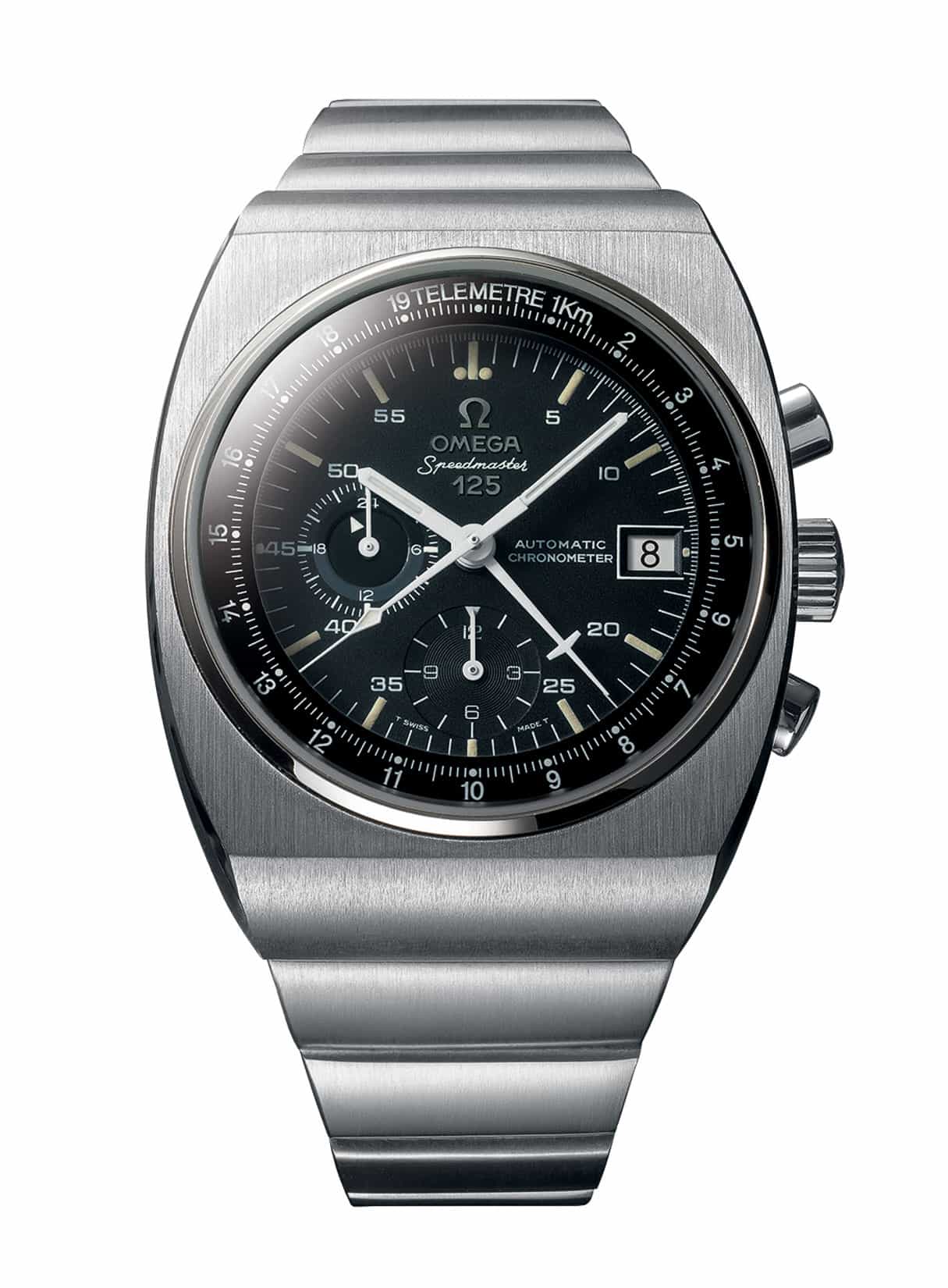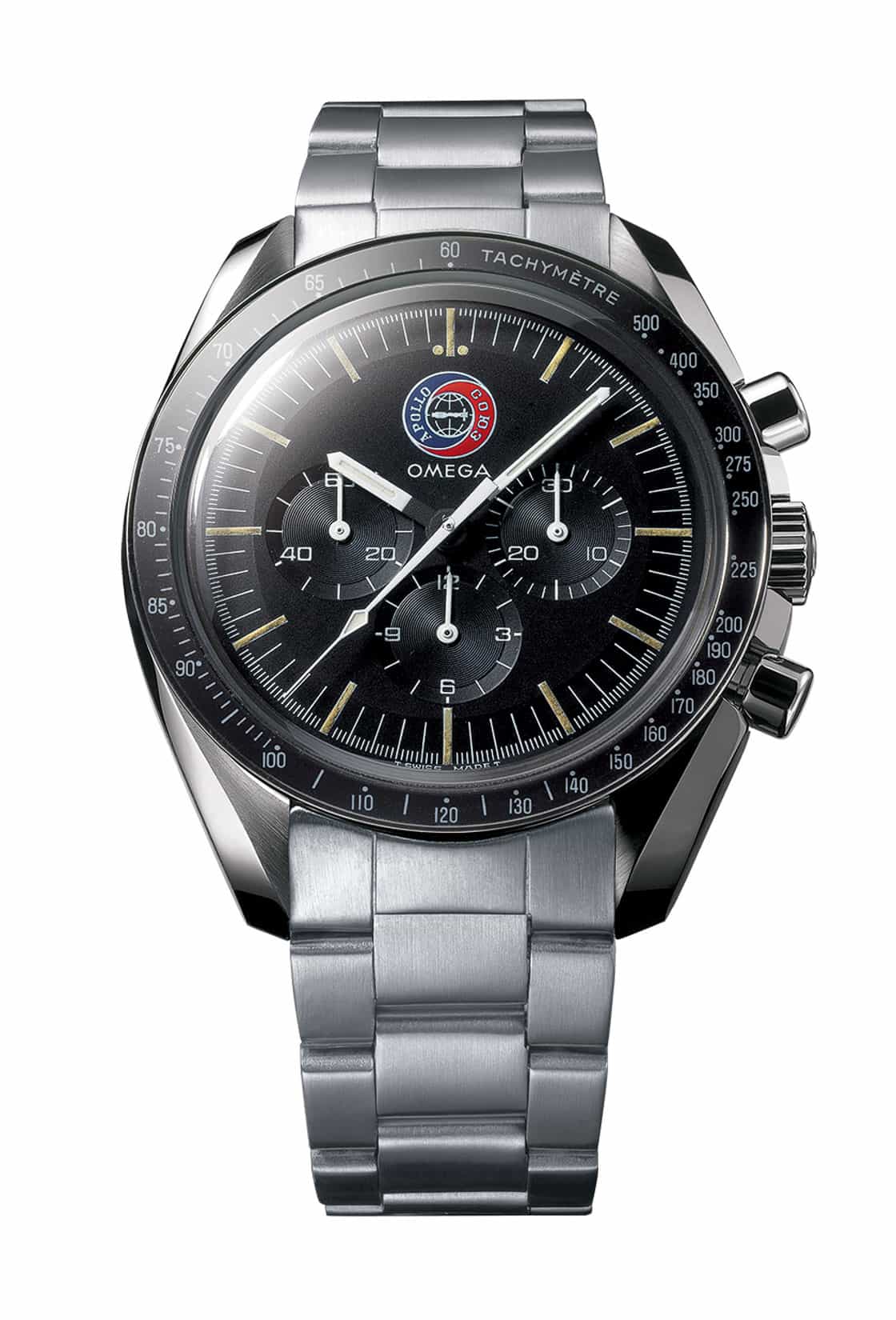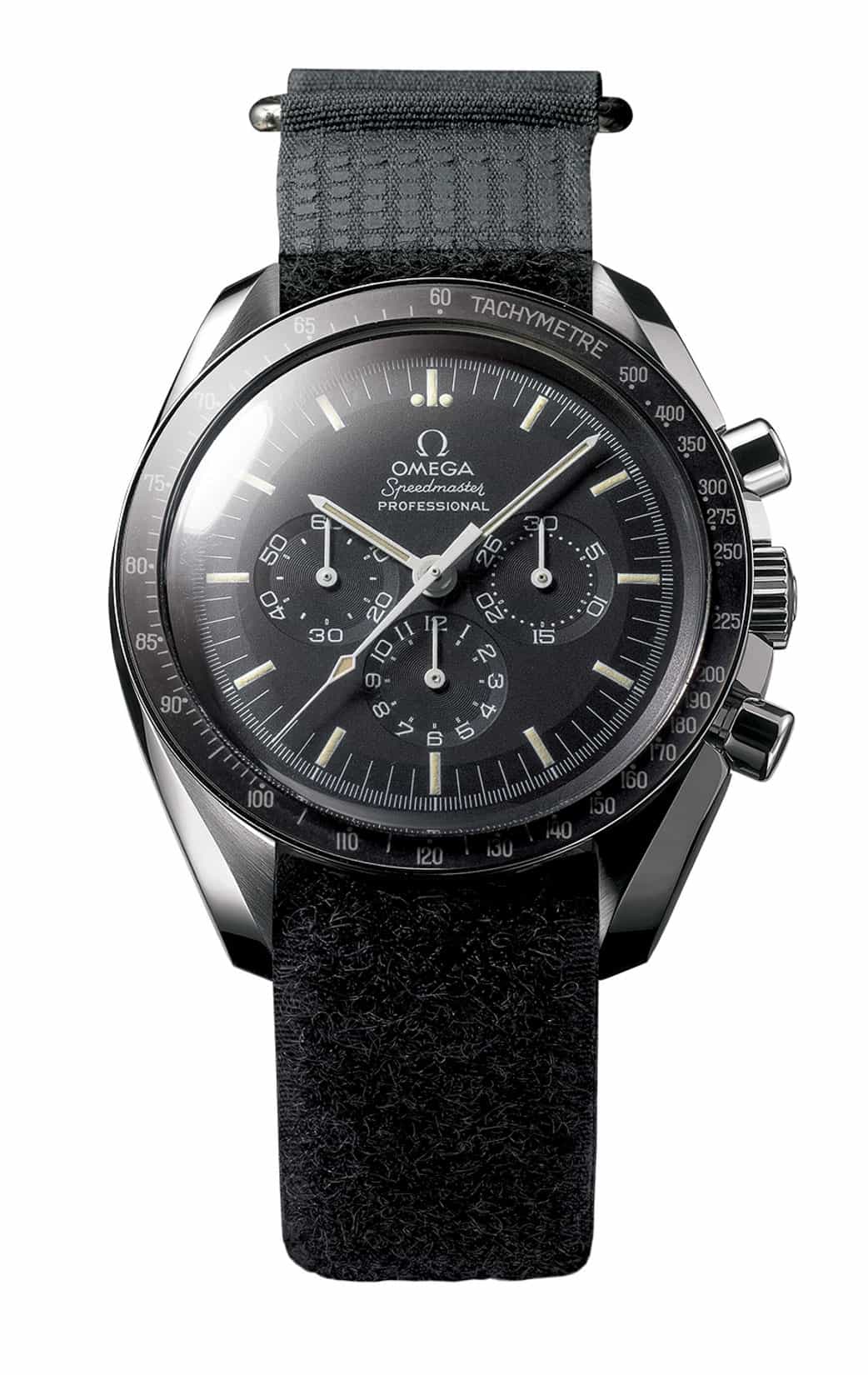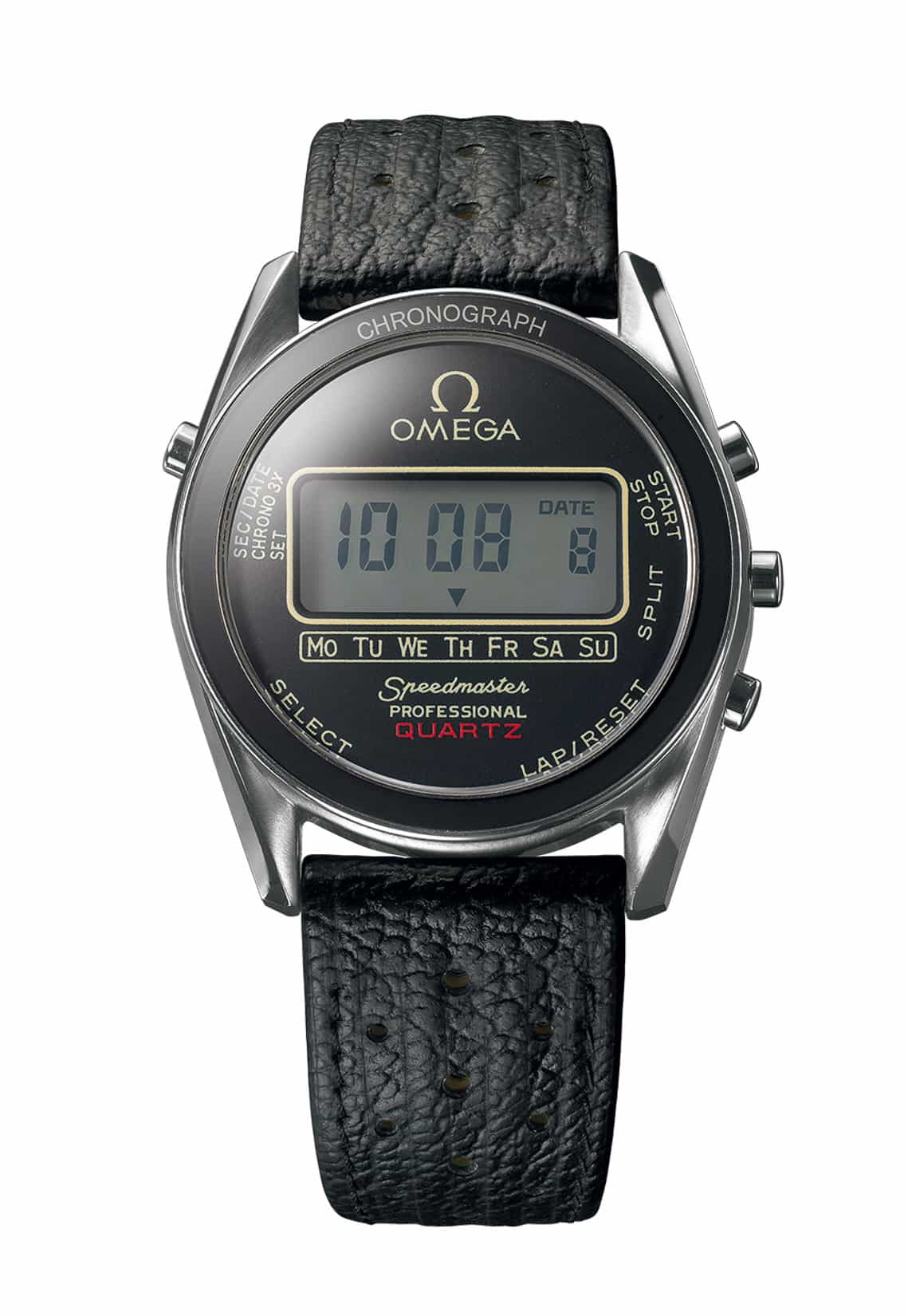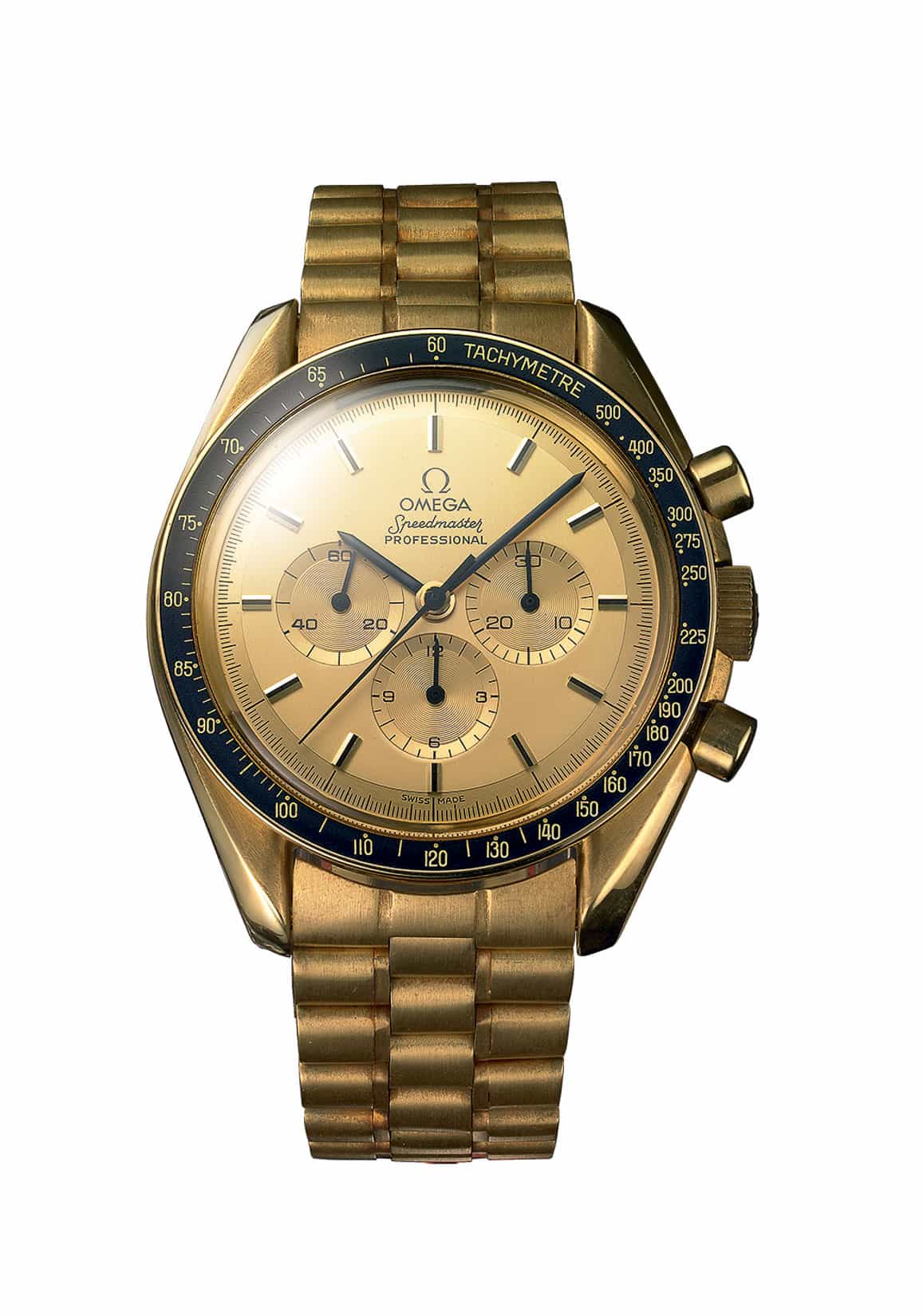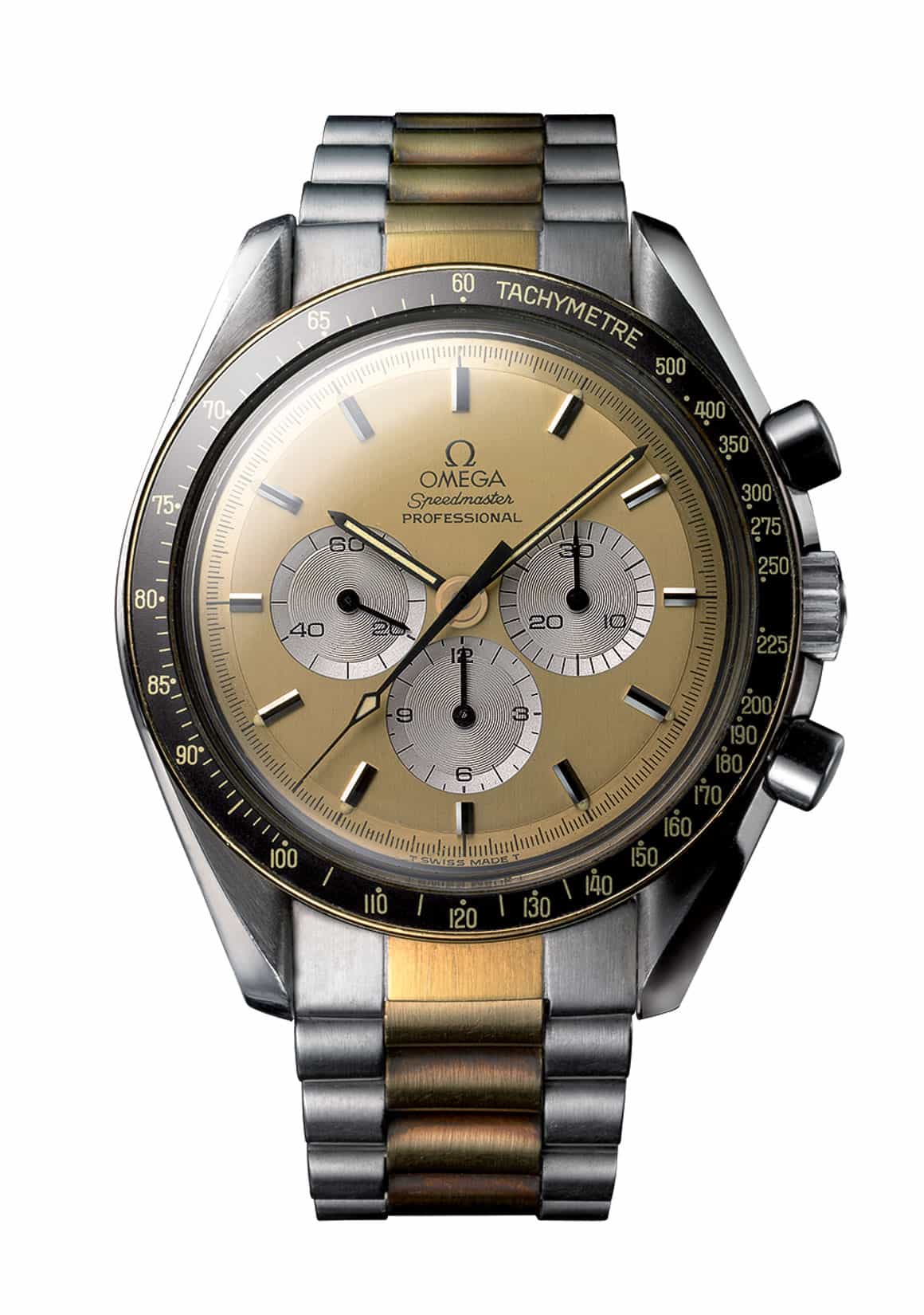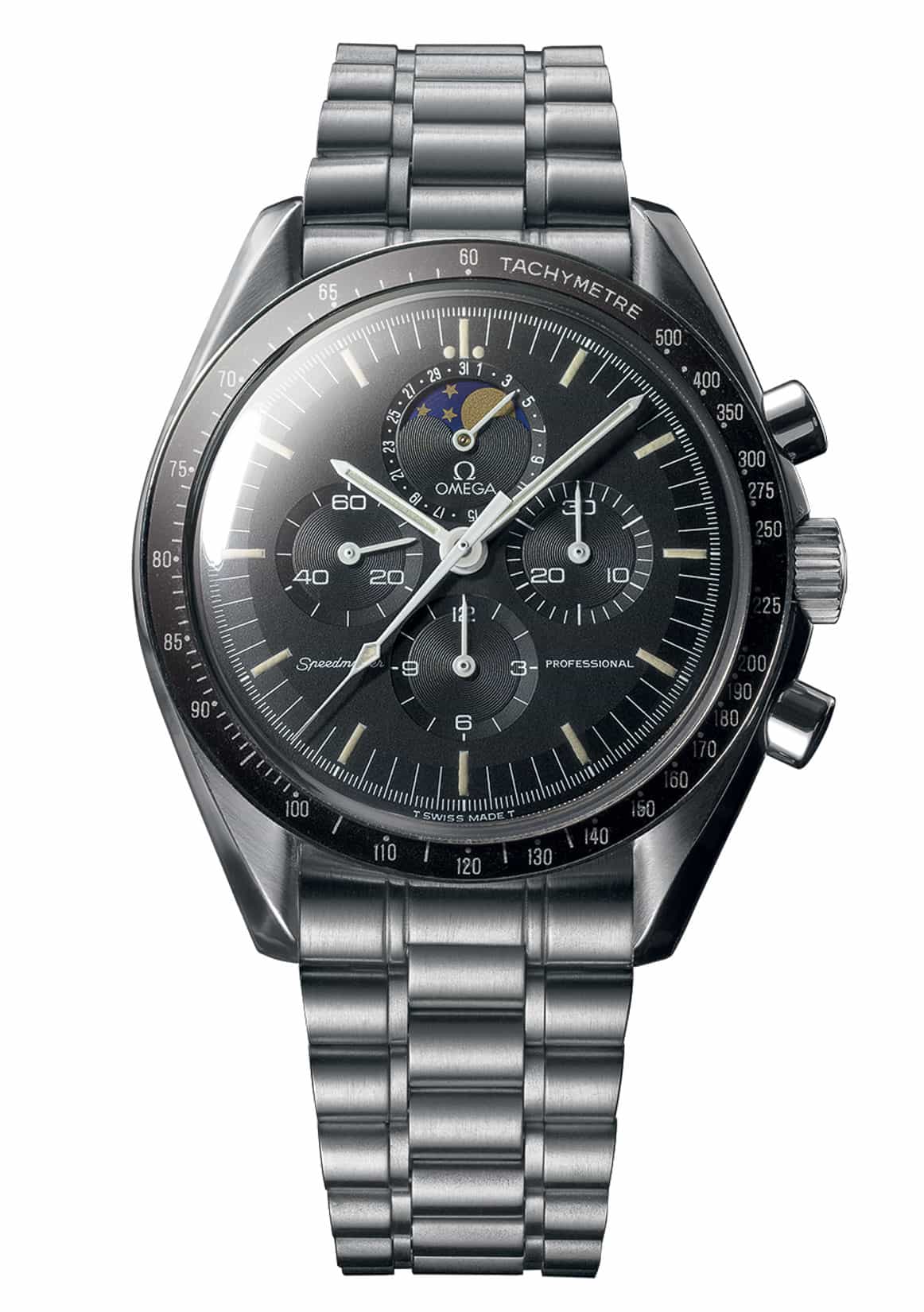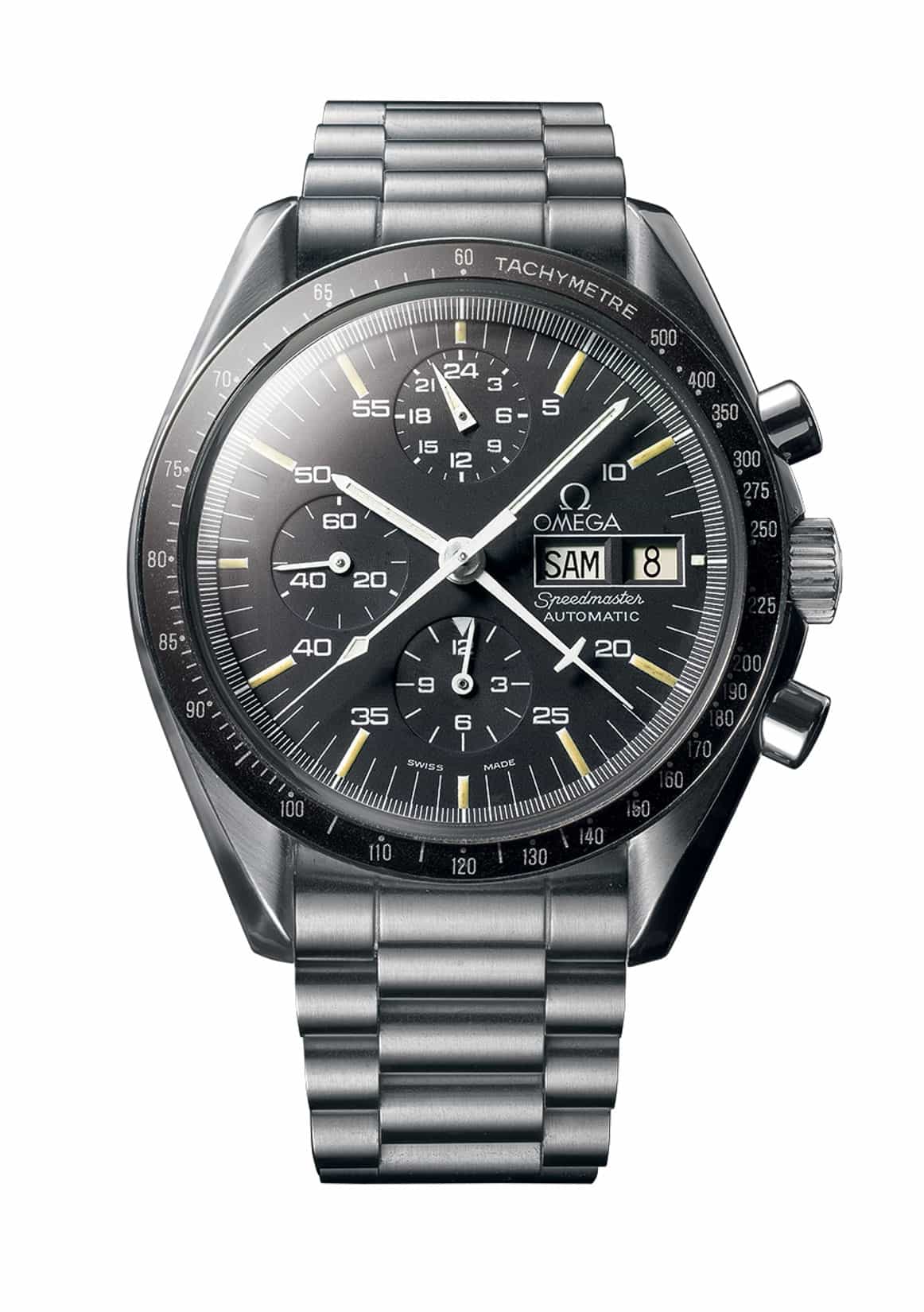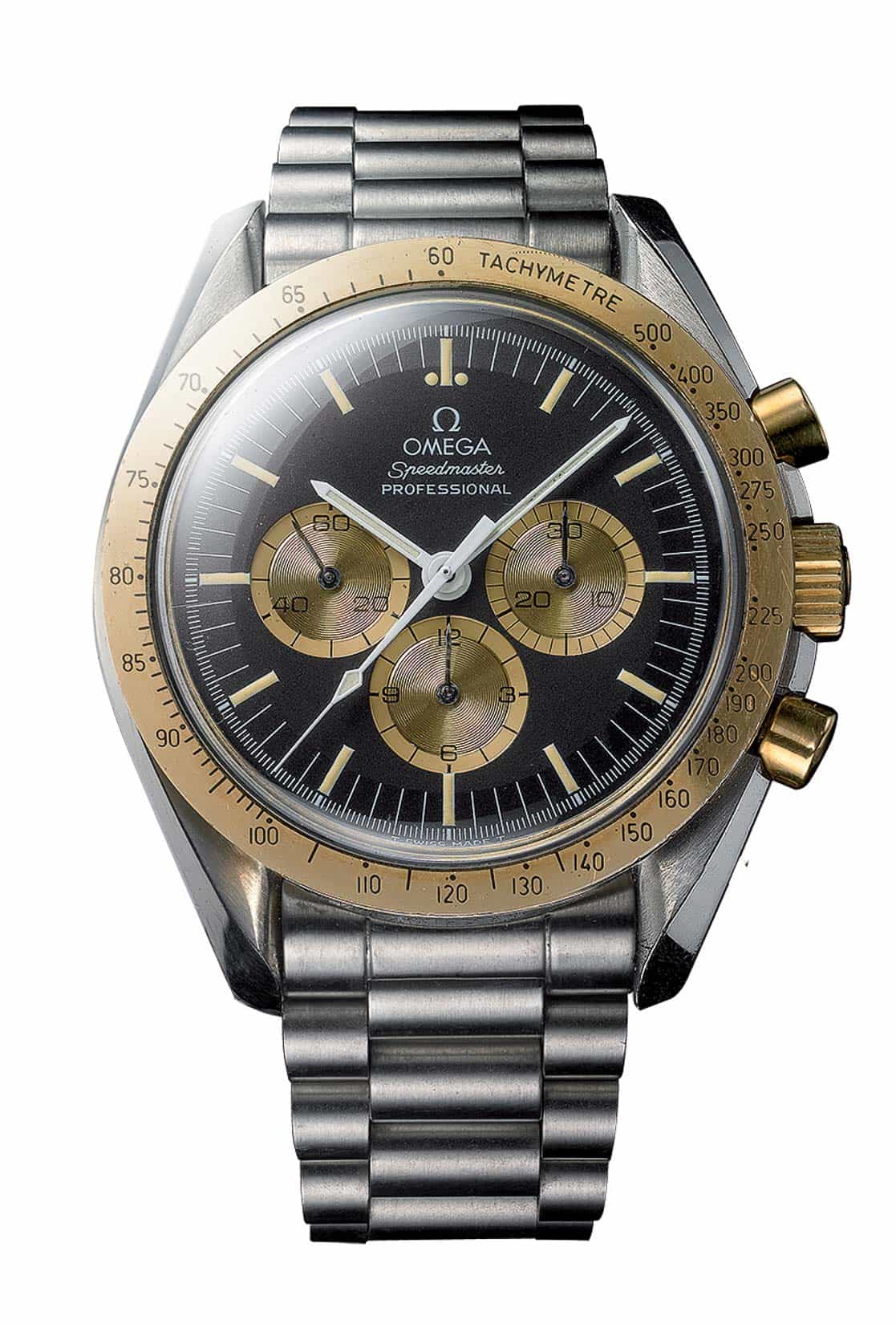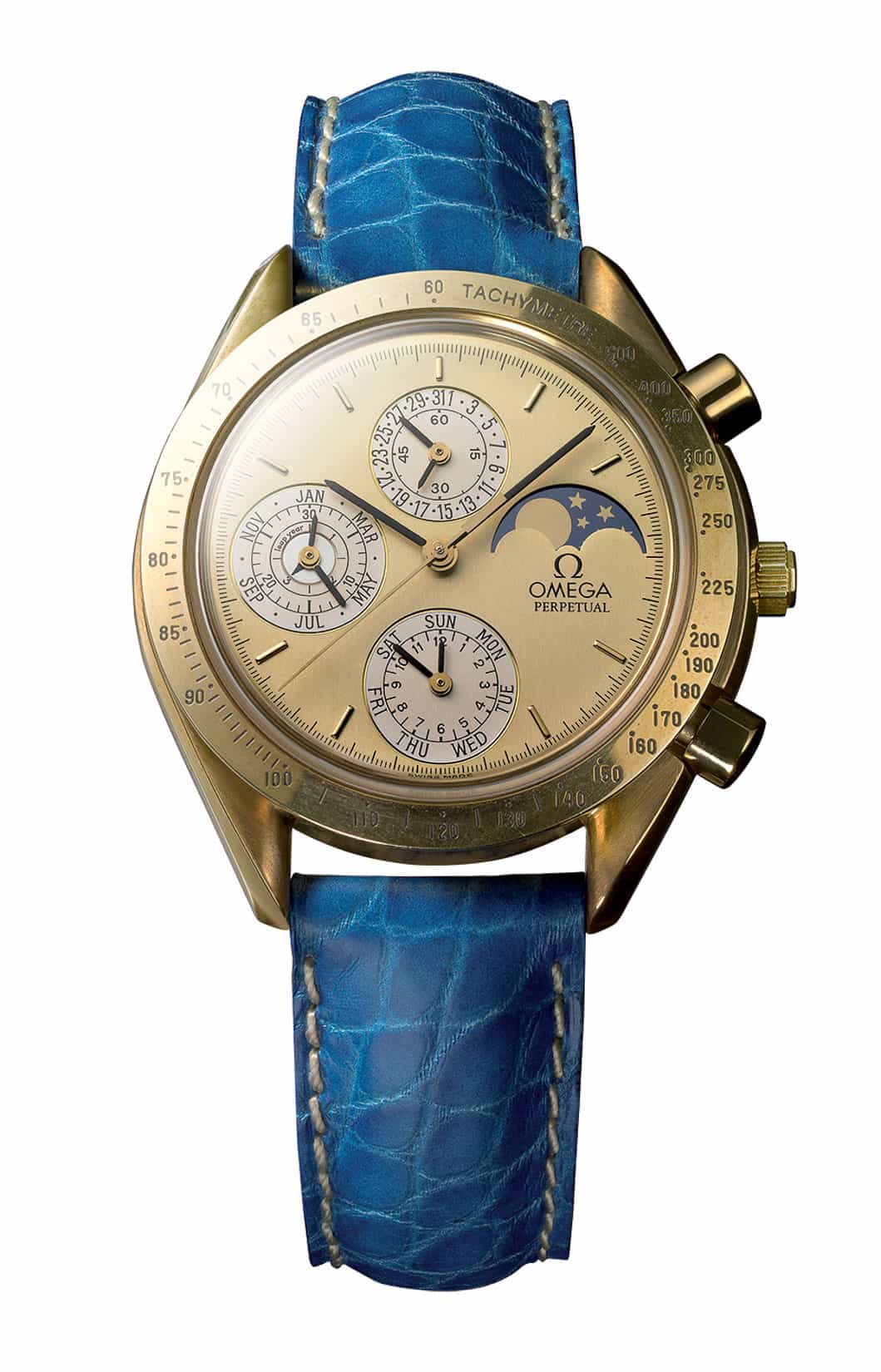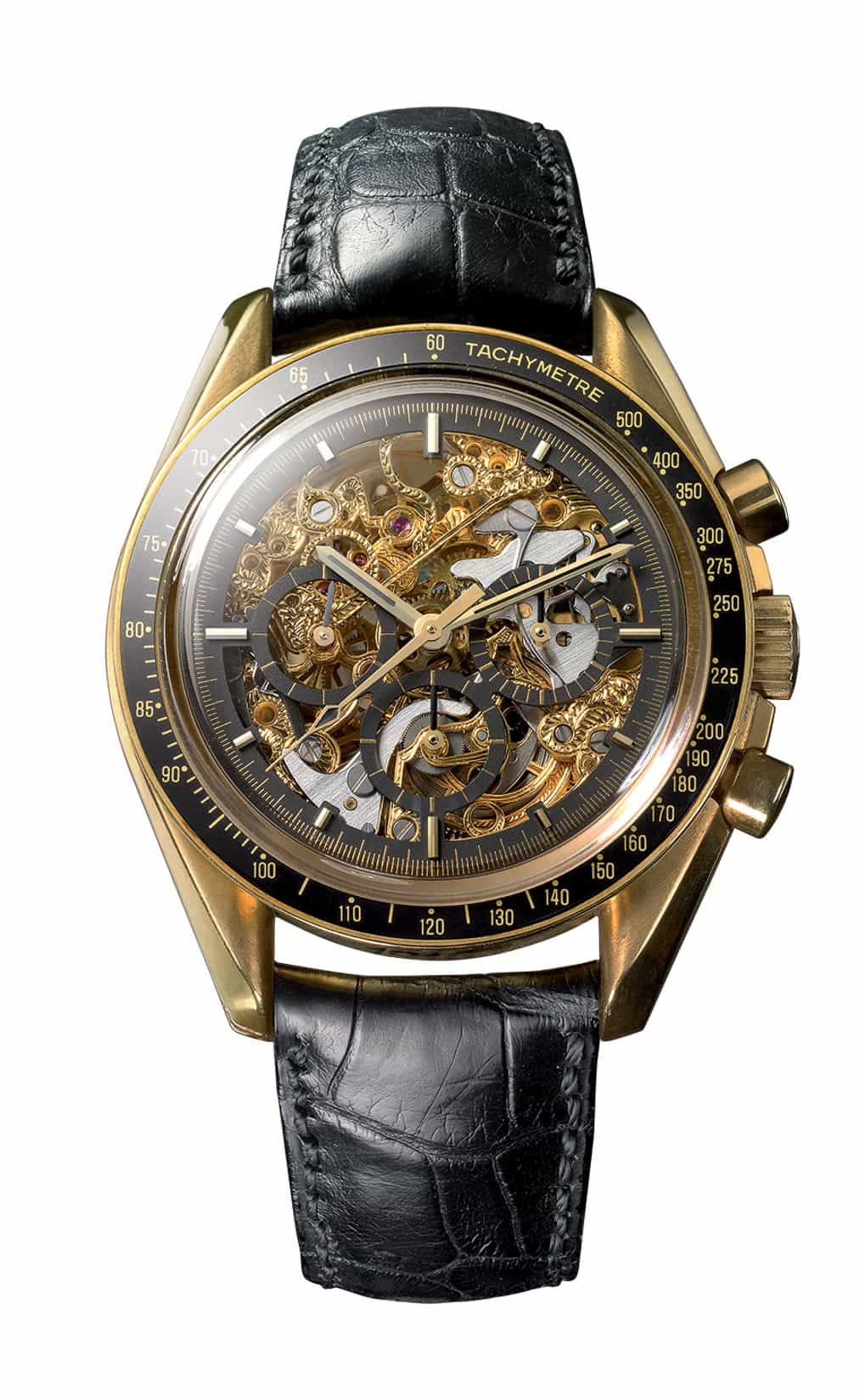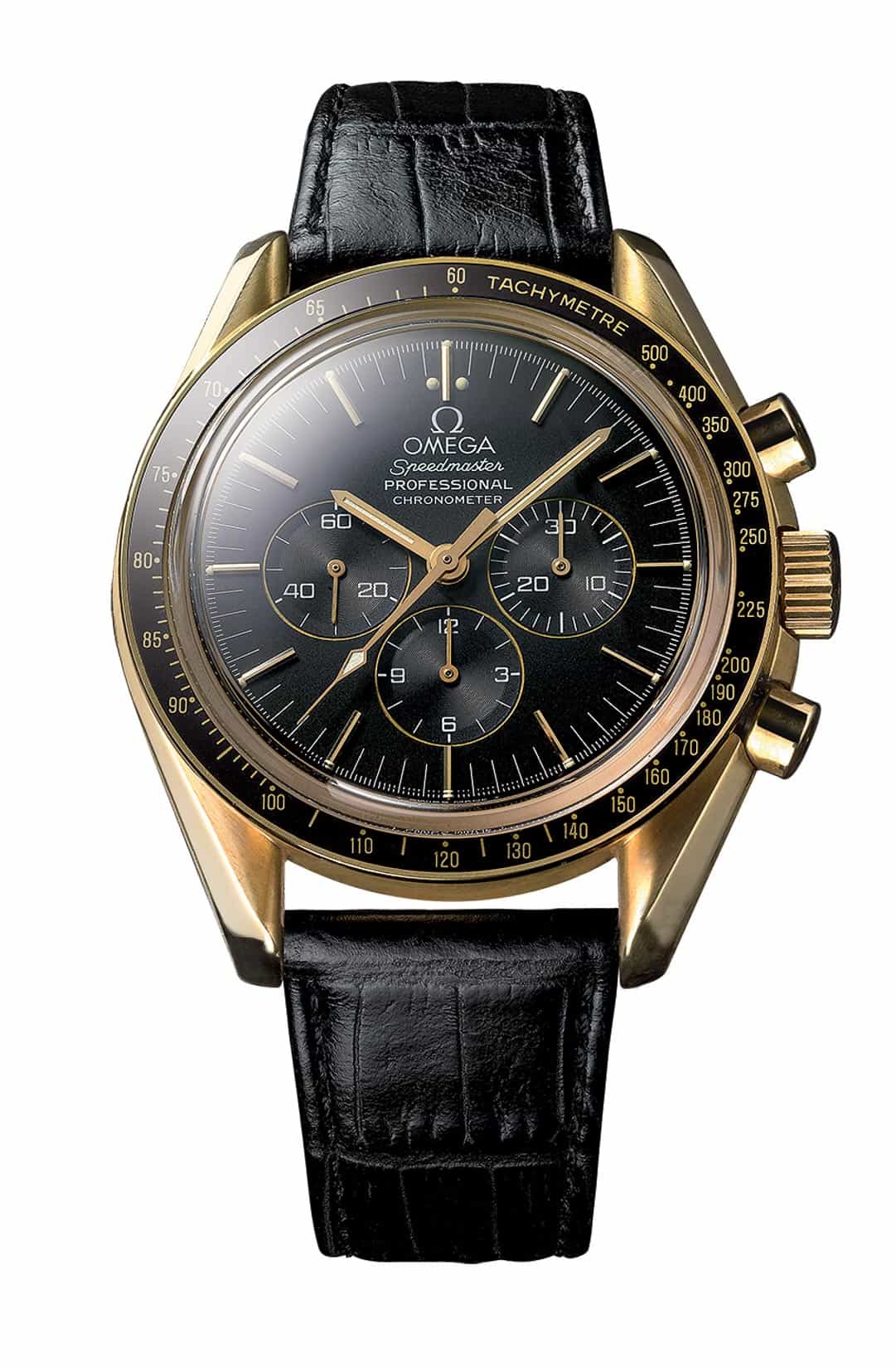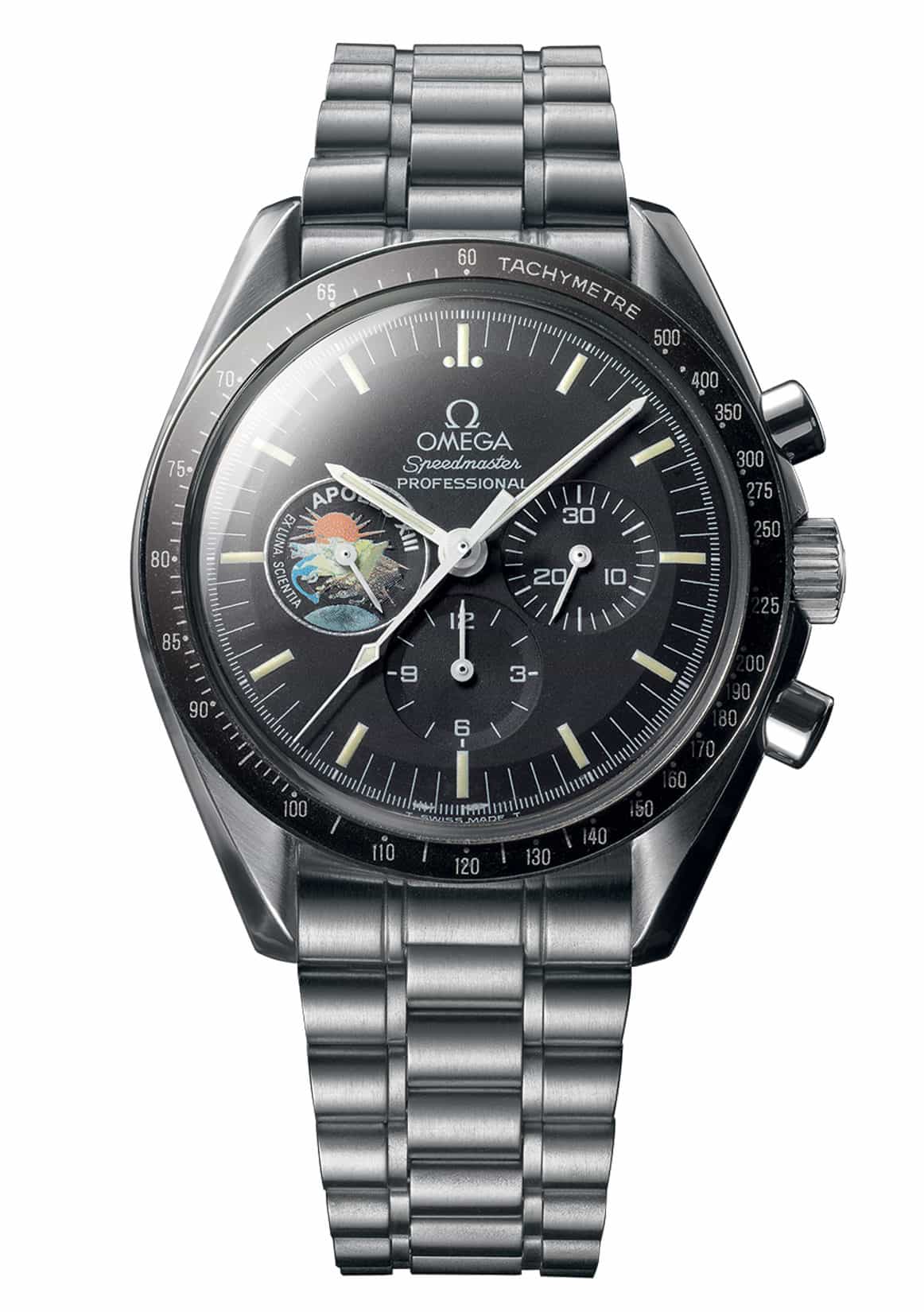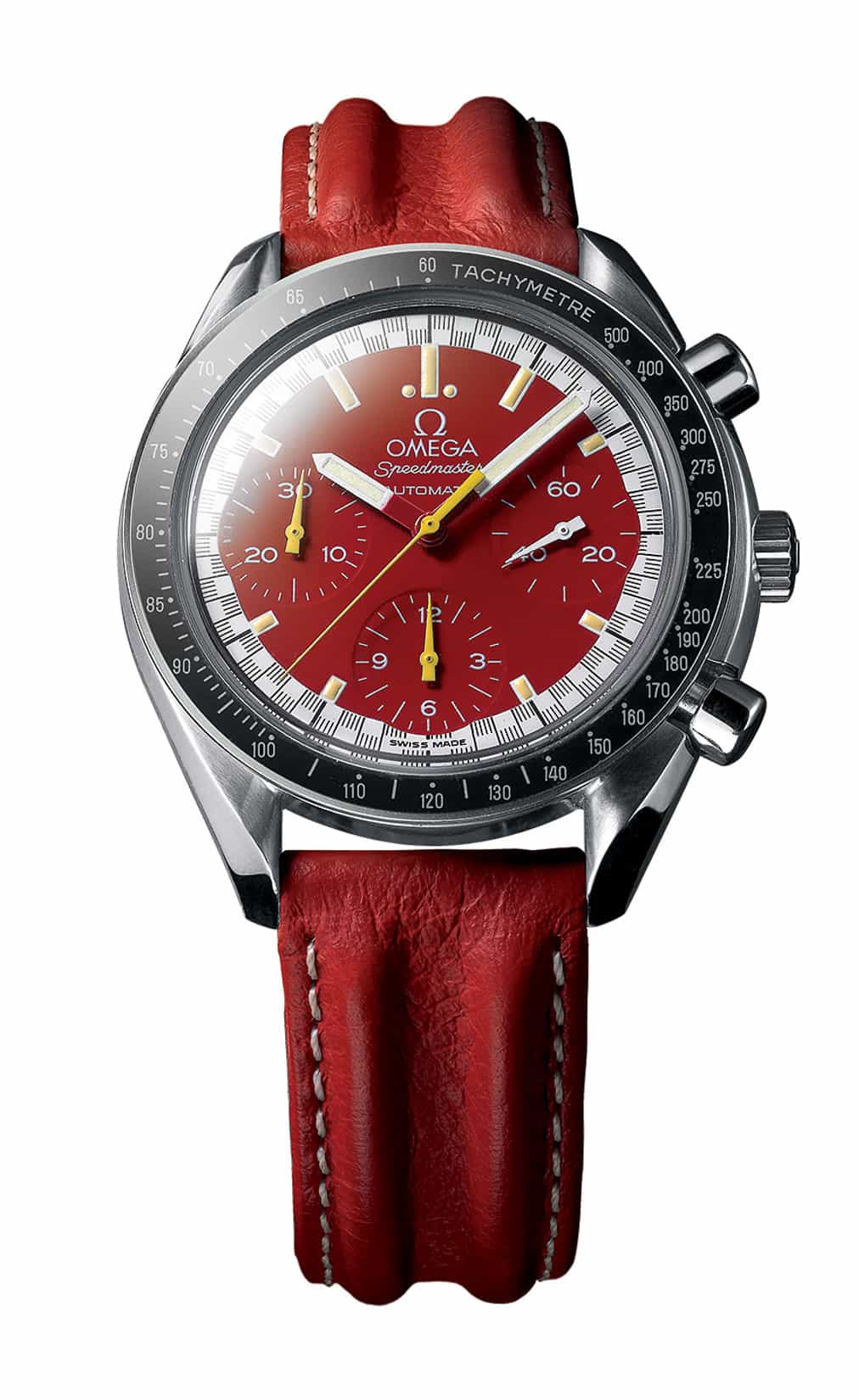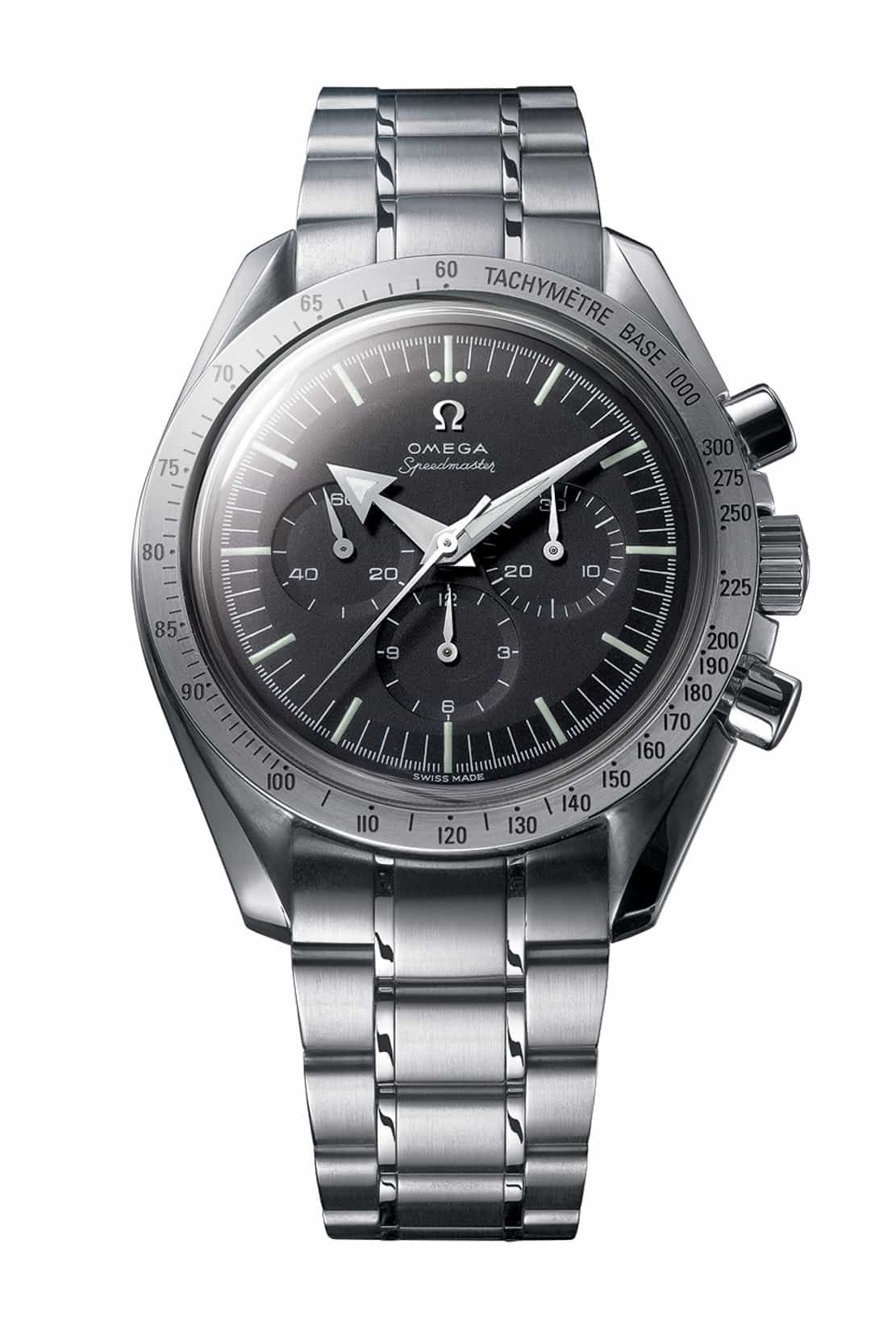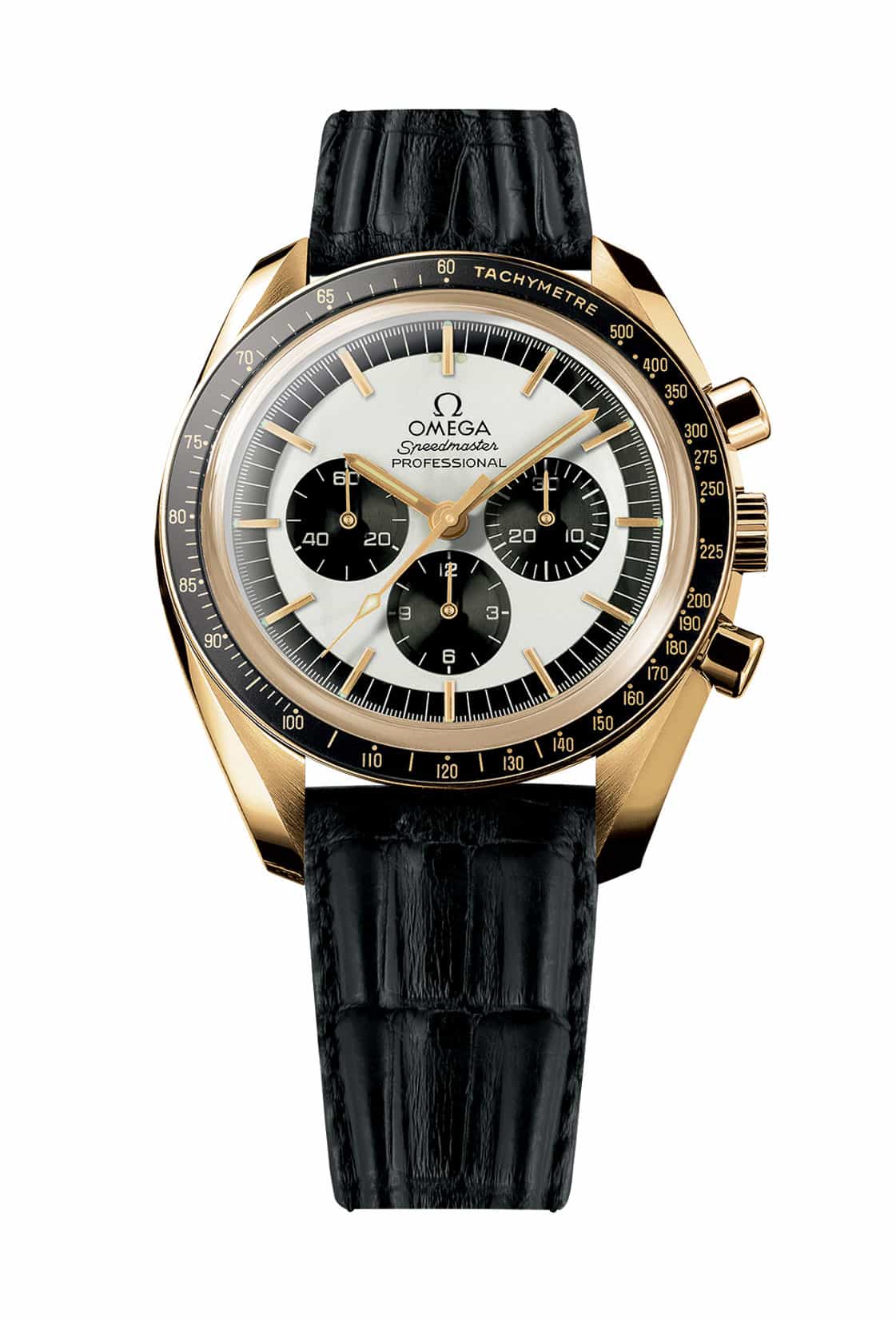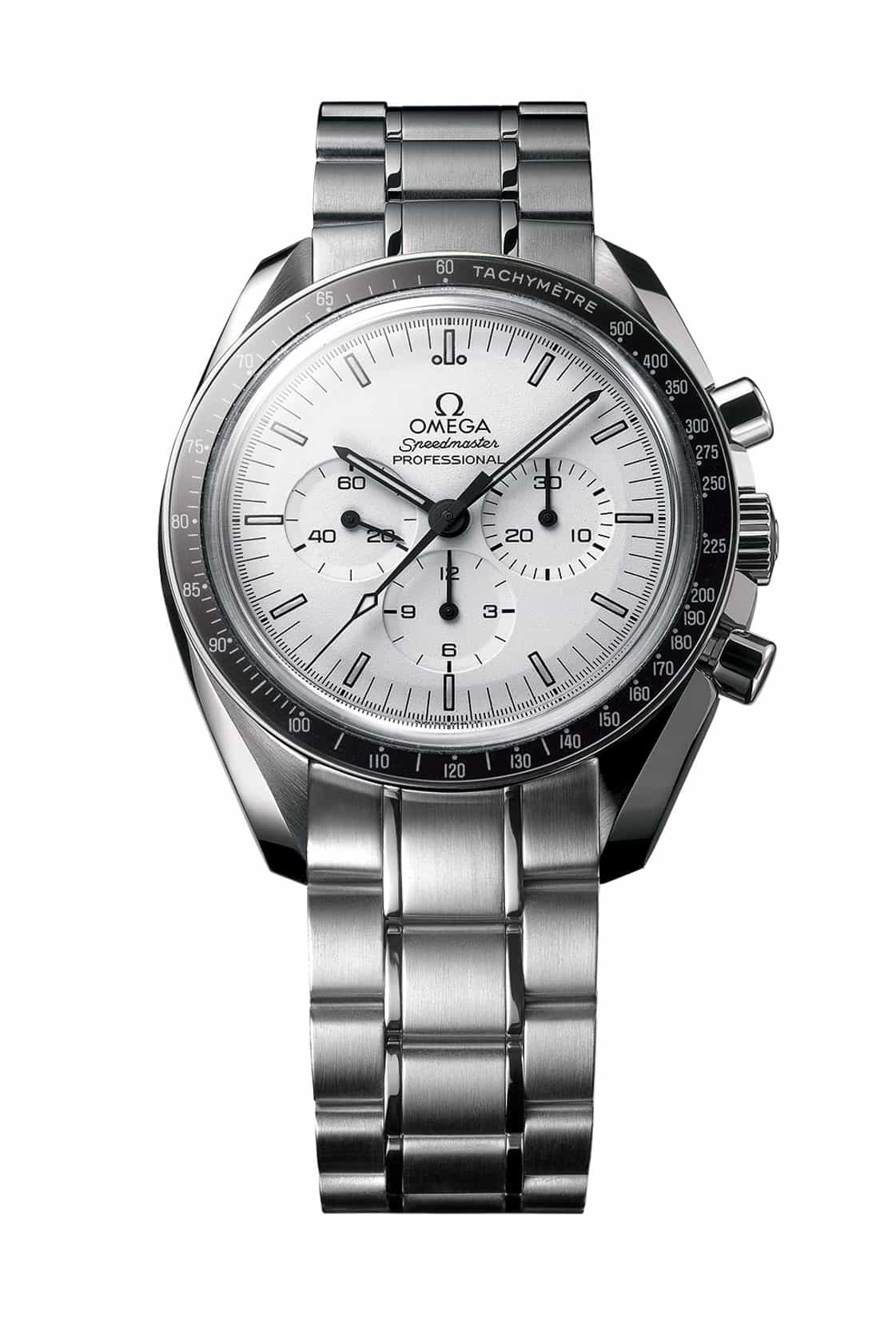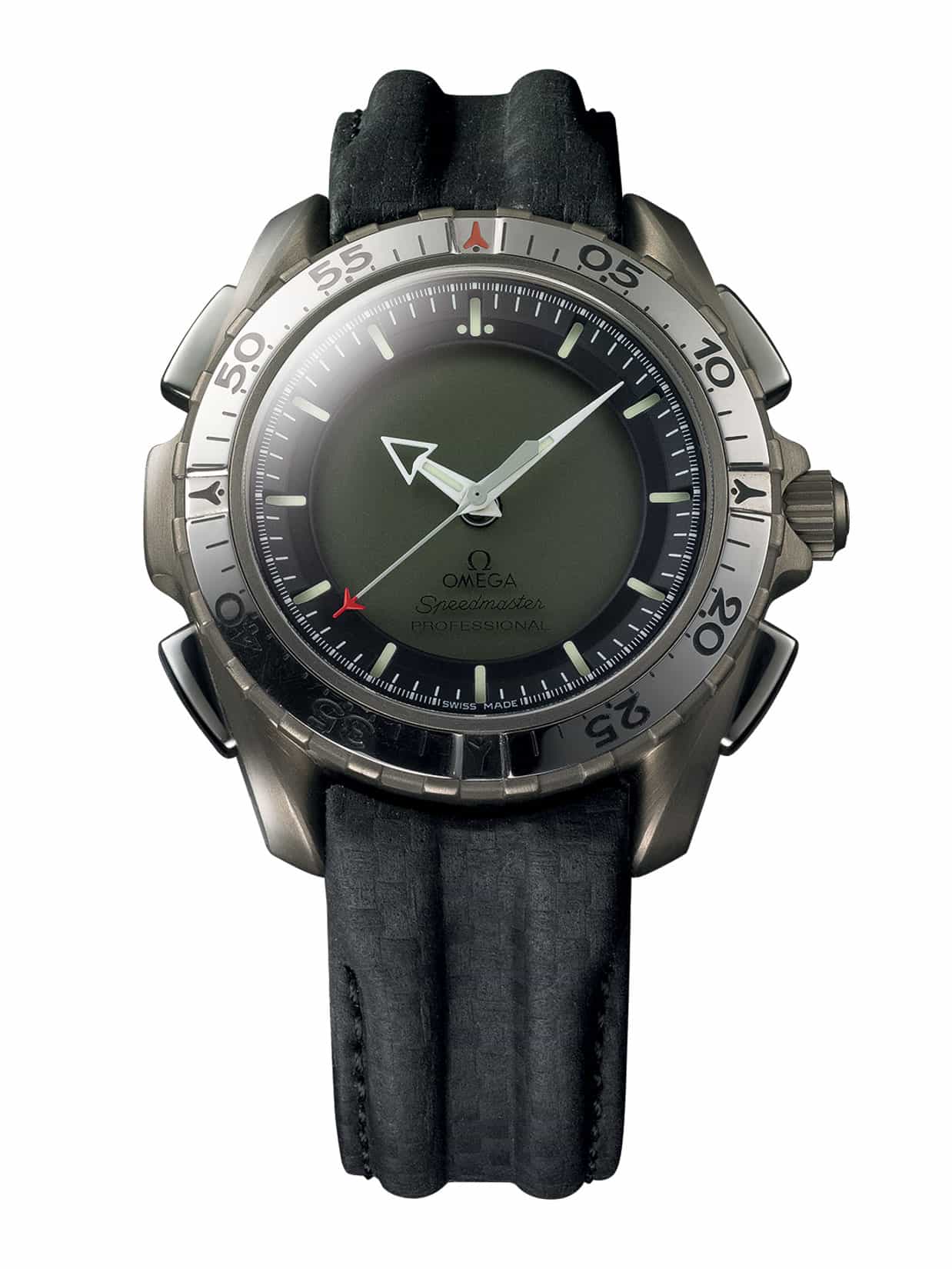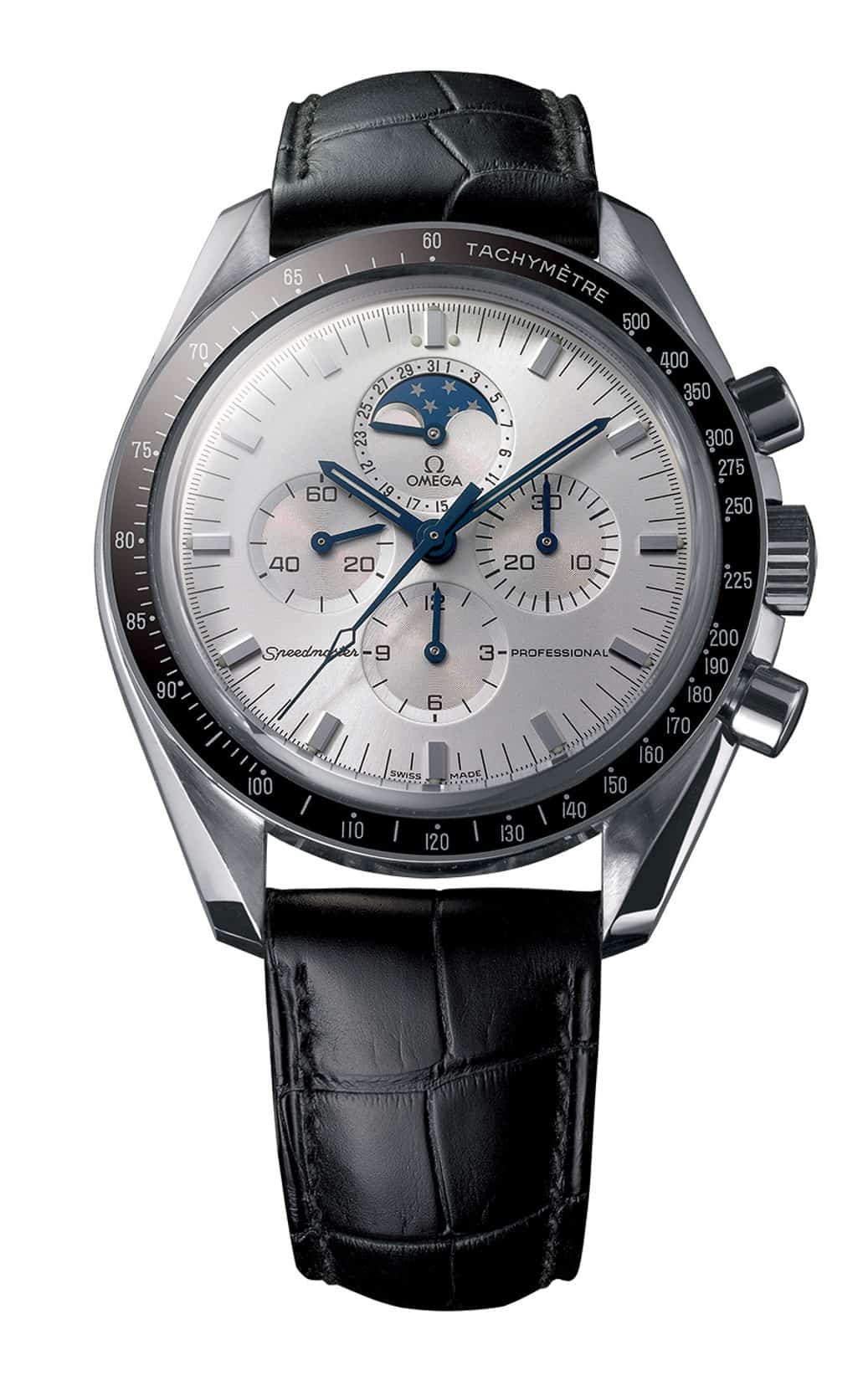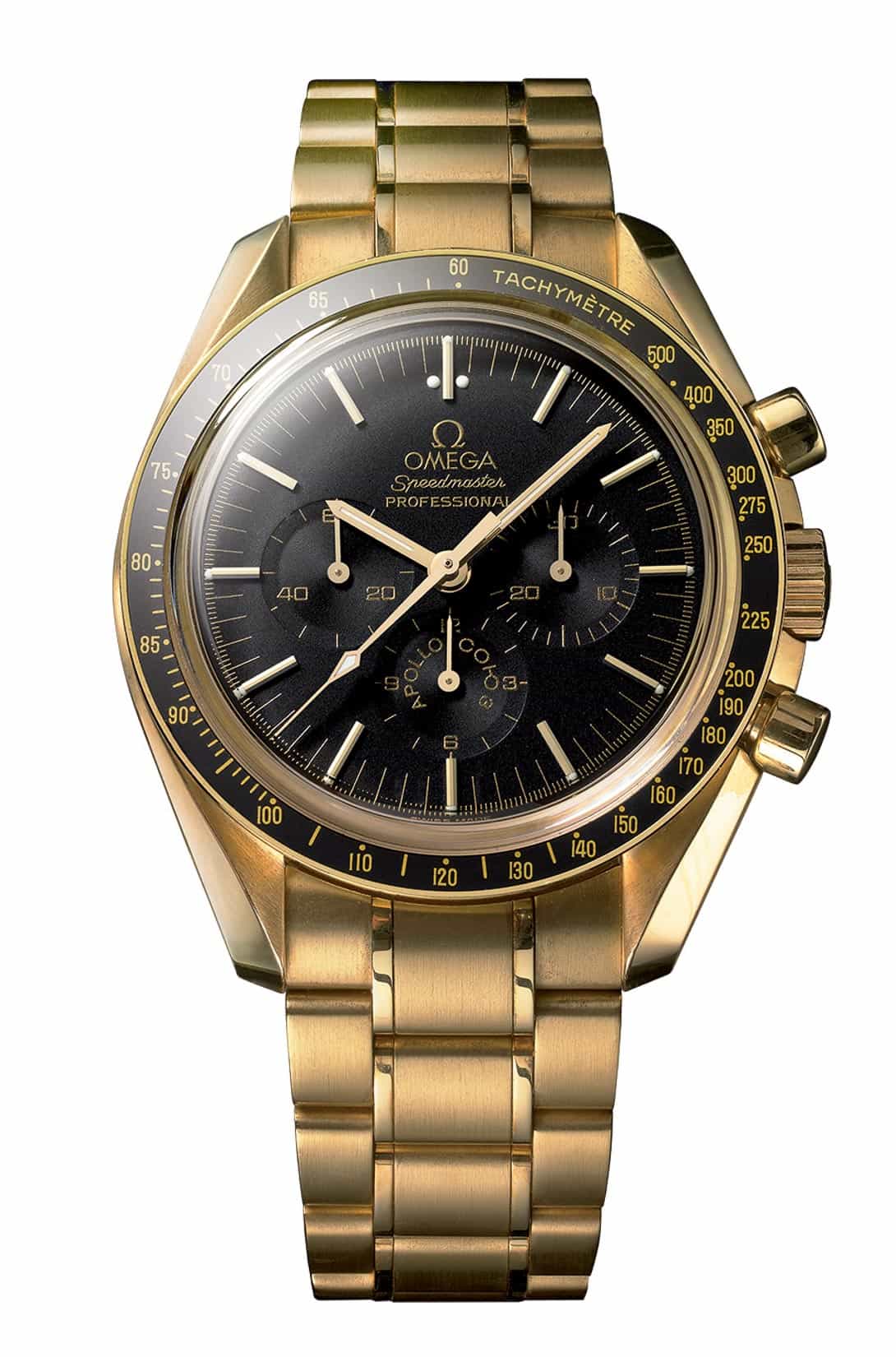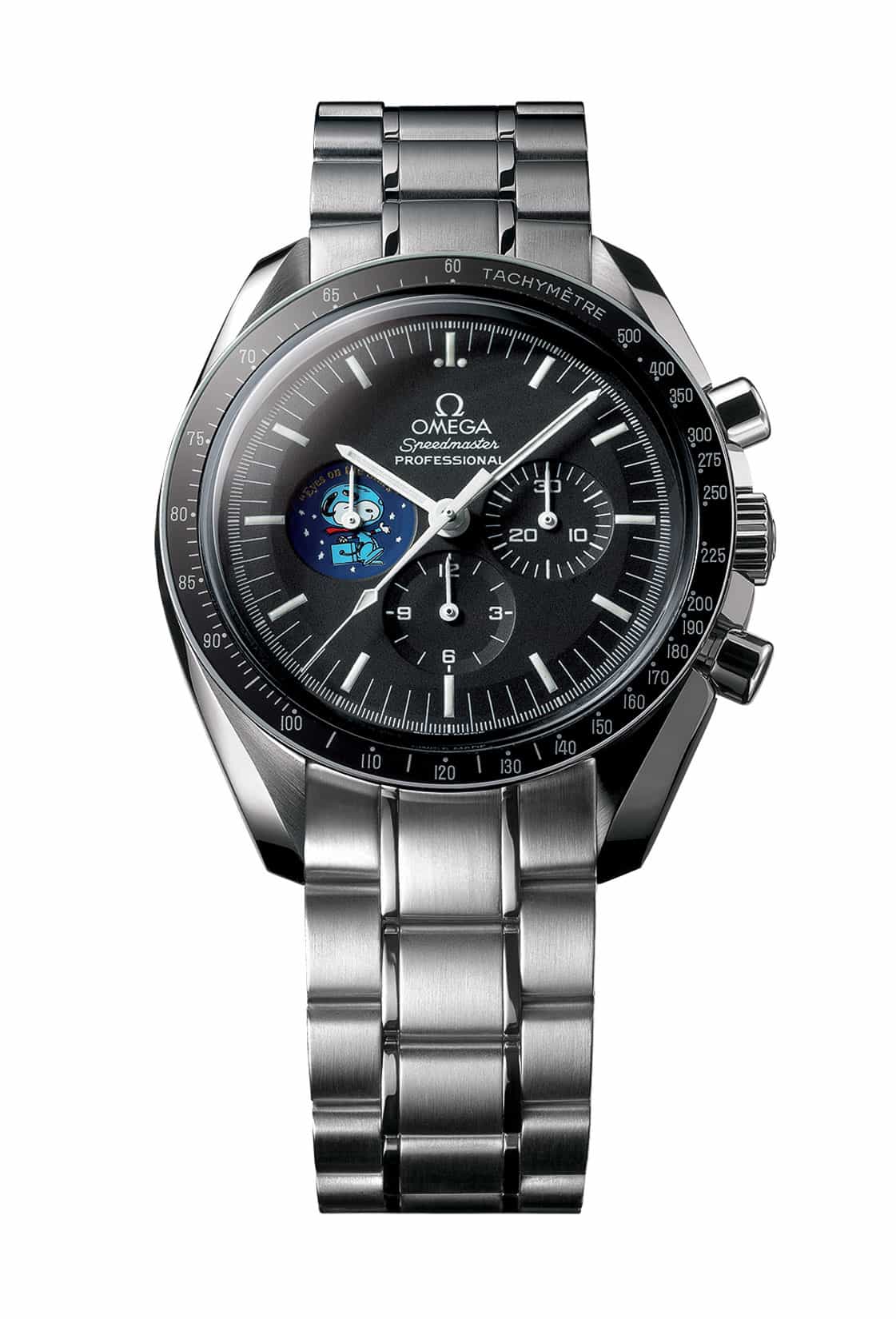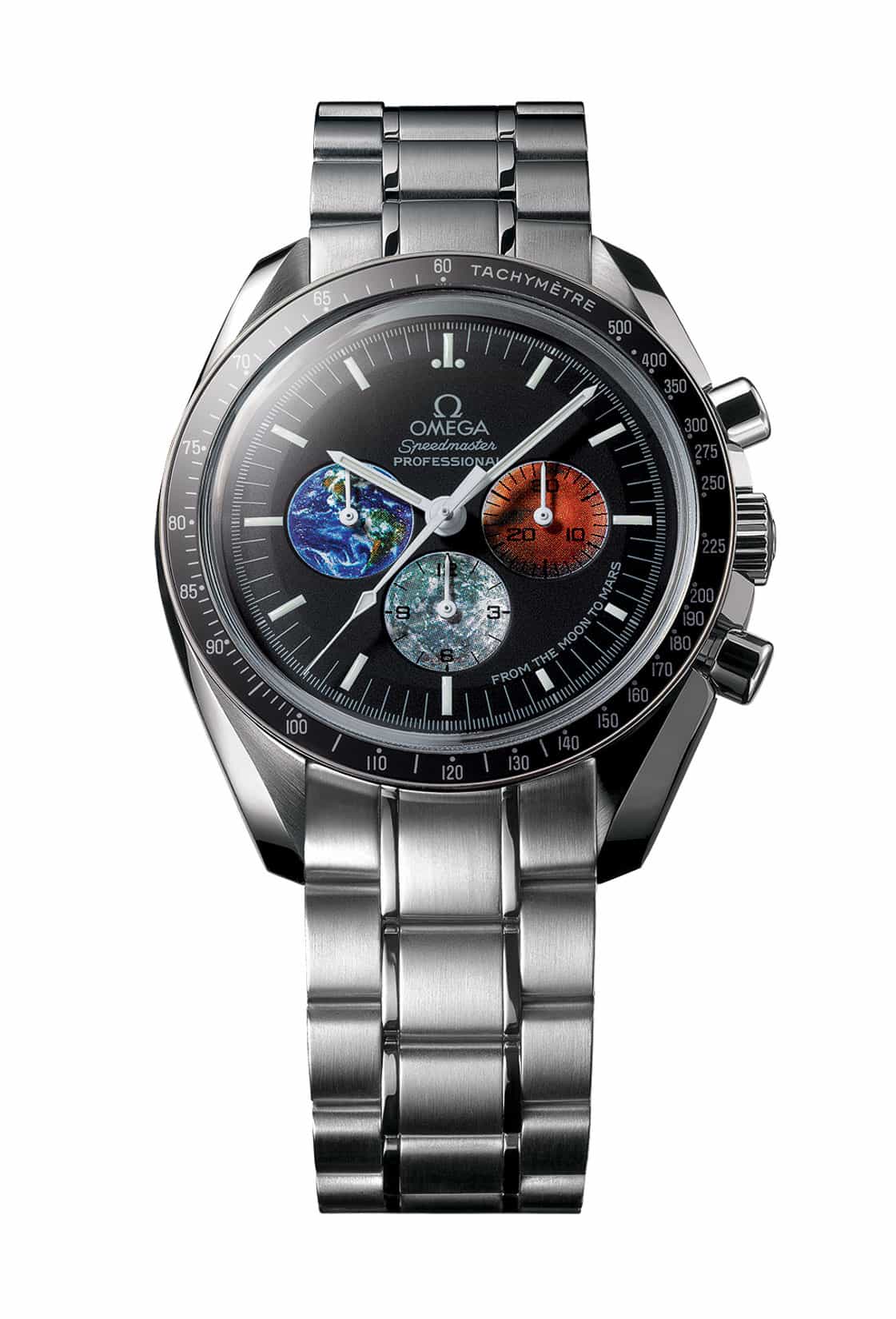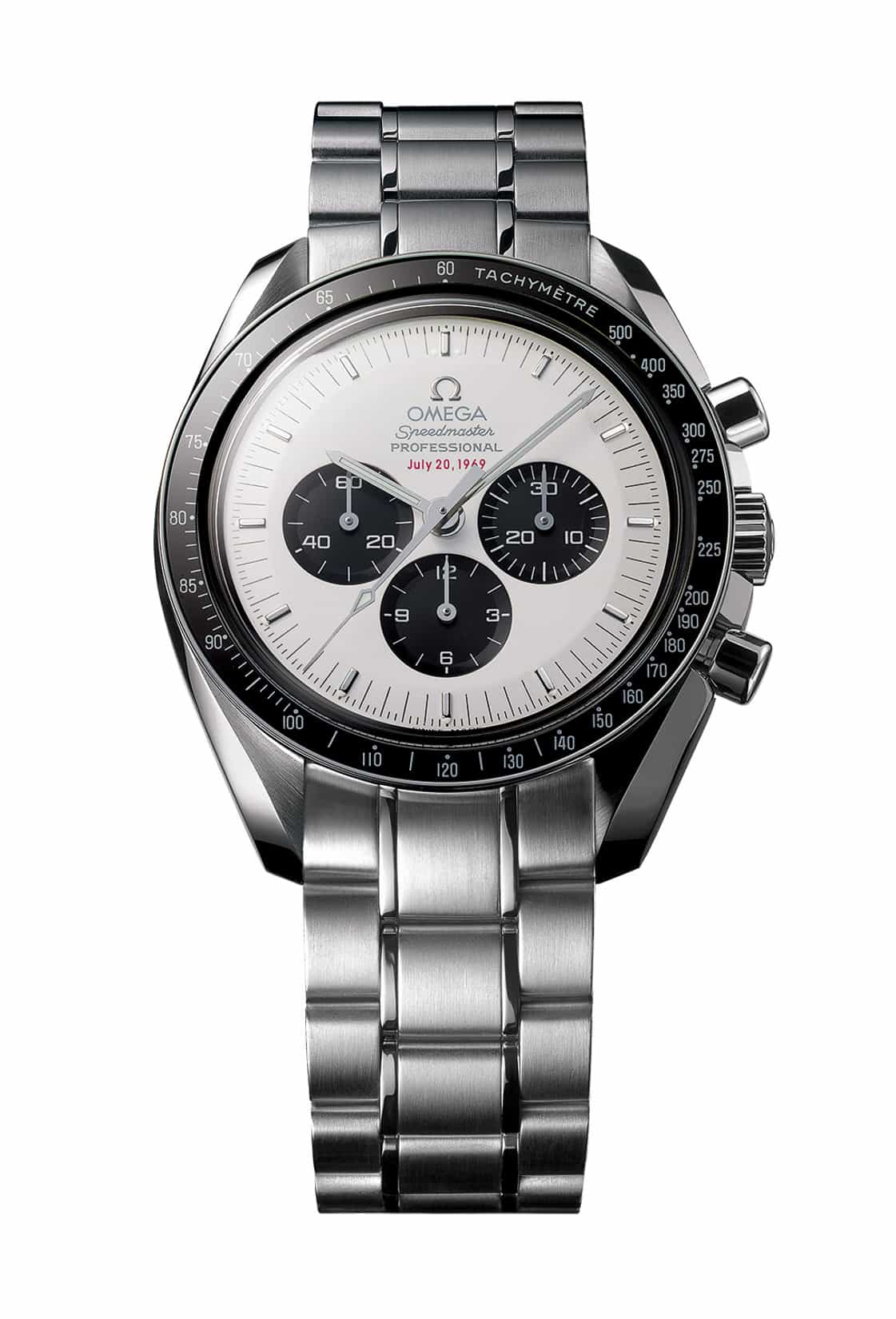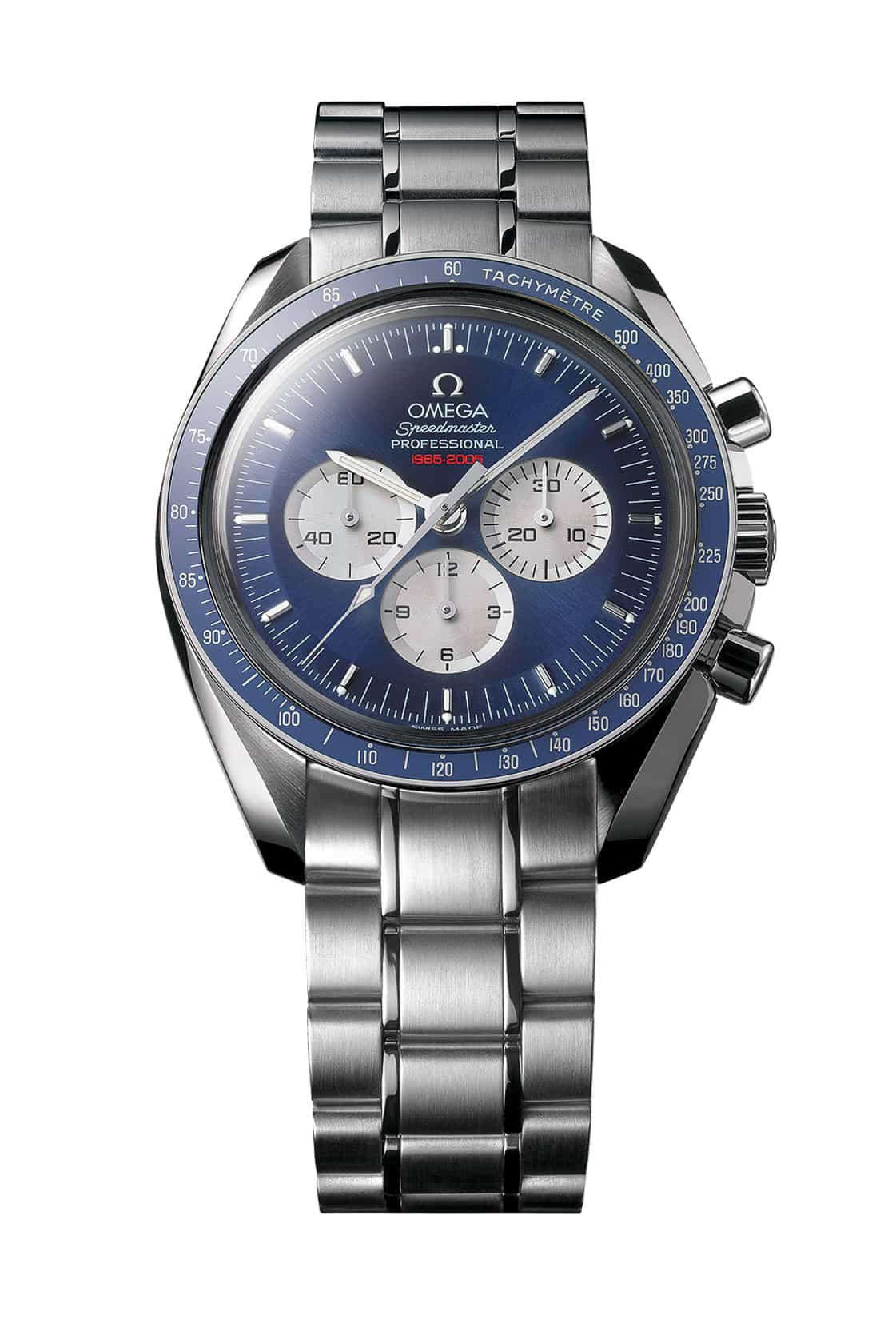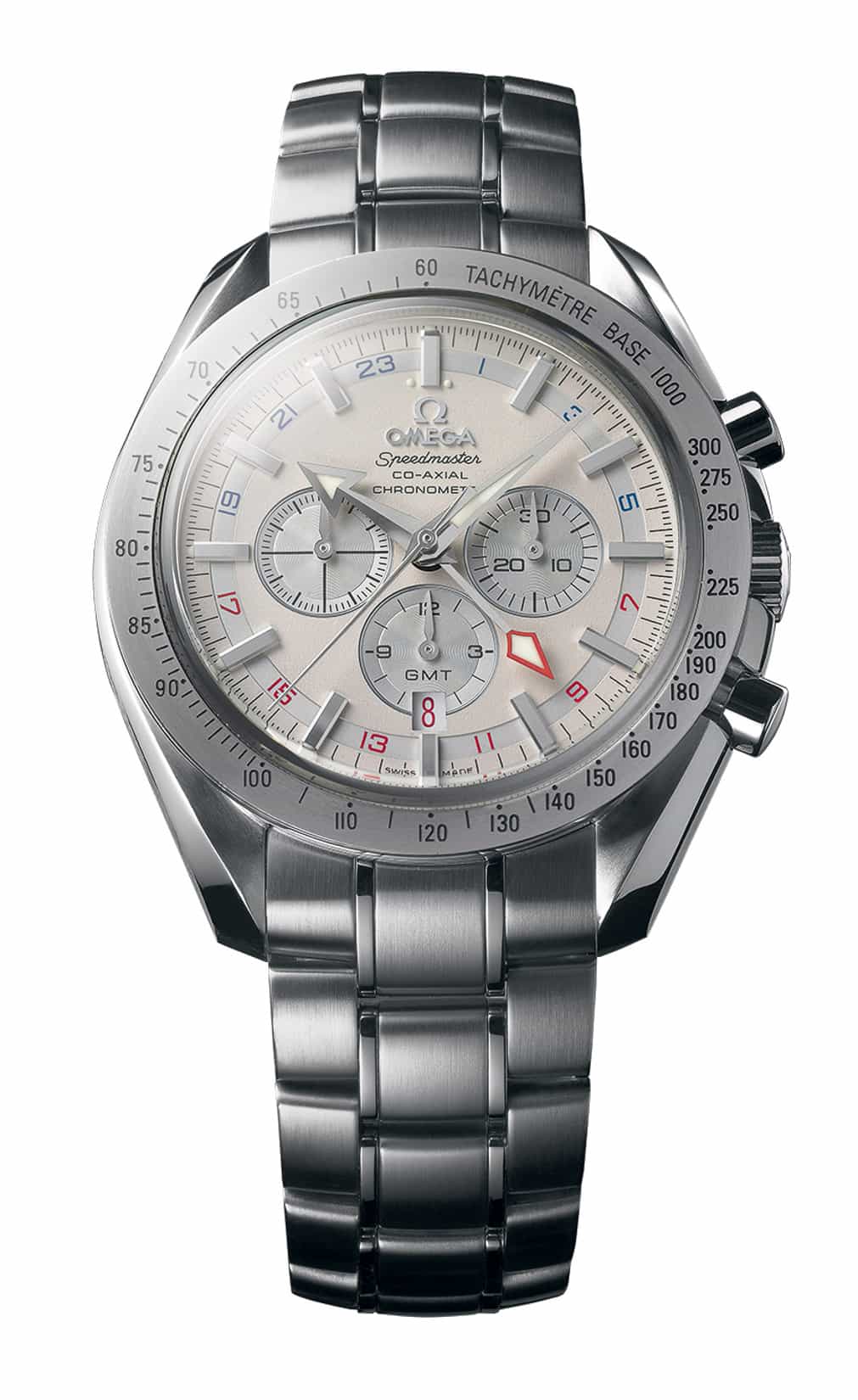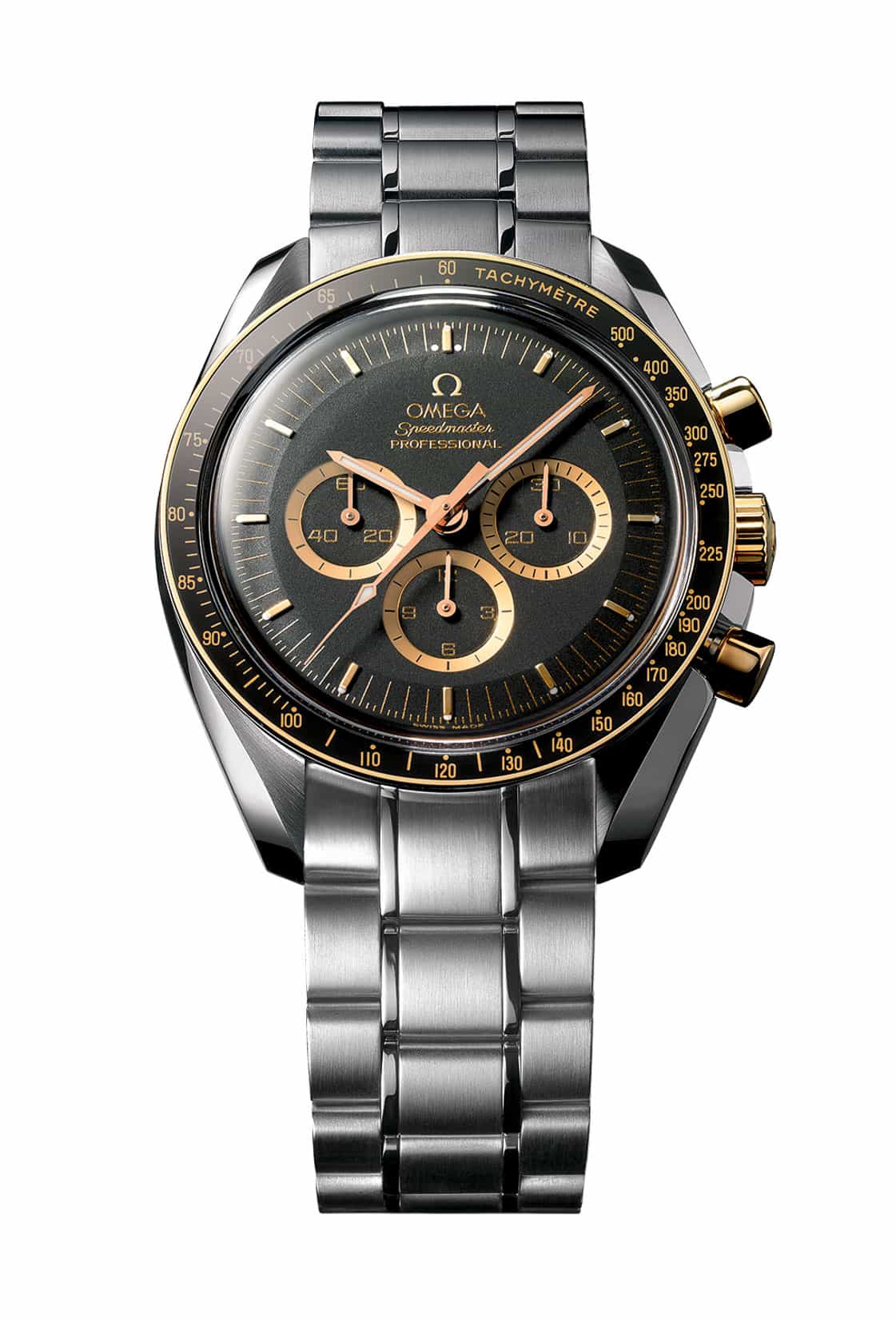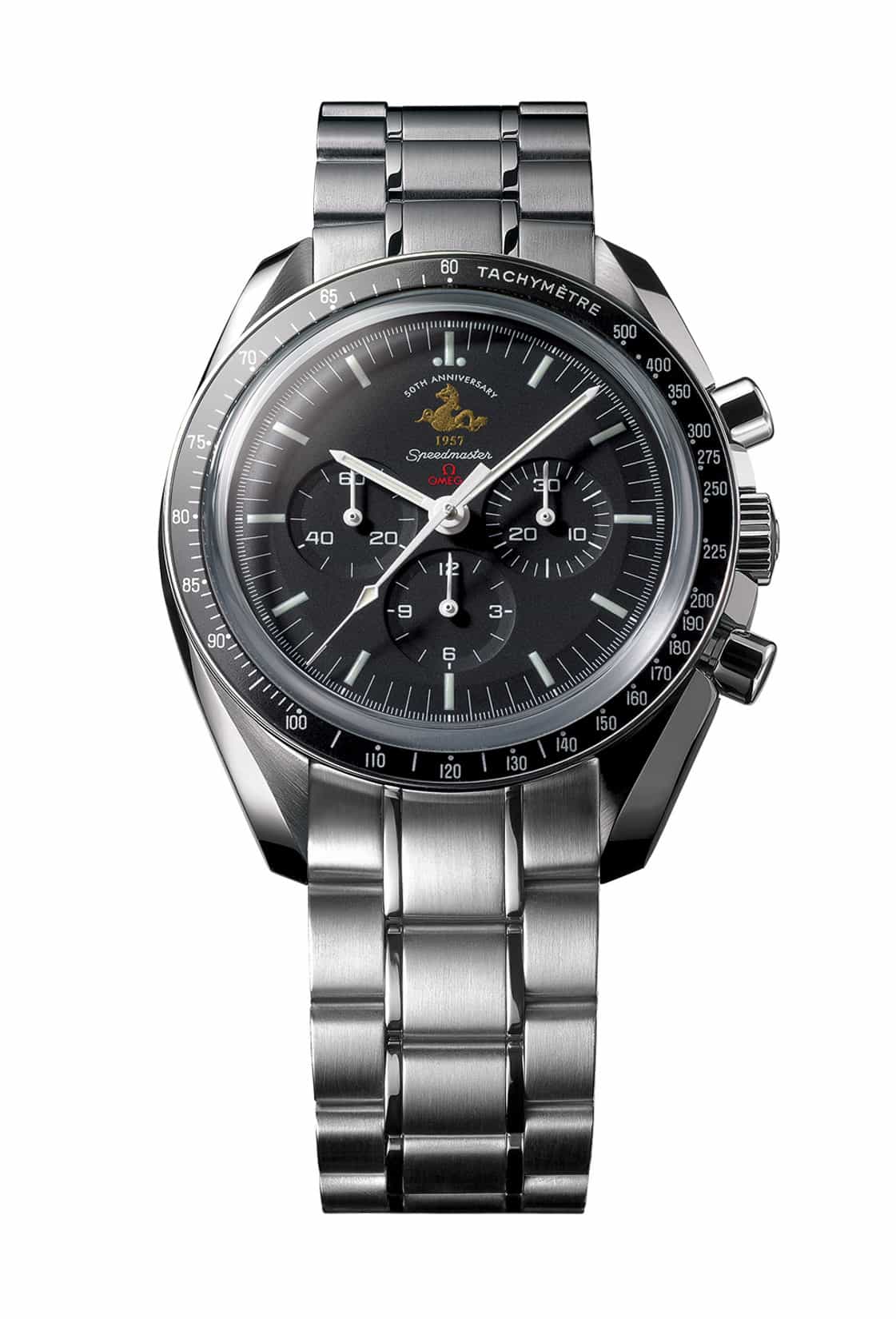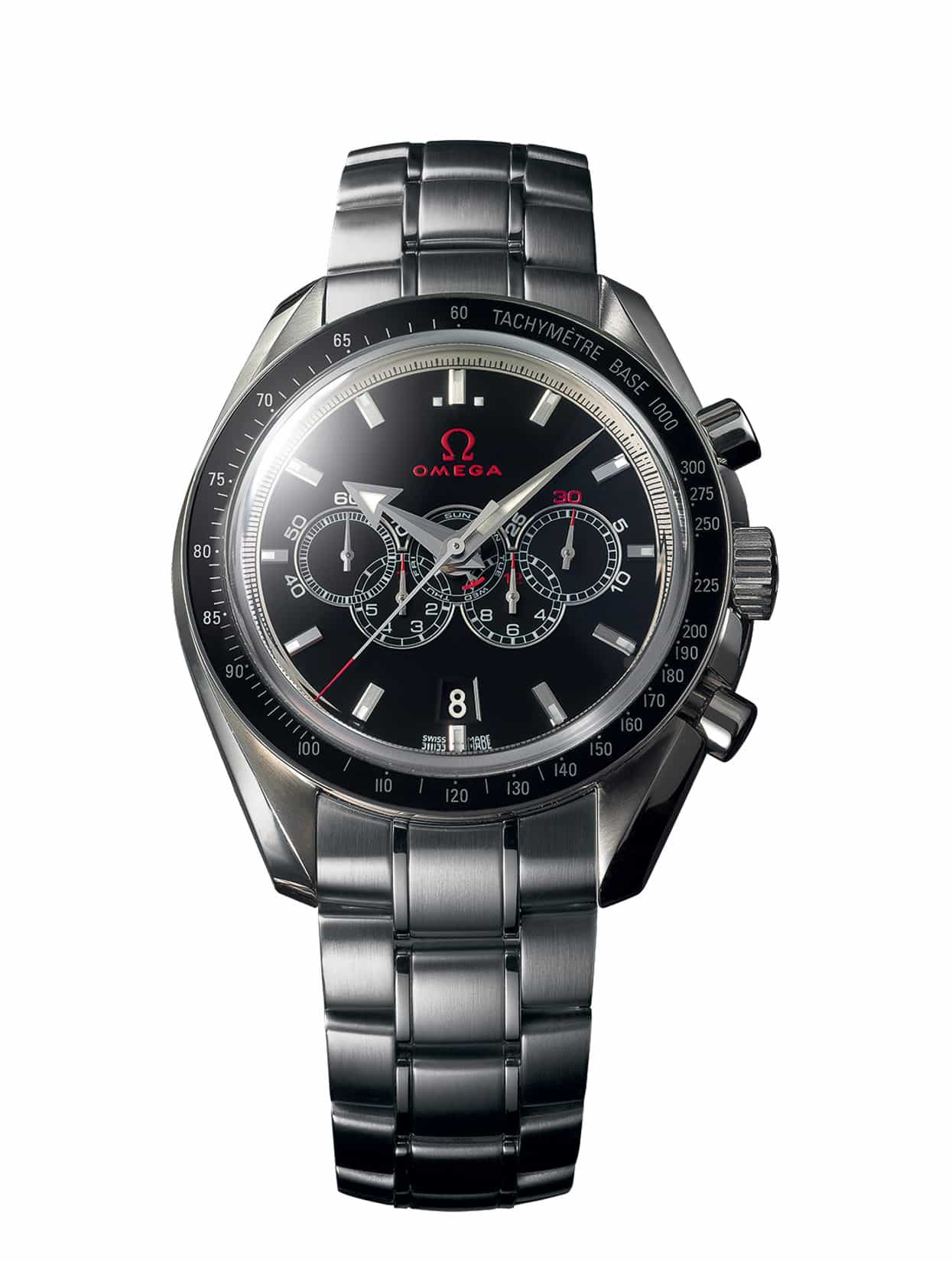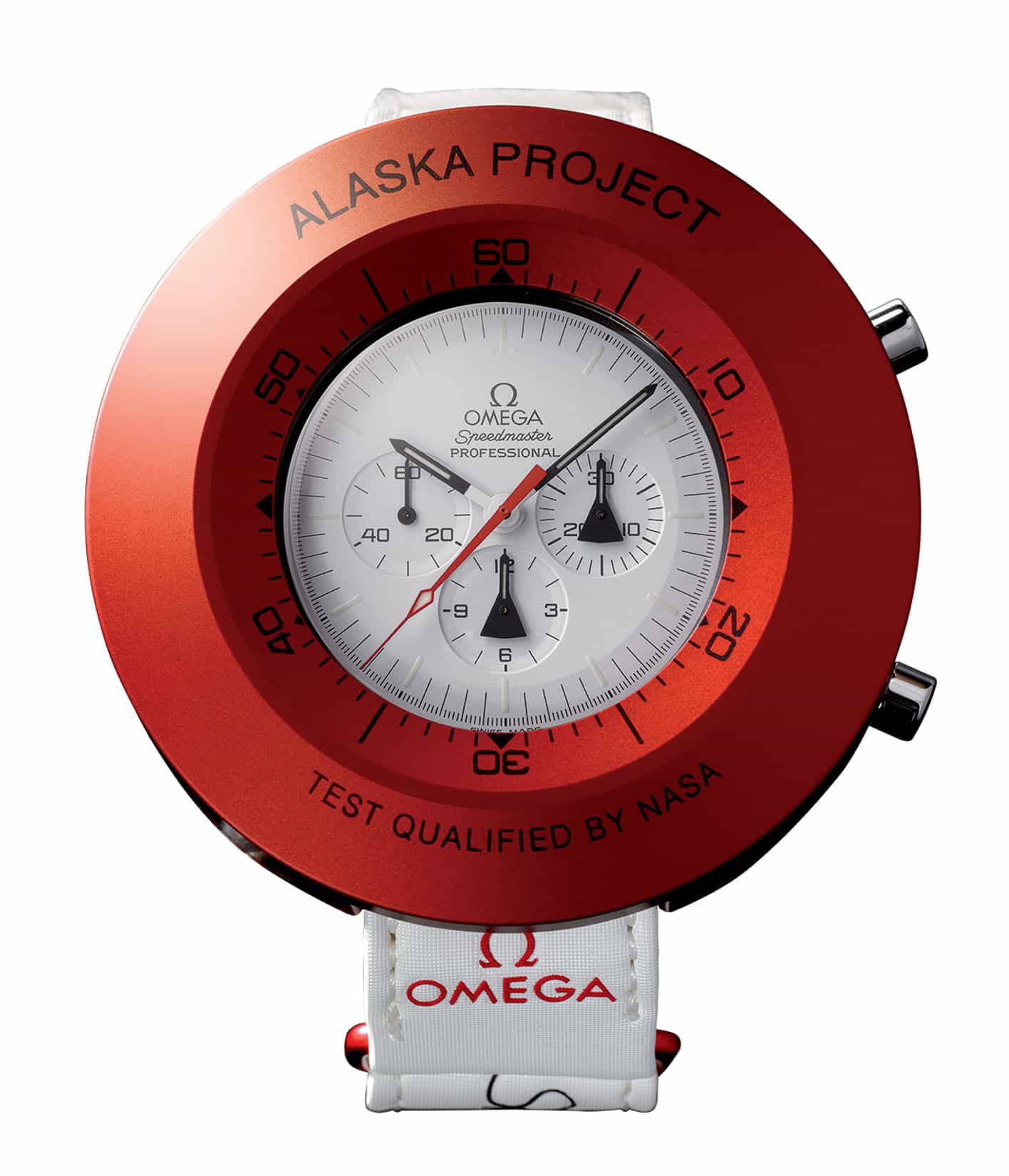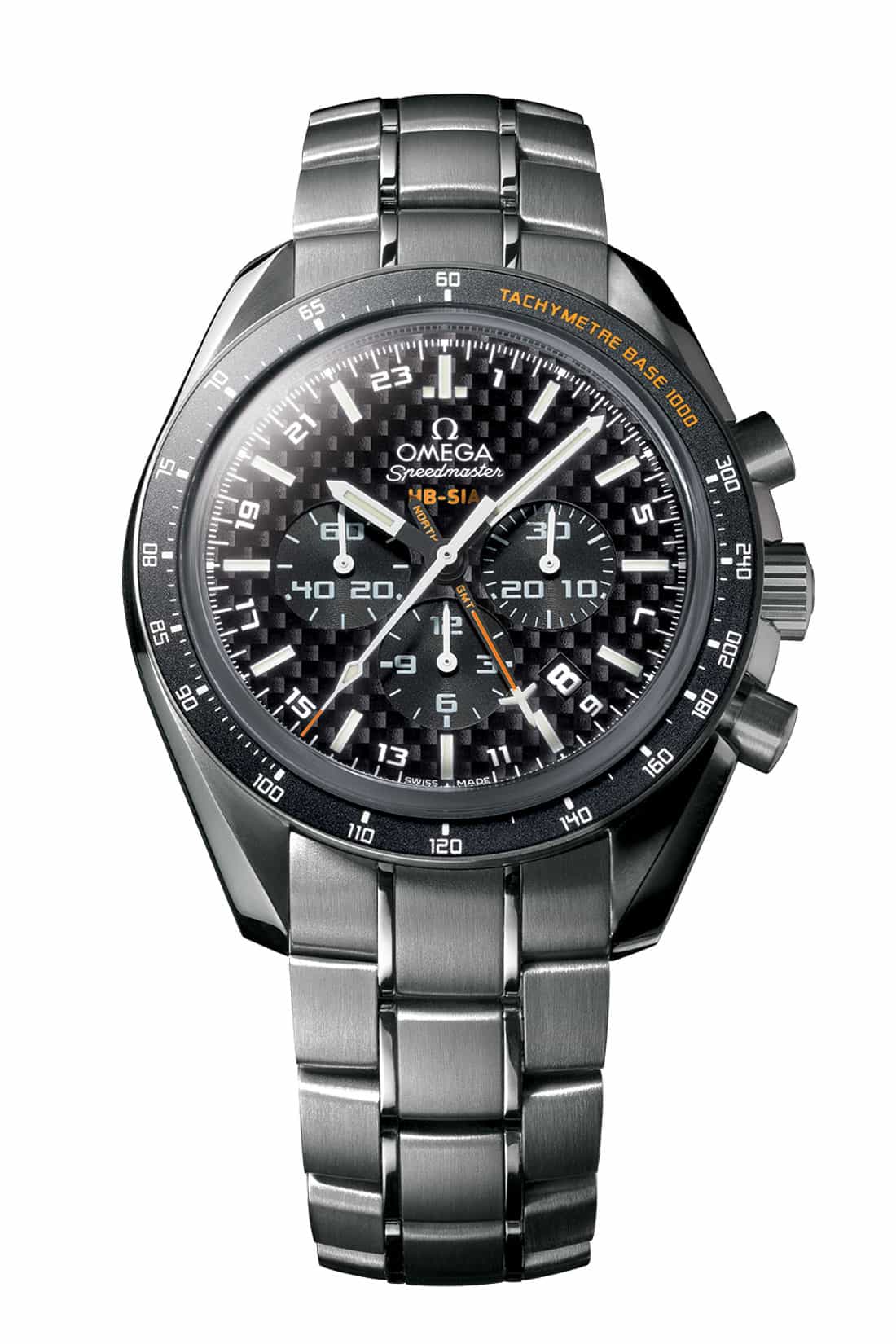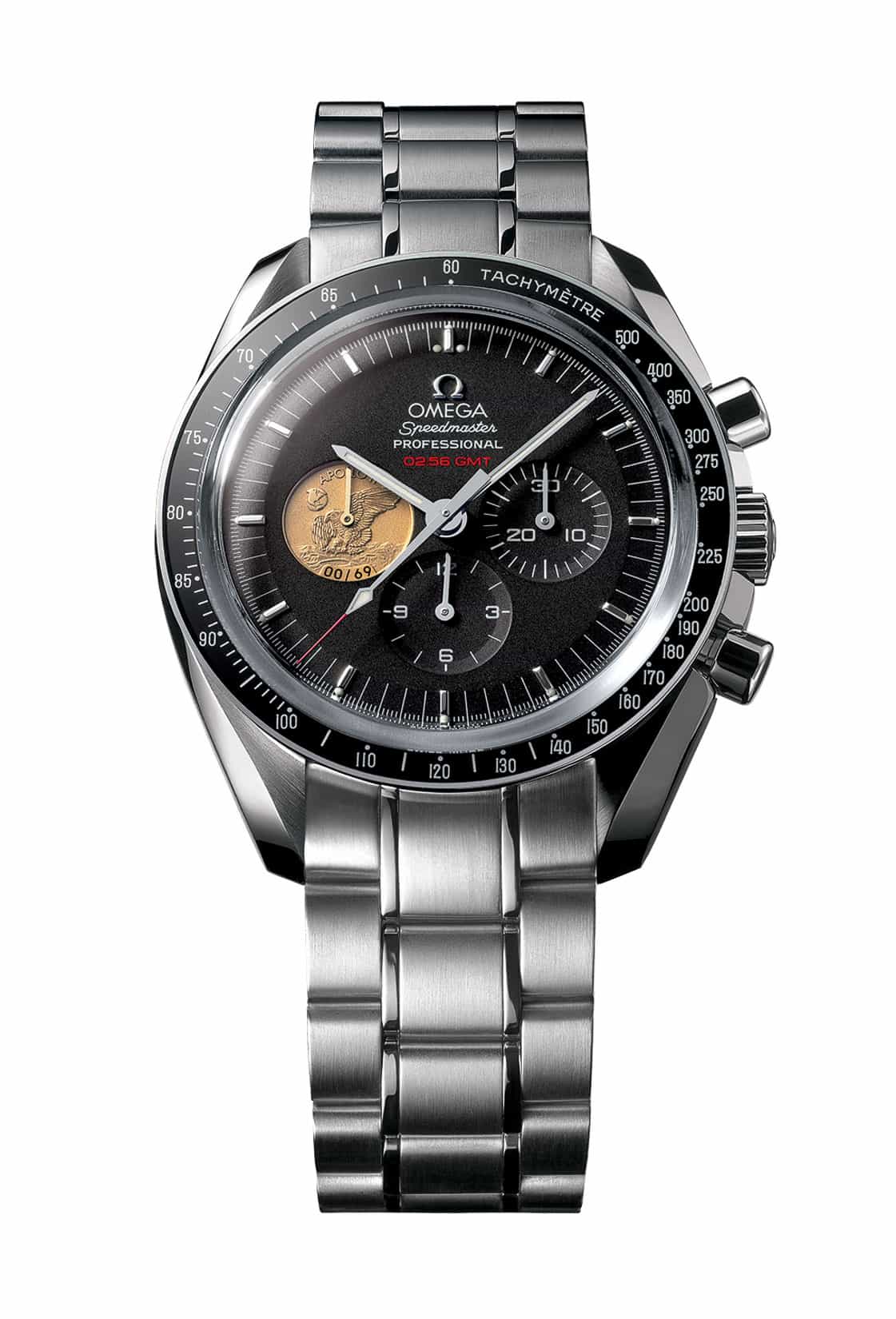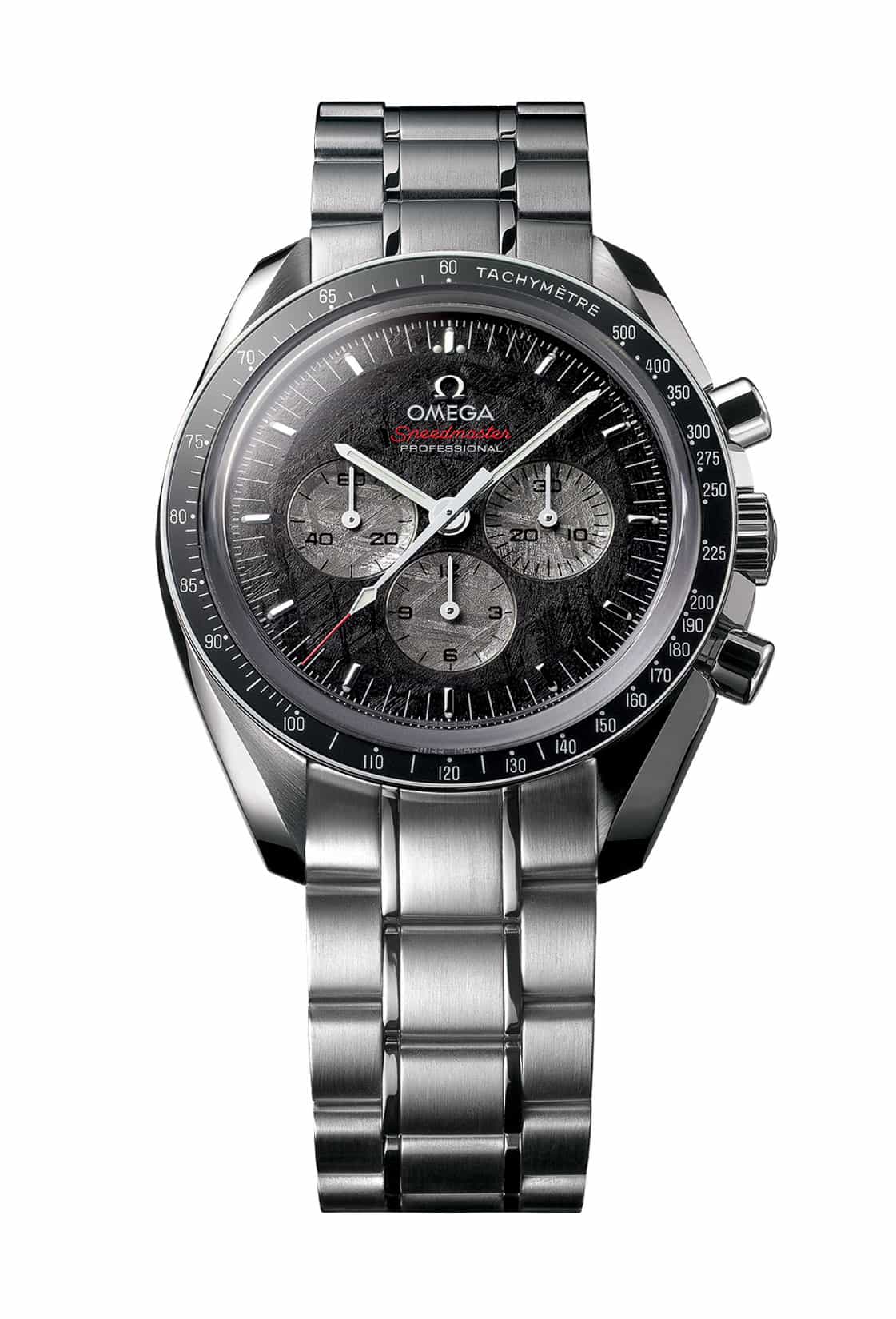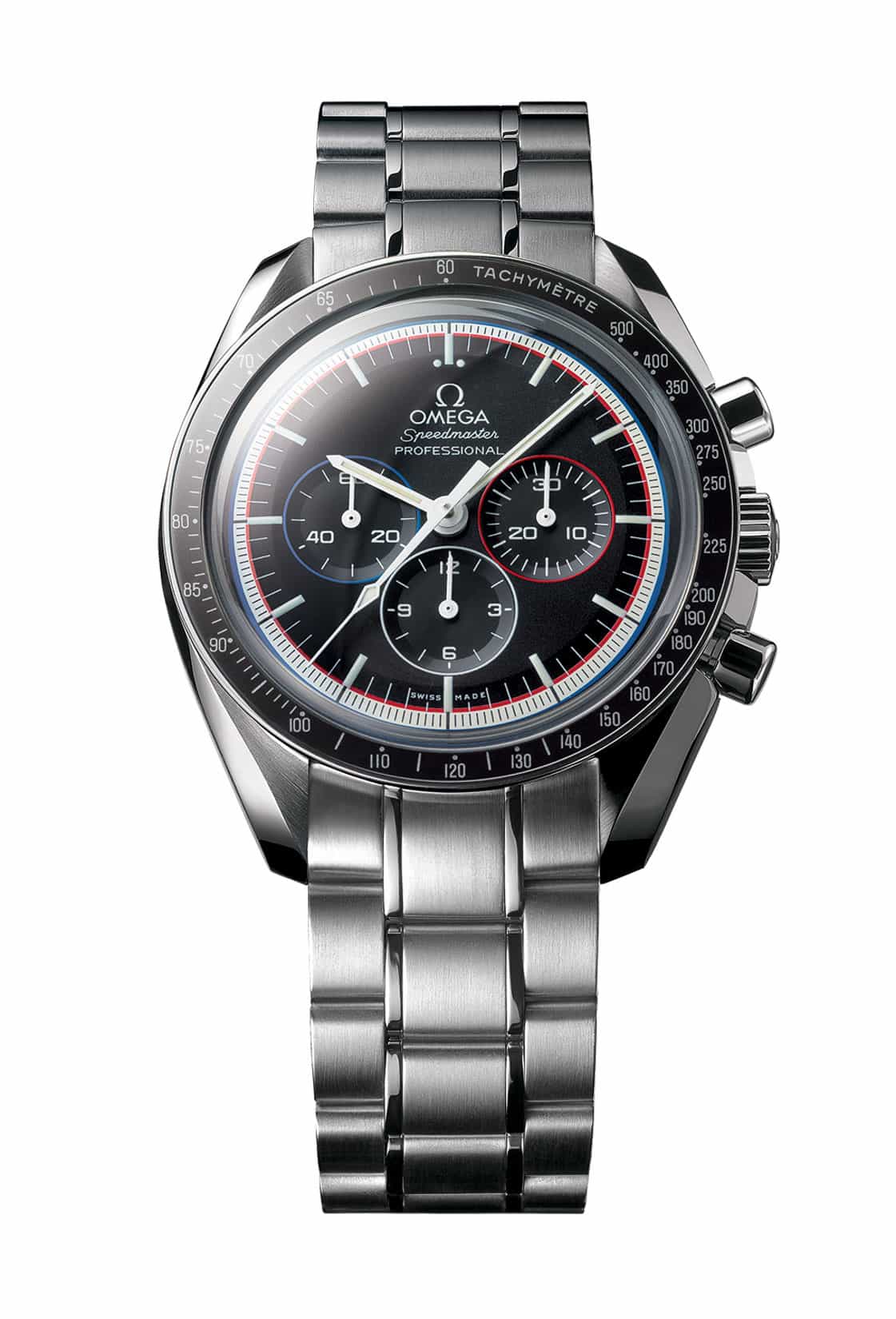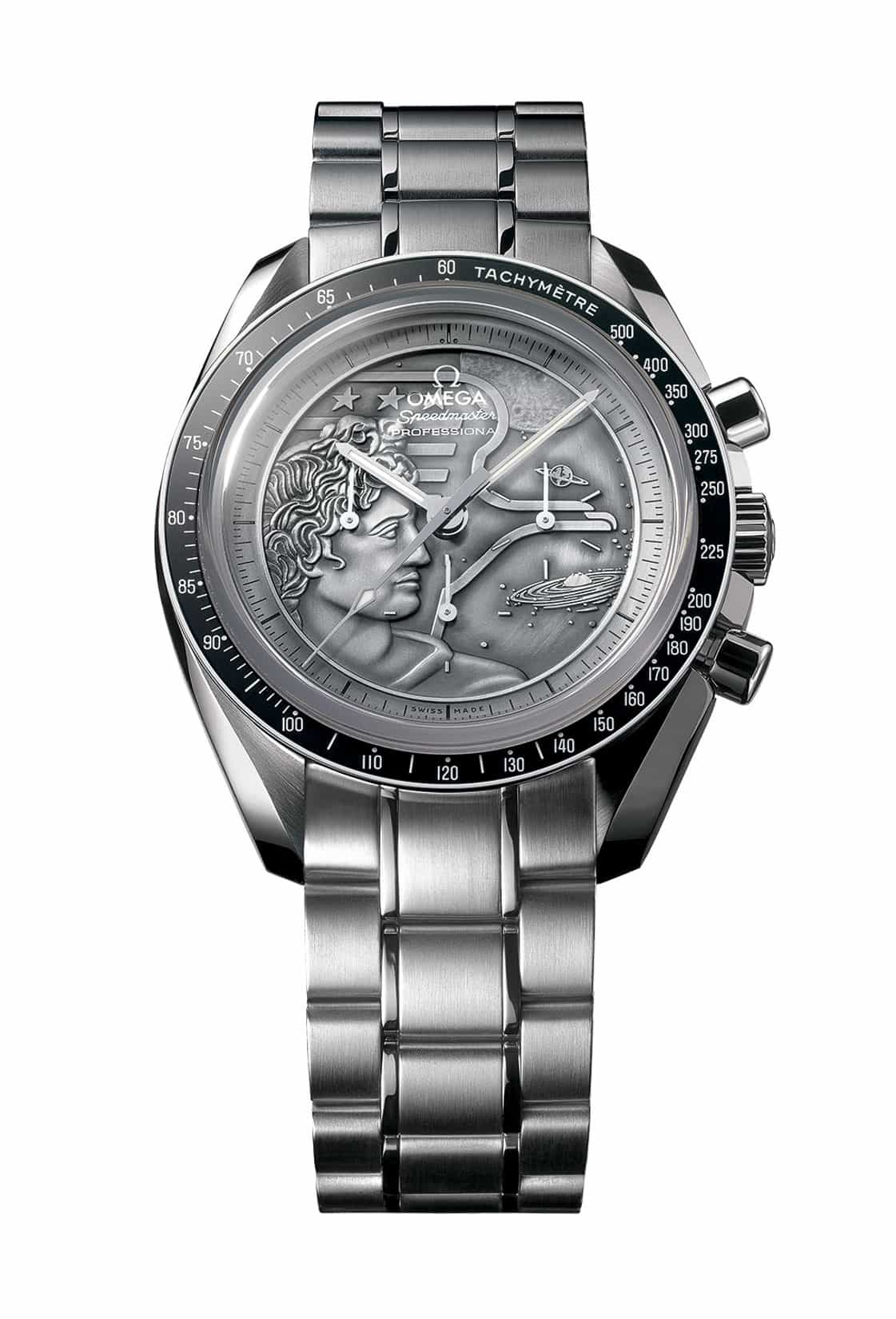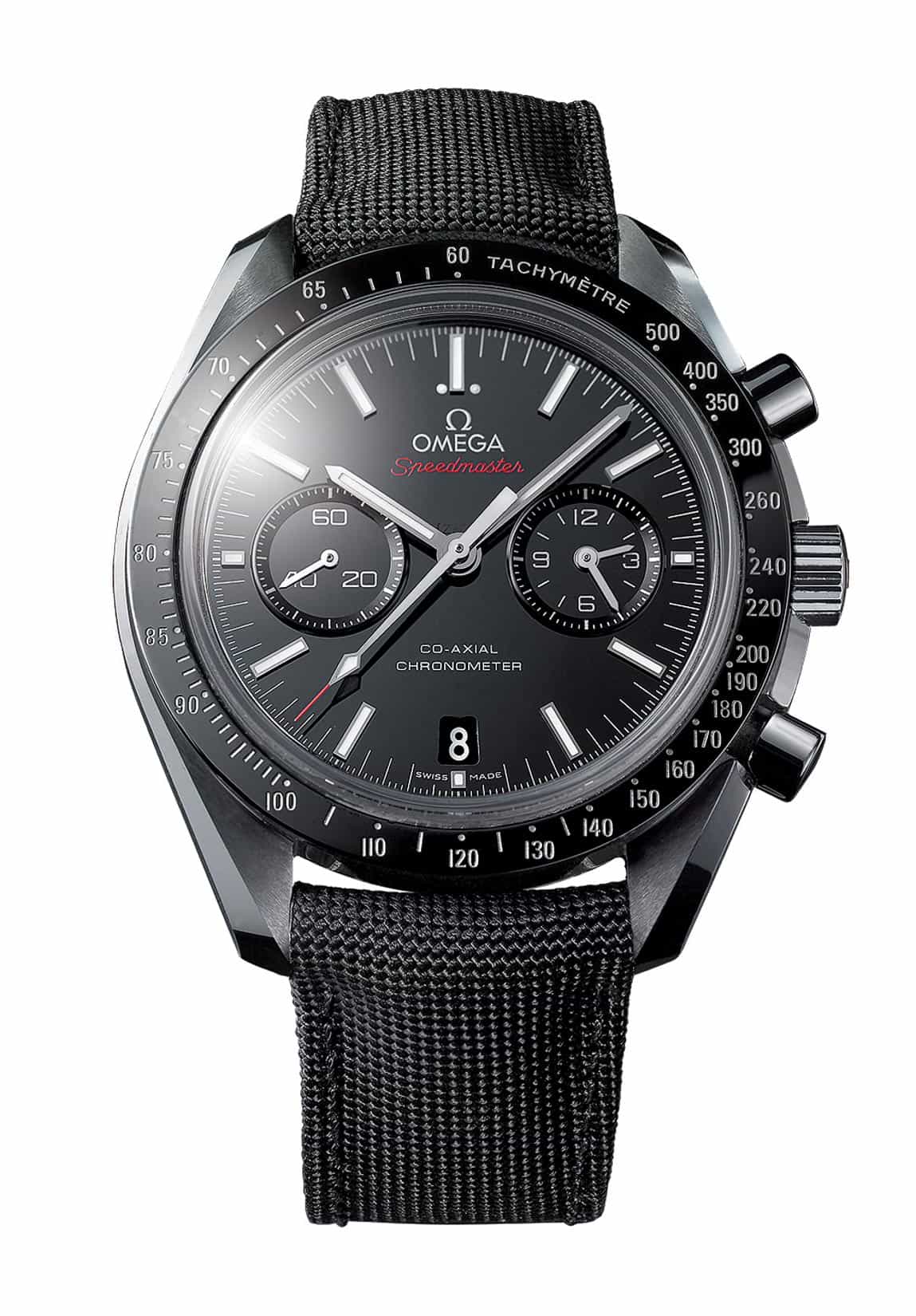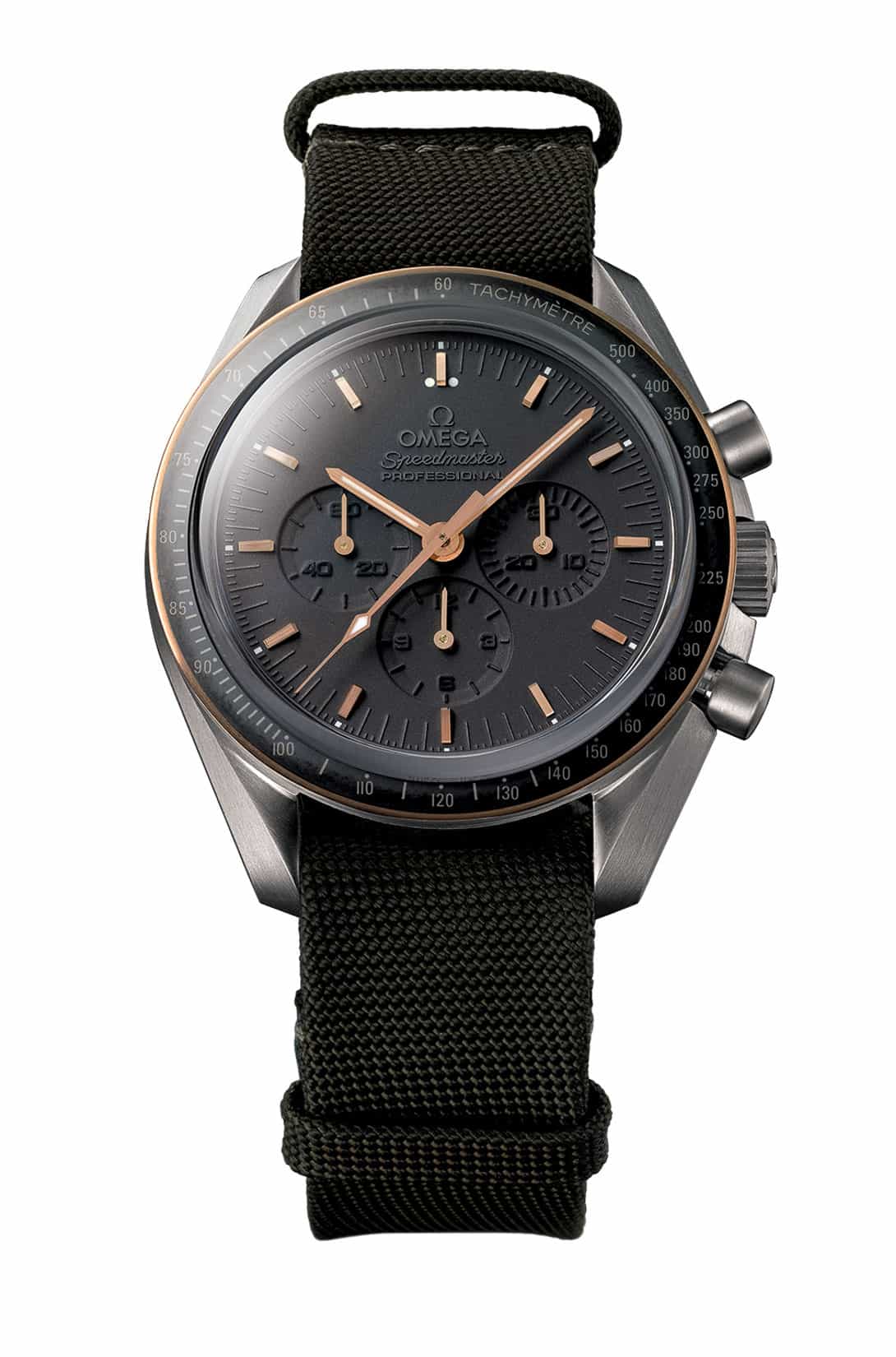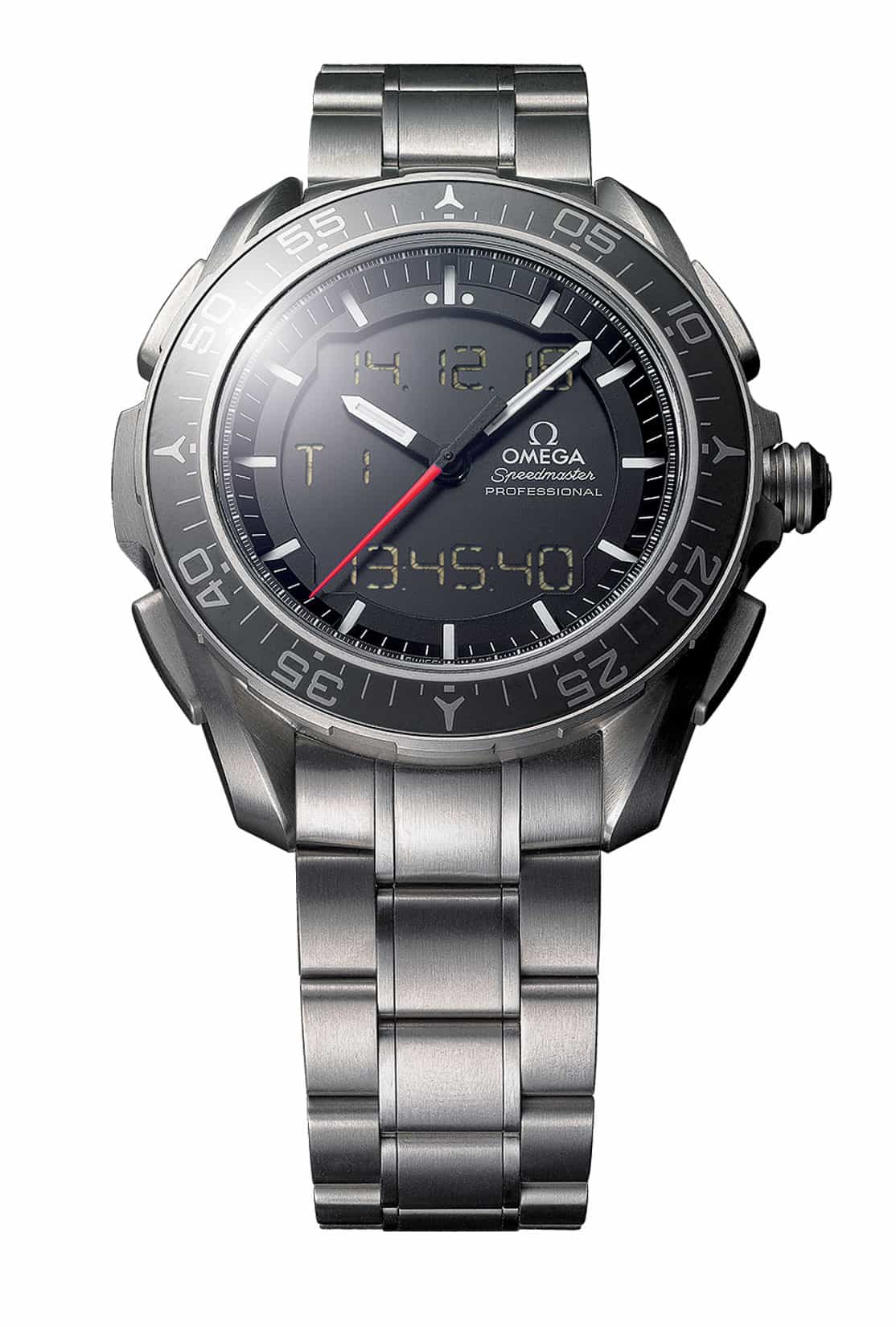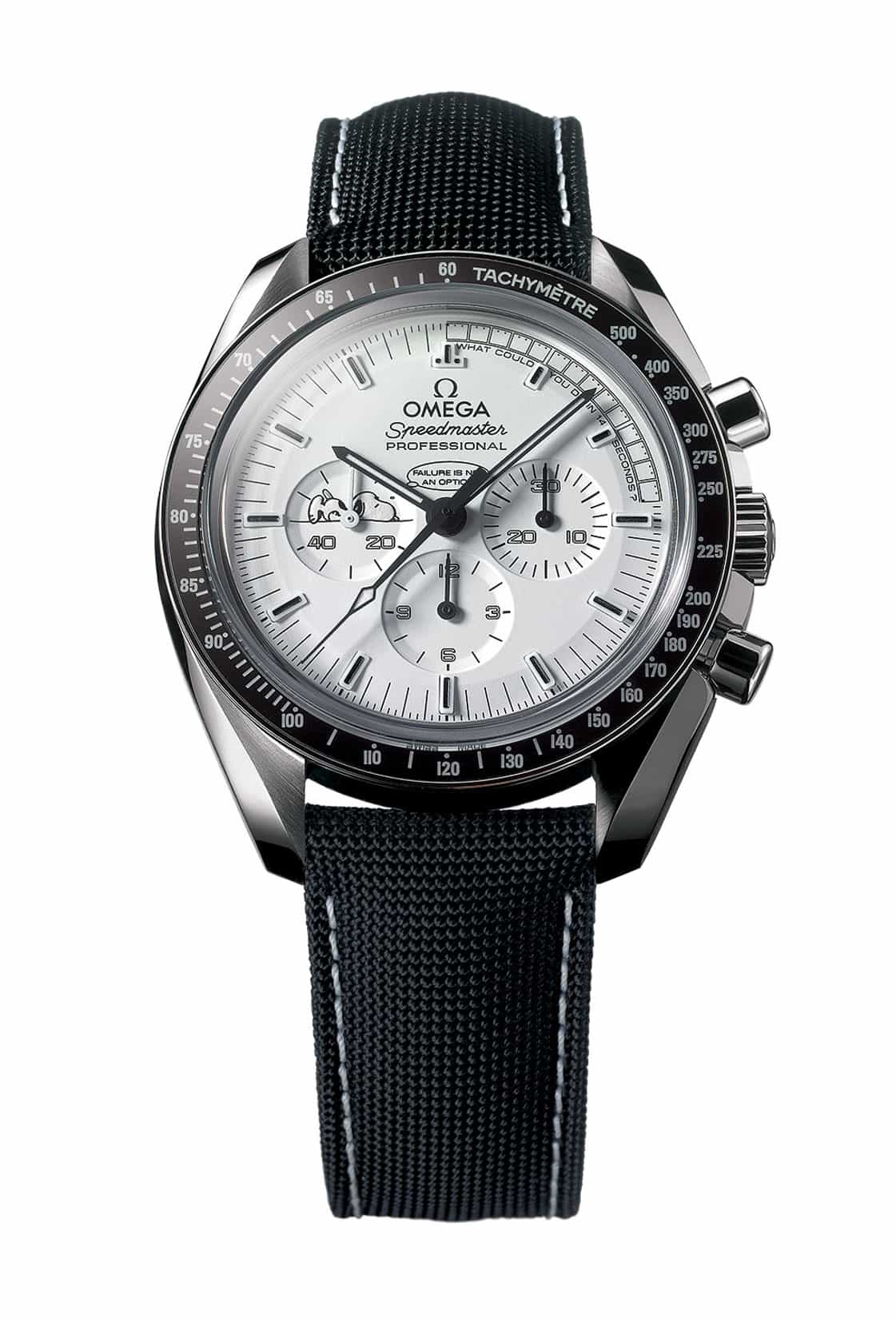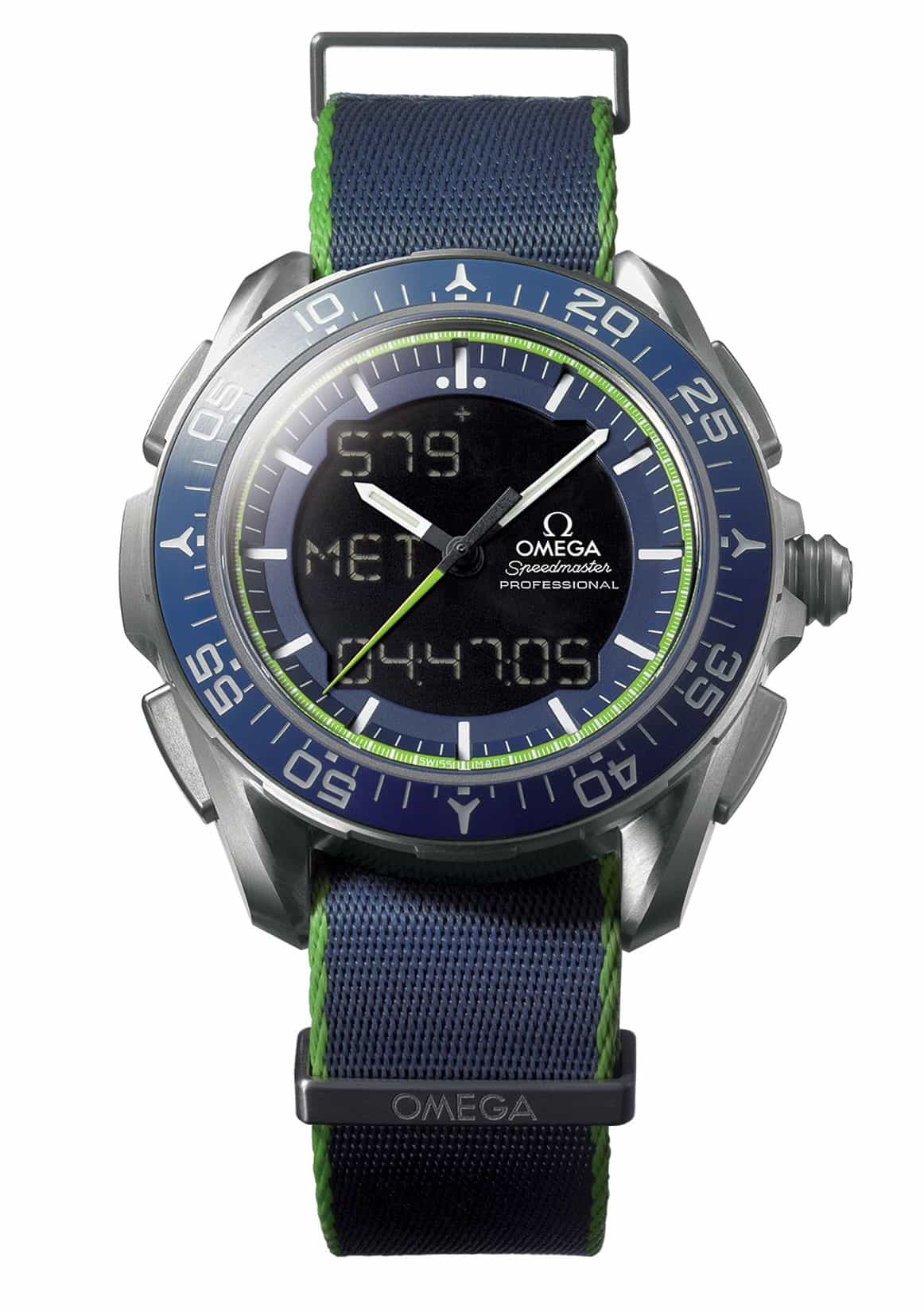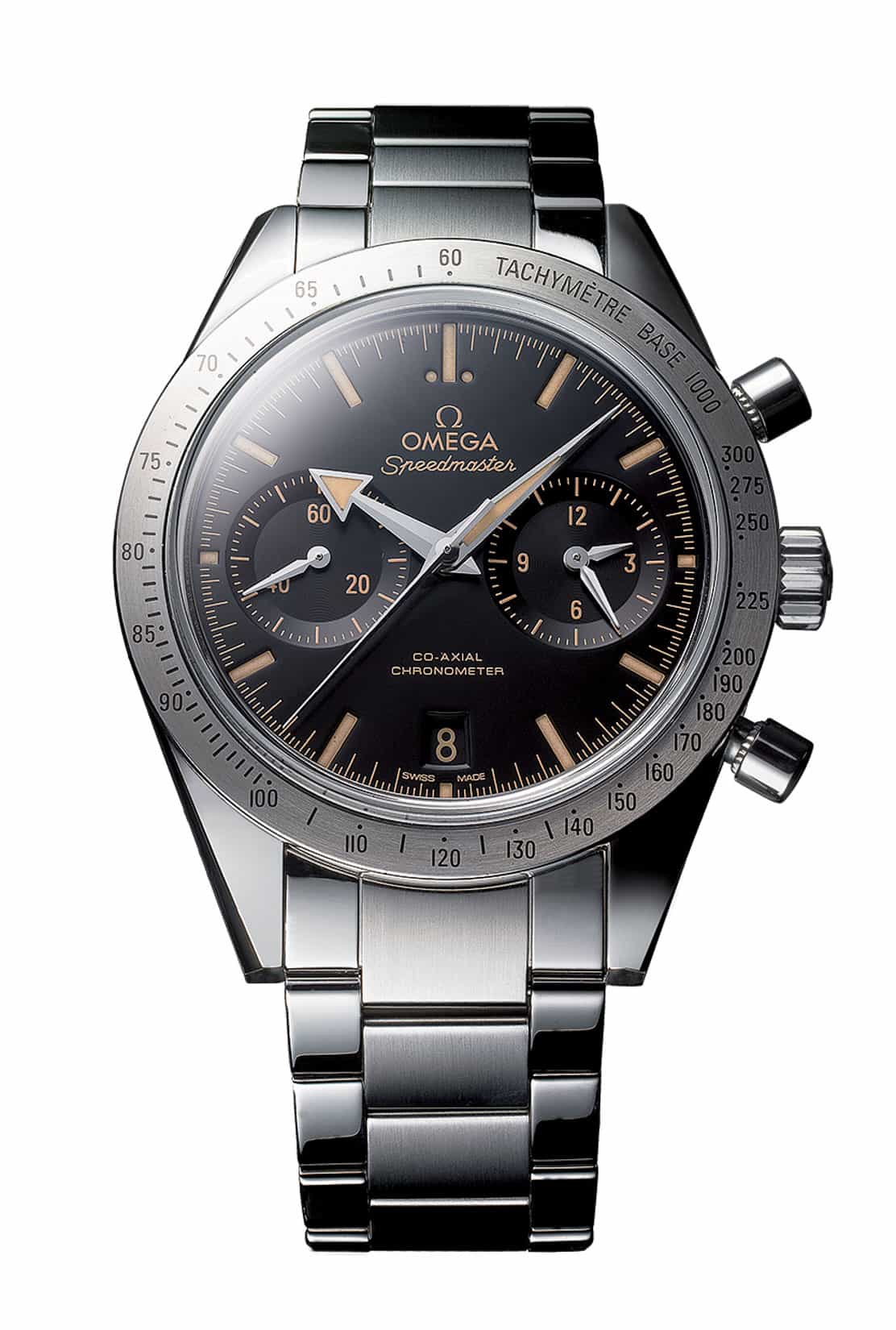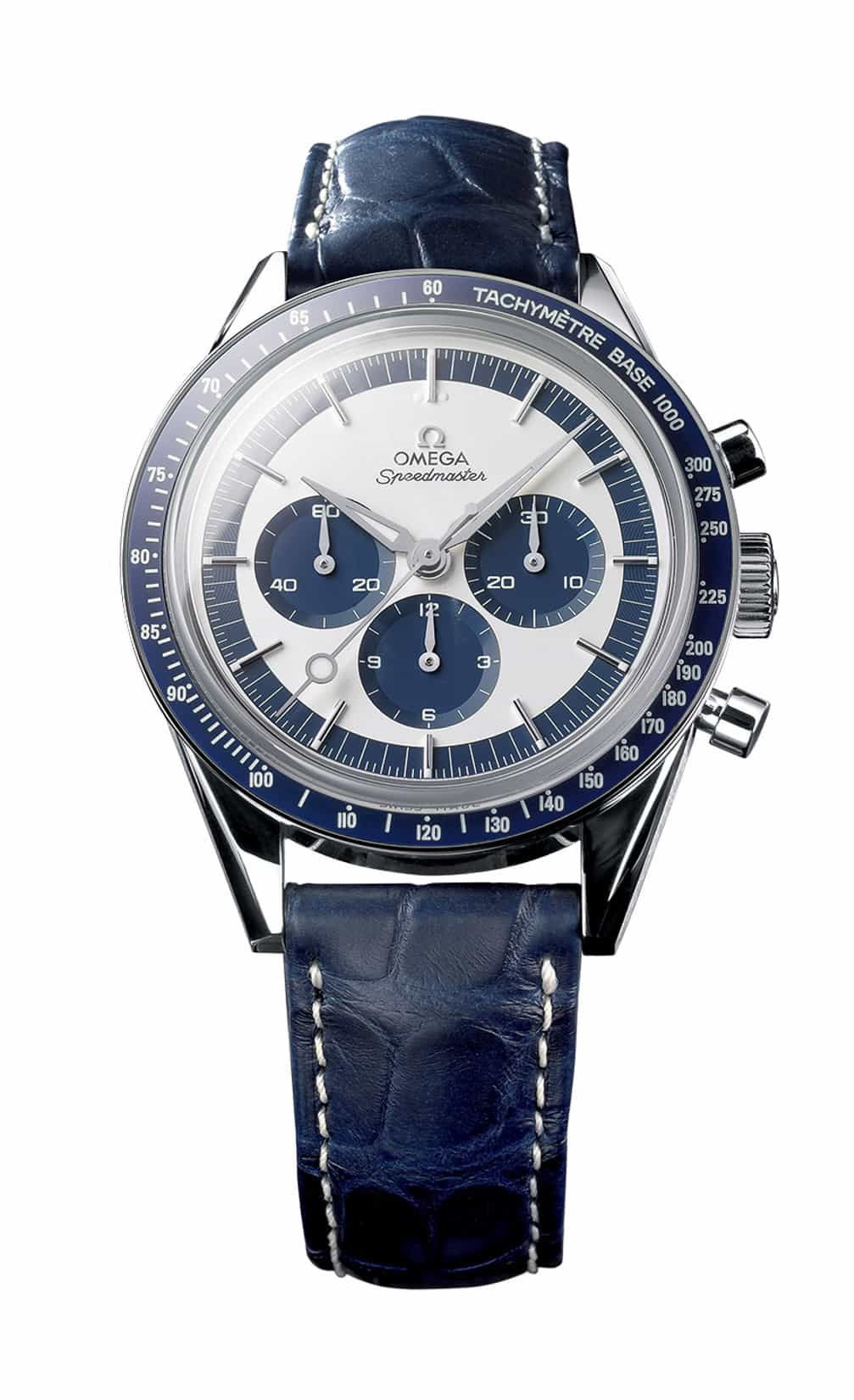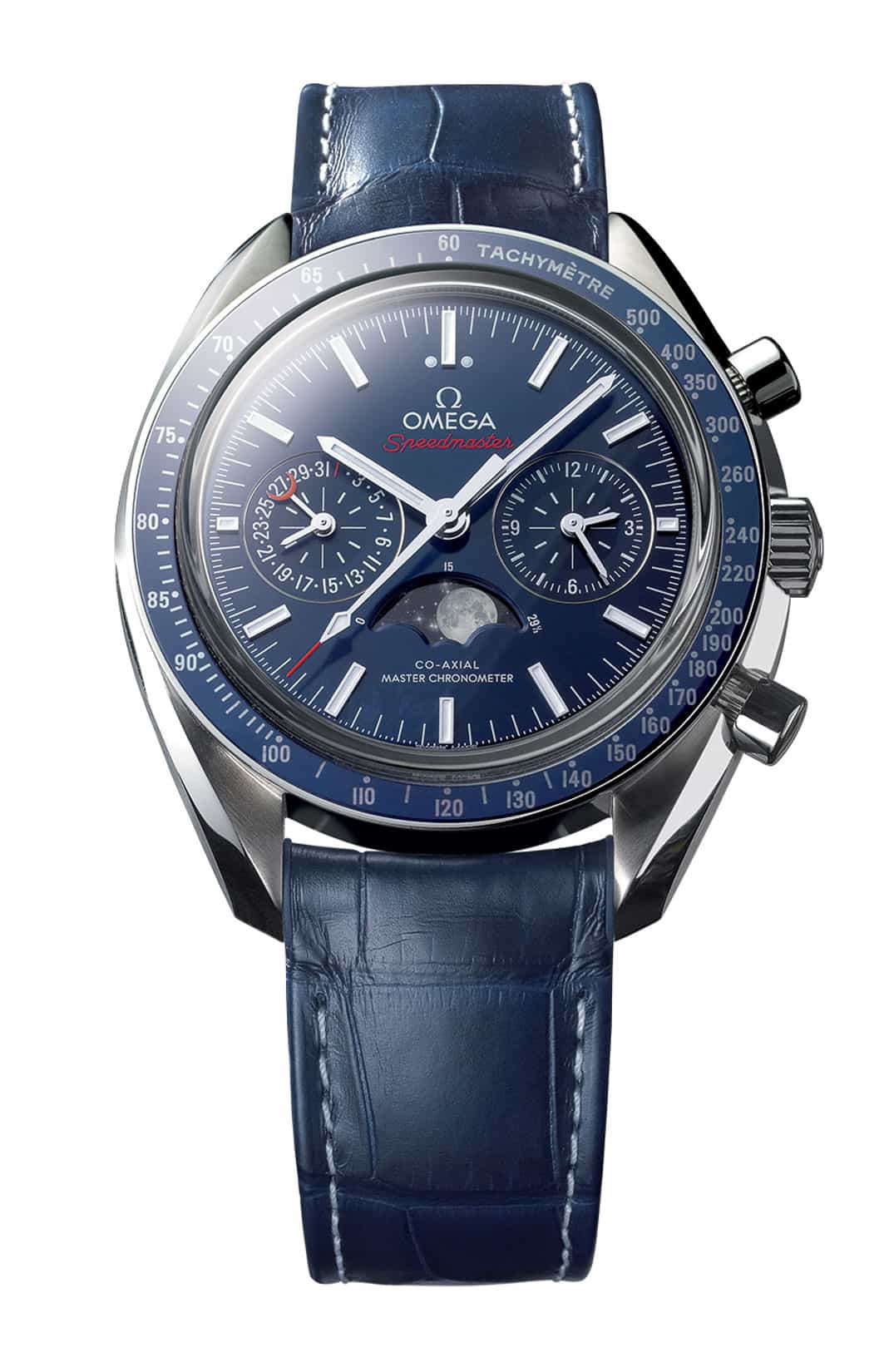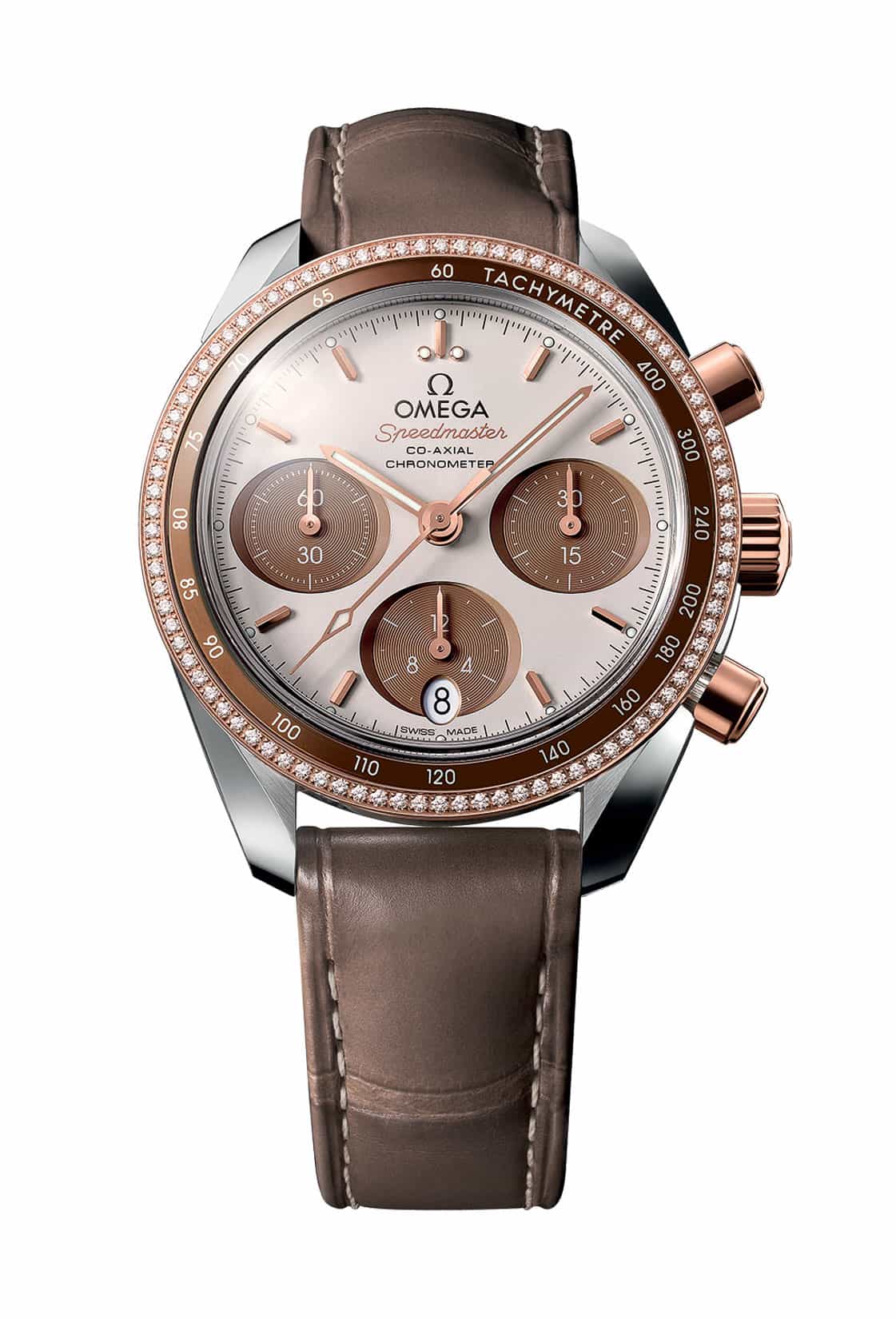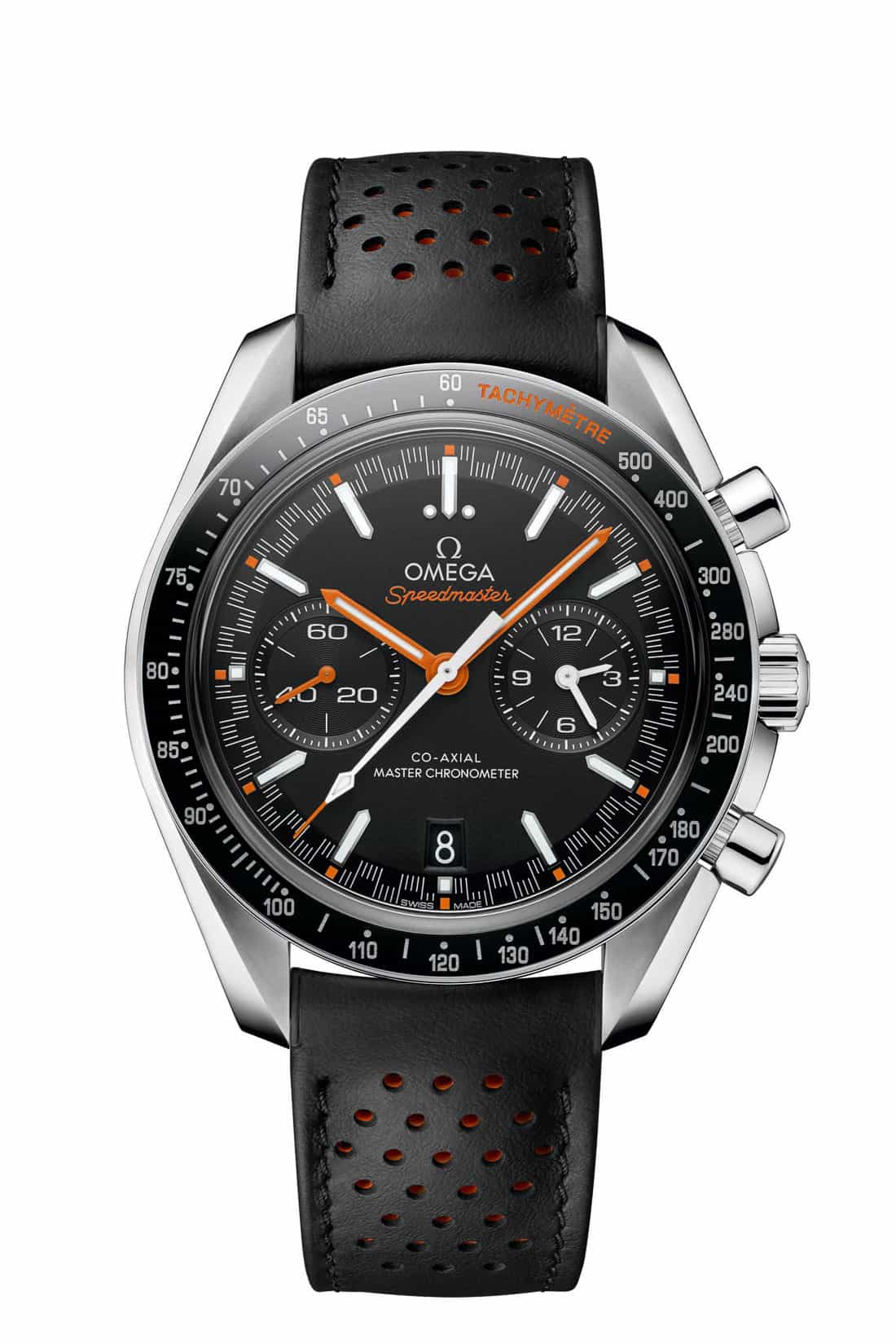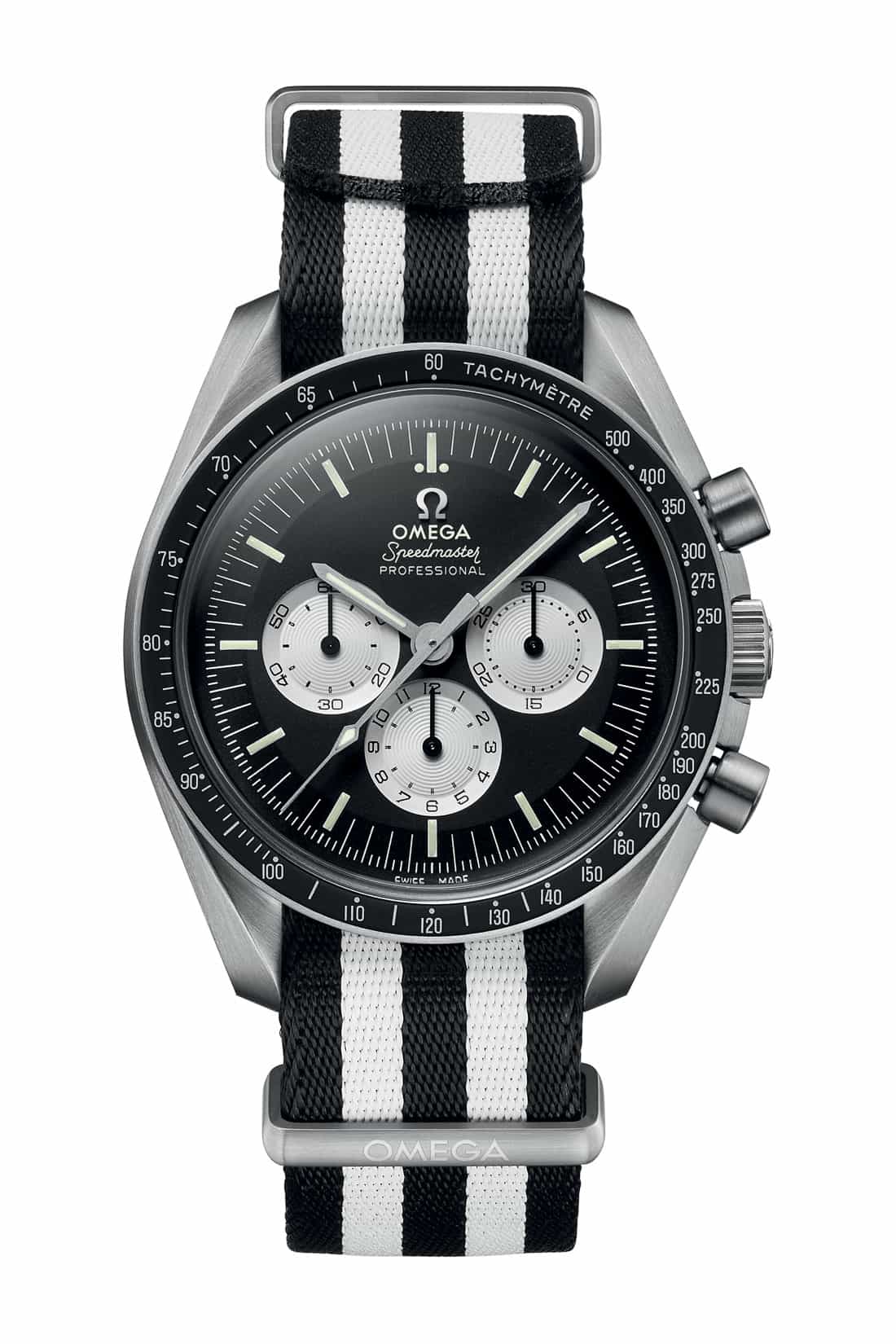Speedy Tuesday – 60 Years of Speedmaster – An Overview
2017 marks the year of the Speedmaster or more specifically: 60 years of Speedmaster. Omega sent an awesome press kit last week to journalists with an overview of 60 Speedmaster watches. A very neat overview of 60 different models, from the very first Speedmaster CK2915 ‘Broad Arrow’ till the latest, yet to be released, Speedy Tuesday edition.
60 Years of Speedmaster
With 60 watches, not all Speedmasters are covered, but Omega made a selection and it gives a very good overview of how the Speedmaster changed over the years and what ‘side steps’ have been made during the path. Not only you’ll find the Broad Arrow, CK2998, gold Apollo XI 1969 reference, Alaska Project II and the 1985 Moonphase for example, it also includes the Speedsonic with tuning fork movement and the Alaska IV with quartz movement and LCD display.
If you are member of the press, or close to the fire, you probably already have seen the 60th Anniversary Poster with all these models as well as the interview with Ben Clymer and myself about Speedmasters and Speedy Tuesday. If not, this ’60 Years of Speedmaster’ overview that we publish here today is based on that official Omega poster. You will find the poster later on this year hanging in Omega boutiques around the world. We will get back to the interviews in a few weeks time.
From the first reference in 1957 till the new references in 2017, here we go. All images and texts are copyright Omega. We added links to related articles on some of the watches featured here. Some texts have been changed/updated a bit with more background information.
1957 – Broad Arrow (reference CK2915)
The original timepiece in a legendary family. Called the “Broad Arrow” due to its distinctive hands, this was not only the first Speedmaster, it was also the first chronograph wristwatch in the world with its tachymeter scale on the bezel as opposed to printed on the dial – a feature designed for the benefit of racing car drivers. This is perhaps the most highly valued of all the Speedmasters and it signalled the start of a very special journey.
Click here for one of our in-depth articles on the CK2915.
1959 – First Omega in Space (reference CK2998)
The second version of the Speedmaster, this model differed from the original “BroadArrow”due to its black aluminium bezel, the lollipop seconds hand for Air Force orders, and “Alpha” style hour and minute hands. The model went on to be the first OMEGA worn in space on the wrist of Walter Schirra on October 3rd 1962. He chose the Speedmaster as his personal watch on the Sigma 7 mission of the Mercury programme. From this moment, the Speedmaster’s space legacy had begun.
Click here for one of our in-depth stories on the CK2998.
1963 – Third Generation (Tested and Qualified by NASA)
This Speedmaster model was the first watch to pass NASA’s rigorous testing for right qualification. A number of brands submitted their timepieces for testing, but only the Speedmaster survived. It was launched into legend when it was worn on Gemini and Apollo missions, serving the astronauts with the utmost precision and reliability. Interestingly, the first model to be qualified would also be one of the last worn on the moon in 1972.
Click here for one of our in-depth stories on the 105.003
1964 – Automovil Club Peruano (A.C.P)
Staying true to the Speedmaster’s racing origins, this rare model was specially ordered by the Automovil Club Peruano based in Lima, Peru. The chronograph was ideal for timing laps on the racetrack, which made the Speedmaster a popular choice for those in the motoring industry. With an order of just 50 pieces, this is a very rare piece, distinguished by the A.C.P lettering on the dial.
Click here for one of our stories on the Speedmaster ACP.
1965 – The Moonwatch
When Neil Armstrong and Buzz Aldrin stepped onto the lunar surface in 1969, this Speedmaster model became the first watch ever worn on the moon. In fact, it has since become the watch that has served on the most lunar missions. In design, the watch was the first Speedmaster featuring an asymmetrical case, done so to provide added protection for the crown and pushers.
Click here for one of our articles on the 105.012.
1968 – Direct link to the Moonwatch of today
Launched in 1968 with the new calibre 861, this model marked a major turning point in the history of the Speedmaster. Not only did the new movement provide extra innovation, but it was also the first, from 1970 onwards, to include the famous words; “FLIGHT-QUALIFIED BY NASA FOR ALL MANNED SPACE MISSIONS”, as well as “THE FIRST WATCH WORN ON THE MOON”.
Click here for one of our articles on the 145.022 references.
1968 – Racing Dial
The origins of the rare Racing Dial model are still shrouded in mystery, but it is generally accepted that the bicolor minute markers and orange hands and logo were created to make the chronograph easier to read. This particular model has inspired subsequent editions throughout the years including the 2004 limited series which was released in Japan.
Click here for one of our in-depth stories on the Speedmaster Racing models.
1968 – Speedmaster Ultraman
Having appeared in the Japanese sciencefiction TV show “The Return of Ultraman” in 1971, this rare model is most notably distinguished by its orange seconds hand. The creator of the Ultraman series, Eiji Tsuburaya, was known for including interesting watches in his productions, and this very uncommon Speedmaster is no exception. It is unknown how many genuine pieces still exist.
1969 – Apollo XI Gold Commemorative Edition
This was the first 18K gold Speedmaster, created in a numbered edition with a rare burgundy bezel. The first watches in this series were presented to 19 astronauts during a gala dinner in Houston, Texas on November 25th 1969 to celebrate the Apollo 11 moon landing. Three watches were also awarded posthumously to the three crew of Apollo I – Virgil Grissom, Ed White and Roger Chaffee.
Click here for one of our in-depth stories on this BA145.022.
1969 – Mark II – Redesign
This streamlined Speedmaster Mark II signalled the first redesign of OMEGA’s popular chronograph. Created in 1969, it extended the Speedmaster line with a brand new look and was available in stainless steel, 18K gold, or gold- capped versions with various dial and timing scale combinations. The MARK II, with its barrel shaped case and enhanced readability, was also the first Speedmaster that did not use hesalite crystal.
Click here for one of our in-depth stories on the 145.014.
1969 – Alaska Project Prototype
“Alaska” was OMEGA’s chosen code- name for everything that involved NASA and was always deemed top-secret. To meet the demands of the extreme temperatures of space, the “Alaska I” prototype had a removable anodized aluminium outer case or “thermal shield” and a pure titanium inner case making it the first wristwatch in the world to be cased in pure titanium. The white dial was added to better reflect the heat of the sun.
Click here for our in-depth story on the Alaska Project.
1971 – Mark III First Automatic Speedmaster
Launched in 1971, the Speedmaster Mark III, with its “pilot” case, was OMEGA’s first self-winding chronograph. The new calibre 1040 was a milestone for the brand and, in an advertisement from 1972, OMEGA famously stated, “After six landings on the moon, there was only one thing we could teach the Speedmaster. To wind itself”. Other interesting features include the cross shaped 60 minute chronograph hand and the unique 24- hour day/night indicator at 9 o’clock.
Click here for one of our in-depth Mark III stories.
1972 – Alaska Project II
Continuing its secret project to build the perfect space watch for NASA, OMEGA returned with a new prototype, this time in a Moonwatch style that retained some of the original features of the Alaska I model, including the large red heat shield. As before, the white dial was also retained to better reflect the heat of the sun. Other updates included rocket shaped subdial hands for balance, luminous markers and radial numerals on the subdials, and a 0 – 60 numbered bezel.
1973 – Speedsonic (Tuning fork)
This model is nicknamed the “lobster” due to the unusual shape of the bracelet which resembles the tail of a crustacean. With the growing desire for electronic watches, the Speedsonic was created with an innovative electromechanical movement to meet the demand for greater precision and reliability. Interestingly, the crown was deliberately made smaller in size to emphasize the reduced need to change time or date.
1973 – Speedmaster 125 Automatic Chronometer Chronograph
This model was the world’s first automatic chronograph to receive an official Chronometer Certification. It was released to celebrate the founding of the OMEGA brand in 1848 and 2,000 pieces were produced to mark the occasion. The watch’s adventurous spirit was embraced by the Russian cosmonaut Vladimir Dzhanibekov who wore the Speedmaster 125 in 1978 when he spent a total of 145 days and 16 hours in space.
Click here to read one of our in-depth stories on the Speedmaster 125.
1975 – Apollo – Soyuz
In 1975, Russian cosmonauts and American astronauts wore Speedmasters during a historic meeting in space that signalled the beginning of the end of the Cold War. Made in a limited edition of 500 pieces to mark this famous American-Soviet space rendezvous, this watch was the rst of the “Patch” watches. It has the mission patch at 12 o’clock in place of the OMEGA logo as well as longer markers on the dial and wider pushers.
Click here for our in-depth story on the 1975 Apollo-Soyuz.
1978 – Alaska Project III (Space Shuttle)
When OMEGA began work on the “Alaska III” project, its aim was to adapt the classic Moonwatch to include anti- reflective surfaces and an easy-to-read dial. The result included a brushed stainless steel case and large radial numerals on the subdials. A first batch of 56 pieces was delivered to NASA and they used them on board the Space Shuttle in the 1980s. A second batch soon followed.
Click here on our article on this 145.022 Alaska III.
1979 – Alaska IV Quartz Prototype
When the Speedmaster briefly went digital, this prototype was created for the astronauts at NASA based on the commercial models. The functions were still the same but it also included a BETA light system as an innovative way to illuminate the display without using a typical lightbulb. 12 pieces were sent to NASA astronauts who tested the watch in training and on the Space Shuttle. Ultimately, they chose not to adopt the watch.
1980 – Apollo XI Gold Commemorative Edition
Launched to celebrate the 1969 Apollo 11 mission in which the Speedmaster became the first watch worn on the moon, this yellow gold model was the first to use the 861L calibre and to have a glazed display back with sapphire crystal. Produced in a very small numbered series of around 300 pieces, the L following the calibre 861 indicated that the calibre was the “Luxury” version with a higher level of decoration than was normally afforded.
Click here for our take on this gold Speedmaster Pro from 1980.
1983 – First Bi-color Speedmaster
Bringing a two-tone style to the Speedmaster’s iconic design for the first time, this bicolor model was made using a steel case with a golden dial, silvered subdials and a bracelet made from steel and 14K gold. The exact number produced is unknown but very few are known to still exist.
Click here for one of our stories on this bi-color Speedmaster DD145.022.
1985 – Speedmaster Moonphase
Twenty years after the Speedmaster began preparing to go to the moon, the moon came to the Speedmaster. Known as the “Speedymoon”, this watch was produced in a series of 1,300 pieces and features a Moonphase complication with a painted moon and stars. It was the Speedmaster’s first Moonphase model and, on some rare Speedymoon models, a face is also painted on the moon.
Click here for one of our articles on this 1985 Speedmaster Moonphase watches.
1987 – Holy Grail Speedmaster
This was the first Speedmaster that combined an automatic movement with a Moonwatch case. OMEGA only produced the watch during two years. For Chuck Maddox, this was the perfect Speedmaster with its Lemania 5100 movement and functionality, put in the Speedmaster Professional case. This resulted in his nickname for this watch, the Holy Grail. For collectors, finding an original piece can become an obsession full of disappointment, joy and despair. In design, the case is slightly thicker to accommodate the automatic movement and the buttons and crown are closer fitting than the usual Moonwatch.
Click here for more information on Chuck Maddox’ Holy Grail.
1987 – Bi-color for Italy
Limited to 500 pieces, this timepiece was created for the Italian market. It featured a black dial with golden subdials, a yellow gold bezel and yellow gold-plated crown and pushers. Interestingly, the Speedmaster has a historical connection with Italy. The Seahorse medallion that features on the caseback of many Speedmaster and Seamaster models was in fact inspired by the Seahorse emblems found on the sides of gondolas in Venice, Italy.
1991 – Perpetual Calendar
This Speedmaster model was limited to 50 pieces. Although it celebrated the 700th anniversary of Switzerland, the watch was released exclusively for the Japanese market. As well as the chronograph function, it also includes a Moonphase and a perpetual calendar programmed up to the year 2100. It is often considered to be the most complicated watch OMEGA has ever produced in series.
Click here for our story on the Speedmaster Perpetual Calendar.
1992 – Skeleton
In this captivating Speedmaster model, OMEGA’s hand-crafted excellence is clear to see. The skeletonised design was limited to just 50 pieces, each with a transparent caseback. The inspiration was to celebrate the 50th anniversary of OMEGA’s 27 CHRO C12 project, which led to the creation of the calibre 321 that was used in the very first Speedmaster. In terms of highlighting innovation and excellence, this timepiece was a wonderful tribute.
1992 – First COSC Speedmaster Professional
OMEGA launched the 27 CHRO C12 project in 1942 which led to the creation of the calibre 321 that was used in the very first Speedmaster. To mark the 50th anniversary of this occasion, OMEGA produced this unique “Jubilee 27 CHRO C12” model in 1992. It was the first COSC-certified manual-wound Speedmaster and was a limited edition of 50 pieces.
Click here for one of our in-depth stories on these gold Speedmasters.
1995 – Apollo 13
The OMEGA Speedmaster served a life- saving role aboard Apollo 13 in 1970 when it helped the astronauts return safely to Earth. This 25th anniversary model is a favourite among collectors due to it being the first in a long series of Mission models that followed. It includes an Apollo 13 badge and was limited to 999 pieces.
Click here for our article on the Apollo 13 limited edition.
1995 – MIR 365 Days
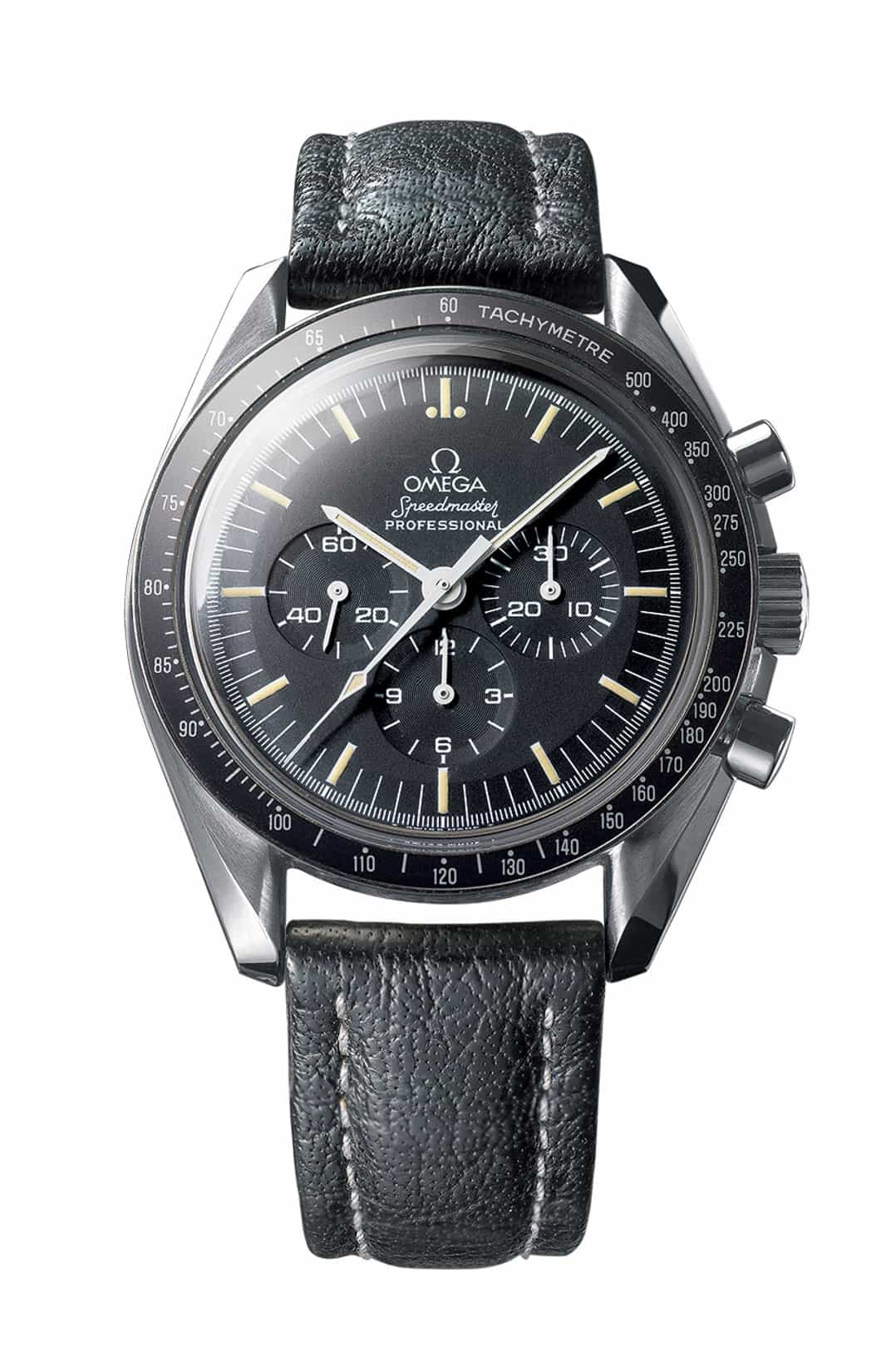 In 1990, ten standard Speedmaster Moonwatches were kept aboard the orbiting MIR Space Station for 90 days to test the effects of zero gravity on the watch. Two years later, a second series spend 365 days on the station in a further experiment. 28 of these history- making watches were sold in 1995. On the caseback are the words “365 DAYS ON BOARD SPACE STATION MIR, JULY 1993 – JULY 1994”.
In 1990, ten standard Speedmaster Moonwatches were kept aboard the orbiting MIR Space Station for 90 days to test the effects of zero gravity on the watch. Two years later, a second series spend 365 days on the station in a further experiment. 28 of these history- making watches were sold in 1995. On the caseback are the words “365 DAYS ON BOARD SPACE STATION MIR, JULY 1993 – JULY 1994”.
Click here for our article on the Speedmaster MIR.
1996 – Reduced Racing ‘Schumacher’
This striking model is notable for its “younger aesthetics” and was produced in both red and yellow versions. The piece was launched by racing legend Michael Schumacher who had become a new OMEGA ambassador in 1996. As well as featuring a racing-style minute track, the watch had a rubber presentation box that resembled the tyres of F1 cars and featured Schumacher’s signature in white.
Click here for one of our articles on the Speedmaster Racing.
1997 – ’57 Replica / Relaunch Edition
With the exact same dial, bezel, hands and logo as the famous “Broad Arrow” of 1957, this watch, sometimes to referred to as the “Replica”, was the first to be included in the “Missions” set of 1997 which marked the 40th anniversary of the Speedmaster. Along with this watch, the set contained 22 other Speedmasters each with a different mission patch on the dial.
Click here for our in-depth story on the Speedmaster ’57 Replica.
1997 – Golden Panda
40 of these Speedmasters were created for the Japanese market. Thanks to the silvery-white dial and black minute scale and subdials, the watch closely resembled the face of a panda, which gave it its memorable nickname. Combined with a yellow gold case, it has become a popular collector’s item.
Click here for our article on this Gold Panda.
1997 – 40th Anniversary
To celebrate 40 years of the iconic Speedmaster, OMEGA released this model in 1997 featuring a cream dial and front glass made from sapphire crystal – which was unusual for the time. Limited to 500 pieces and exclusive to Italy, it was also one of the first models with hands and a dial coated in LumiNova.
Click here for our article on the Speedmaster Albino.
1998 – Speedmaster X-33
Known as the “Mars Watch”, the X-33 was designed for the possibility of man landing on the red planet. It took five years of collaborative development between OMEGA and the world’s major space agencies, as well as the USN “Blue Angels” and the USAF “Thunderbirds”. With its futuristic design, it was worn on board NASA’s space shuttles and the Russia MIR Space Station.
Click here for one of our articles on the X-33.
1999 – Apollo XI Anniversary White Gold
Launched in 1999 to mark the 30th anniversary of Apollo 11, this model was the second Speedmaster Professional to have a moonphase indication and the first Speedmaster Moonphase to be created in gold or, in fact, any other metal other than stainless steel. This white gold model featured a silver dial and was available exclusively on a leather strap that included a white gold buckle.
2000 – Apollo – Soyuz
With their spacecraft docking together in space in 1975, the Apollo and Soyuz commanders shook hands through an open hatch and signaled a bright future for the two nations. This gold watch was created to mark the 25th anniversary of that landmark event and was limited to 50 pieces. The mission name appears in English and Cyrillic in the counter at 6 o’clock and a special dedication inscription is included on the caseback.
2003 – Snoopy Award
This model commemorates the “Silver Snoopy Award” that OMEGA received in 1970 for helping to get the Apollo 13 crew safely home. The watch has a representation of the “Eyes on the Stars” patch on the subsidiary small seconds dial as well as reverse printed on the sapphire crystal caseback. It was limited to 5,441 pieces referencing the length of the mission – 142 hours, 54 minutes and 41 seconds.
Click here for our article on the Snoopy.
2003 – From Moon to Mars
Built for the next great human destination. This model coincided with the American announcement that they planned to build a permanent space station on the moon before 2020 to act as a launch site for future manned missions to Mars. Celebrating those celestial bodies, the watch has counters printed with images of the moon, Earth and Mars.
Click here for our article on the Speedmaster Moon to Mars.
2004 – Apollo XI 35h Anniversary
Created to mark the 35th anniversary of the Apollo 11 mission when the OMEGA Speedmaster became the first watch worn on the moon, this watch was produced in a limited edition of 3,500 pieces. It features the date July 20, 1969 printed in red in the upper half of the dial and the Apollo 11 patch reverse-printed on the sapphire caseback.
Click here for one of our stories on the Apollo XI 35th anniversary Speedmaster.
2005 – Gemini IV
In 1965, Edward White became the first American astronaut to walk in space. With a Speedmaster strapped to his wrist, it also became the first time that an OMEGA ventured outside the spacecraft. This Speedmaster was created in a limited edition of 2,005 pieces to mark the 40th anniversary of that Gemini IV mission. The dial of the watch is blue, along with the bezel, and on the other side, the Gemini IV patch is printed on the sapphire caseback.
Click here for our article on the Speedmaster Gemini IV.
2005 – Co-Axial GMT
OMEGA has always been known for its pioneering innovation and dedication to the art of watchmaking. In its quest to perfect the movement, this Speedmaster was the first to include the Co-Axial escapement, which revolutionised precision and reliability. As well as this, the watch saw a return of the iconic “Broad Arrow” hands, a red-tipped GMT hand, and a 1 – 23 GMT hour ring that beautifully fitted between the hour markers.
2006 – Apollo 15 35th Anniversary
This Speedmaster was created in a limited edition of 1,971 pieces to mark the 35th anniversary of Apollo 15. It was during this mission that the Lunar Rover Vehicle was used for the first time. Its special details include 18-carat pink gold push buttons and a mission patch etched on the sapphire crystal caseback with three birds representing the astronauts.
2007 – 50th Anniversary Patch
Created in a limited edition of 5,957 pieces to commemorate the birth of the Speedmaster in 1957, this watch has a golden Seahorse printed on the dial, representing the emblem with which the Speedmaster is most closely associated. The OMEGA logo is printed in red and the watch was presented in a black wooden box with a painted 50th Anniversary badge.
Click here for our article on the 1957 – 2007 commemorative edition Speedmaster.
2008 – Beijing Olympics
As the Official Timekeeper of the Olympic Games Beijing 2008, OMEGA celebrated its role by creating this unique Speedmaster 5-Counters Chronograph. For the first time ever, five counters were displayed on the dial of a mechanical wristwatch, arranged in the form of the iconic Olympic rings. The functions included a small seconds counter, a 7-day chronograph recorder, a day indicator, a 12-hour chronograph recorder and a 30-minute chronograph recorder.
2008 – Alaska Project Re-edition
In this timepiece, one of OMEGA’s most innovative dreams became reality. Created in a limited edition of 1,970 pieces in 2008, the watch is based on the “Alaska II” project which used a “standard” Speedmaster with a modi ed dial and hands in conjunction with an outer anodized aluminium “thermal shield”. This allowed the watch to withstand temperatures, in lunar or spatial atmospheres, ranging from -148C to +260C.
Click here for one of our stories on the Alaska 2008 re-edition.
2008 – HB-SIA GMT – Solar Impulse
The Solar Impulse project captured the world’s imagination with its ambitious aim of flying around the Earth in a plane powered only by the sun. OMEGA was a Main Partner of the mission and produced this watch named after the Solar Impulse prototype plane. The design took inspiration from the plane itself, with a titanium case and a dial made of black carbon fibre, similar to the HB-SIA’s composite covering. A central GMT hand, which completes one rotation in 24 hours, can be used to read a second time zone.
2009 – Apollo 11 40th Anniversary
Made in a limited edition of 69 examples to mark the 40th anniversary of man’s conquest of the moon, this Speedmaster model made in platinum has a unique yellow gold medallion on the small seconds counter representing, in high relief, the mission patch of Apollo 11. This is repeated, again in gold, on the caseback.
Click here for our article on the Apollo XI 40th Anniversary edition.
2010 – Apollo – Soyuz Meteorite
With a dial and subdials made from slices of meteorite, this Speedmaster was built from a real piece of space. It commemorates the historic moment when astronaut Thomas P. Stafford (USA) and cosmonaut Alexei A. Leonov (USSR) shook hands in space in 1975. The caseback features two spacecraft from both the USA and the Soviet Union and the names of the cosmonauts and astronauts involved.
Click here for our article on the Apollo – Soyuz Meteorite.
2011 – Apollo 15 40th Anniversary
This watch celebrates the 40th anniversary of the Apollo 15 moon landing and is included in a numbered series of 1,971 pieces. The red, white and blue colours on the dial were inspired by the mission patch and the caseback includes a superb engraving of the Lunar Roving Vehicle which was used on the moon for the first time during the mission.
Click here for our article on the Apollo 15 40th Anniversary edition.
2012 – Apollo 17 40th Anniversary
This Limited Edition timepiece is one of OMEGA’s most iconic Speedmasters and celebrates the 40th anniversary of the final lunar landing in December 1972. It features a striking and unique 925 silver dial embossed with the same design as the Apollo XVII patch which represents Mankind, the future, the image of Apollo and the United States flag. The watch was limited to just 1,972 pieces.
Click here for our article on the Apollo 17 edition.
2013 – Dark Side of the Moon
Emblematic of OMEGA’s bold style, innovation and pioneering spirit, the “Dark Side of the Moon” brought the Moonwatch to a new generation. Crafted from a single block of sleek ceramic, the sporty model also features a black ceramic dial with 18K white gold hands and a nylon fabric strap. The incredible production techniques used to create this watch have been some of OMEGA’s most celebrated achievements.
Click here for one of our articles on the Dark Side of the Moon.
2014 – Apollo 11 45th Anniversary
On a brown “NATO” strap, this watch commemorates the 45th anniversary of Apollo 11. It uses the colours of the moon and the lunar and command modules and features a brushed case with a touch of gold. It has a black PVD dial and a lightweight grade 2 titanium case – inspired by the titanium ore that covers the moon’s surface.
Click here for our article on the Apollo XI 45th Anniversary edition.
2014 – Skywalker X-33
Designed especially for space explorers, the Speedmaster Skywalker is an innovative upgrade of the Speedmaster Professional X-33 released in 1998. The new model, powered by an advanced quartz calibre, was thoroughly tested and approved by the European Space Agency for inclusion in all of its missions. Built from titanium, it includes a ceramic bezel with a chromium nitride scale and an LCD display with an electroluminescent backlight.
Click here for our story on the X-33 SkyWalker.
2015 – Silver Snoopy Award – Apollo 13 45th Anniversary
A tribute to the 45th anniversary of Apollo 13 and the Silver Snoopy Award that OMEGA subsequently received from NASA, this watch features a white dial with special comic strip inscriptions and a small Snoopy decorating the 9 o’clock sub-dial. On the caseback, a 925 silver Snoopy medallion is surrounded by alluring dark blue enamel.
Click here for one of our articles on the Silver Snoopy Award.
2015 – X-33 Solar Impulse 2
The Speedmaster Skywalker X-33 Solar Impulse Limited Edition celebrates OMEGA’s partnership with Solar Impulse, whose team succeeded in circling the globe in a solar powered airplane in 2016. Made from titanium and presented on a NATO strap, the quartz watch is particularly lightweight and features a ceramic bezel with a chromium nitride scale. There are skeletonized black and white hour and minute hands and a central seconds hand distinguished by green and black colouring.
Click here for our in-depth story on the X-33 Solar Impulse 2.
2015 – Speedmaster’57 Caliber 9300
The Speedmaster ‘57 is an innovative wristwatch that salutes its legendary ancestor and has been designed to experience new adventures of its very own. The model recalled a number of features similar to its famous ancestor including the black dial with beige indications, straight lugs, and a brushed metallic bezel with a tachymeter scale. George Clooney proudly wore this model for the international advertising campaign in 2015.
Click here for one of our articles on the caliber 9300 Speedmaster’57.
2016 – CK2998
The original OMEGA CK2998 was released in 1959 and has become one of the world’s most sought-after vintage Speedmasters. This watch used the classic model as inspiration, with classic Alpha and lollipop hands, a symmetrical steel case and three subdials in blue. This colour theme continues on the bezel, minutes track and leather strap.
Click here for our article on the Speedmaster CK2998.
2016 – Master Chronometer Moonphase
The first Speedmaster certified as a Master Chronometer, this blue Moonphase timepiece reaches the industry’s highest standards of precision and performance as approved by METAS – another important milestone in OMEGA’s superb history of watchmaking. Most incredibly, the image of the moon on this watch is as detailed as a NASA photograph. Zoom in close and you’ll see an astronaut’s footprint.
Click here for one of our articles on the Speedmaster Master Chronometer Moonphase.
2017 – Speedmaster 38mm
The refined 38 mm collection retains the famous look and 60 year heritage of the Speedmaster, but also updates it with a pure and new aesthetic touch. For this ladies’ model, the diamond-paved bezel also includes a tachymeter scale on a brown aluminium ring. This dual design has enabled OMEGA to add the elegance of diamonds and also retain the sporty DNA of the original Speedmaster models.
2017 – Speedmaster Racing Master Chronometer
The distinctive minute-track style on this stainless steel watch first appeared on a 1968 Speedmaster model. Linked to the Speedmaster’s motor racing heritage, it returns again, this time on a matt-black dial. Other features on the dial include the orange markings and bevelled 18K white gold arrowhead indexes. The perforated rubber strap is another new addition that enhances the innovation.
Click here for our article on this Speedmaster Racing.
2017 – Speedy Tuesday
In 2012, an online community of #SpeedyTuesday fans began to grow around the world, with Speedmaster pictures and comments being shared every week. In tribute to these Speedmaster devotees, OMEGA produced this new Limited Edition model to celebrate the 5th anniversary. It marks the first OMEGA watch marketed purely through social media and sold exclusively online, and the design was based on several vintage models from the past including the “Alaska III”.
Click here for our article on the Speedy Tuesday limited edition.
We hope you enjoyed this overview that is based on their Speedmaster 60th Anniversary poster and press kit. We are also very proud to see the Speedmaster Speedy Tuesday limited edition featured in there.

